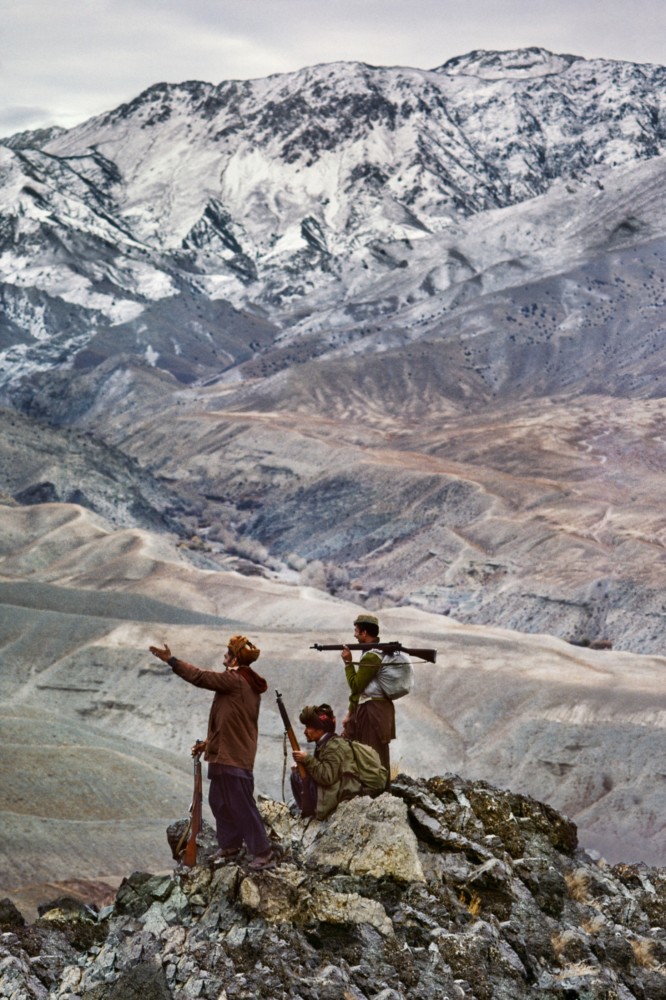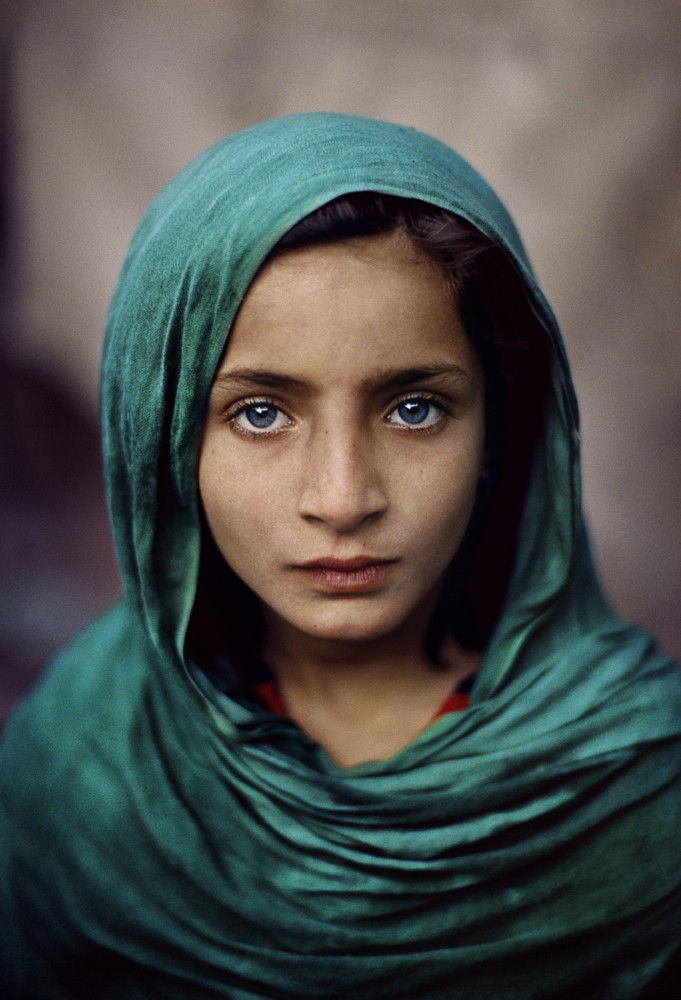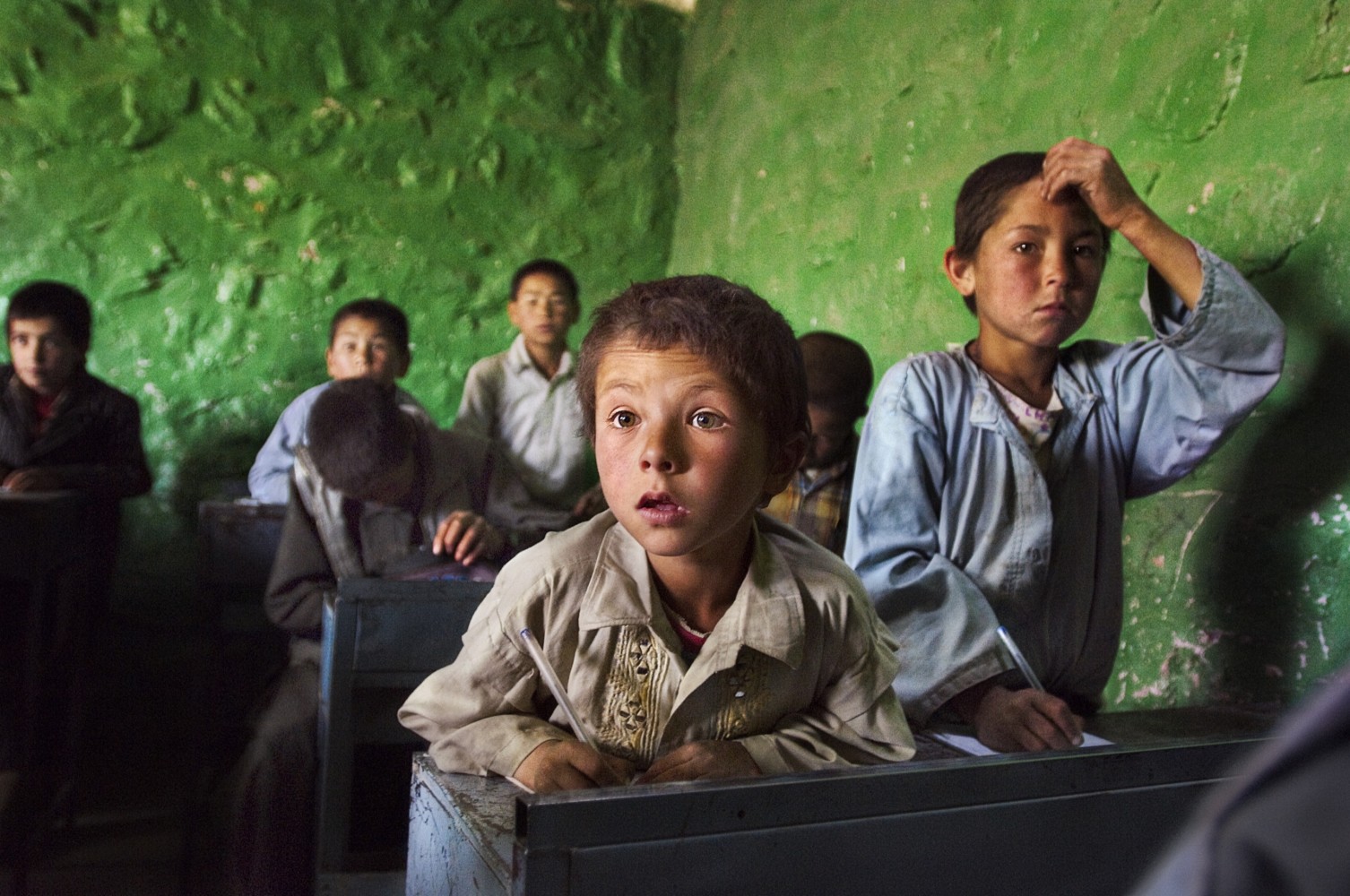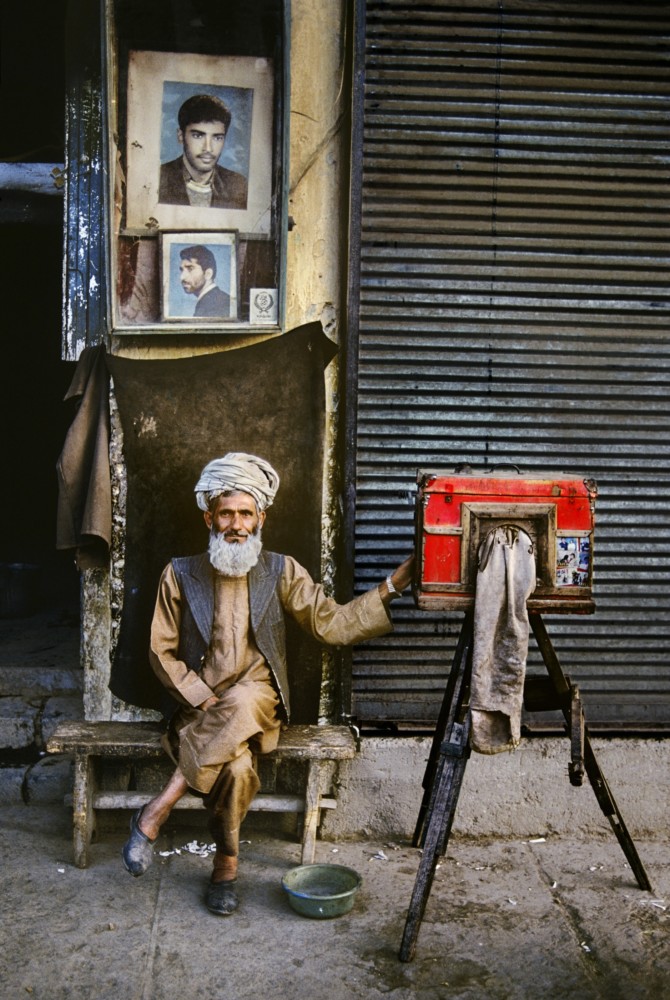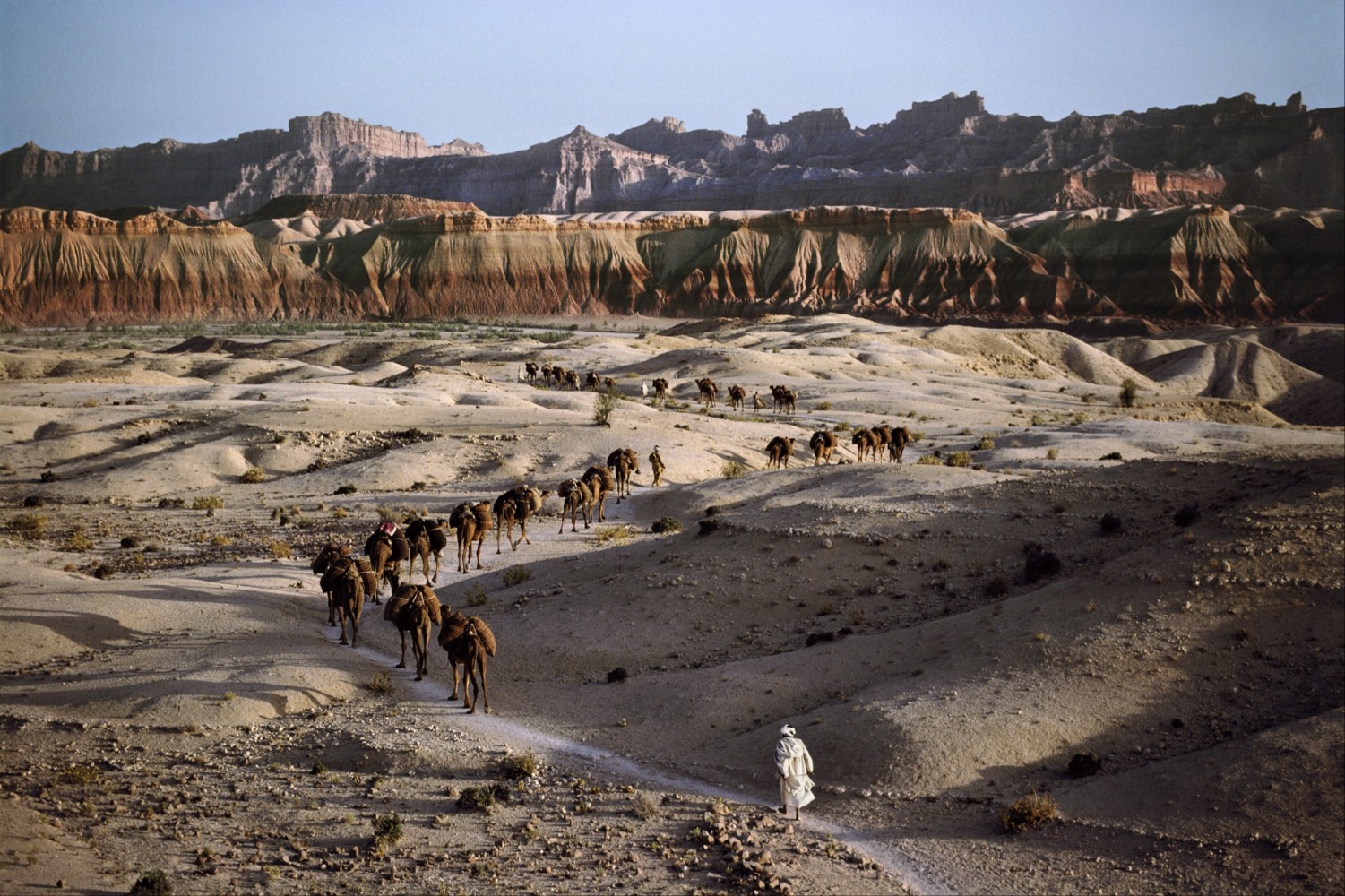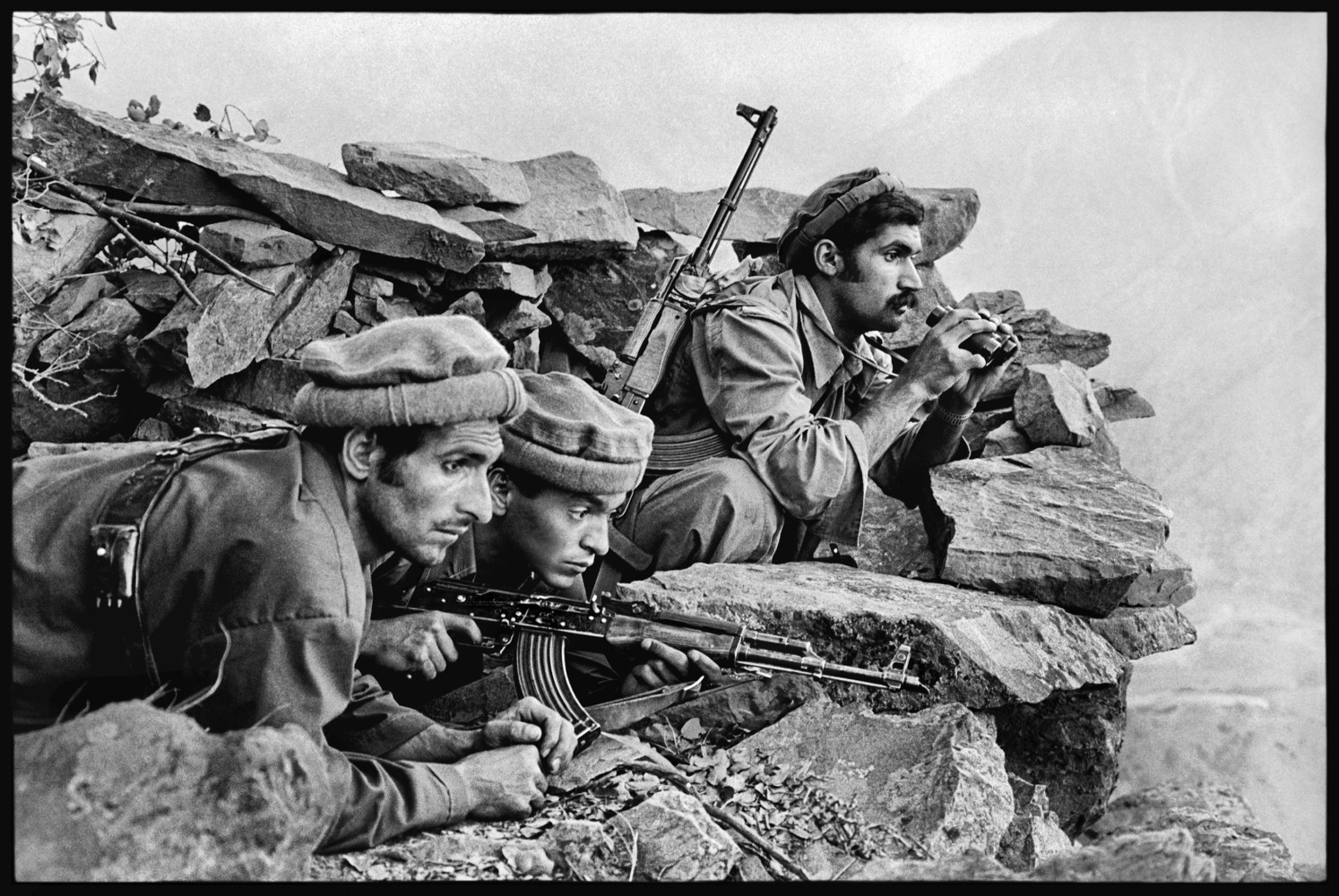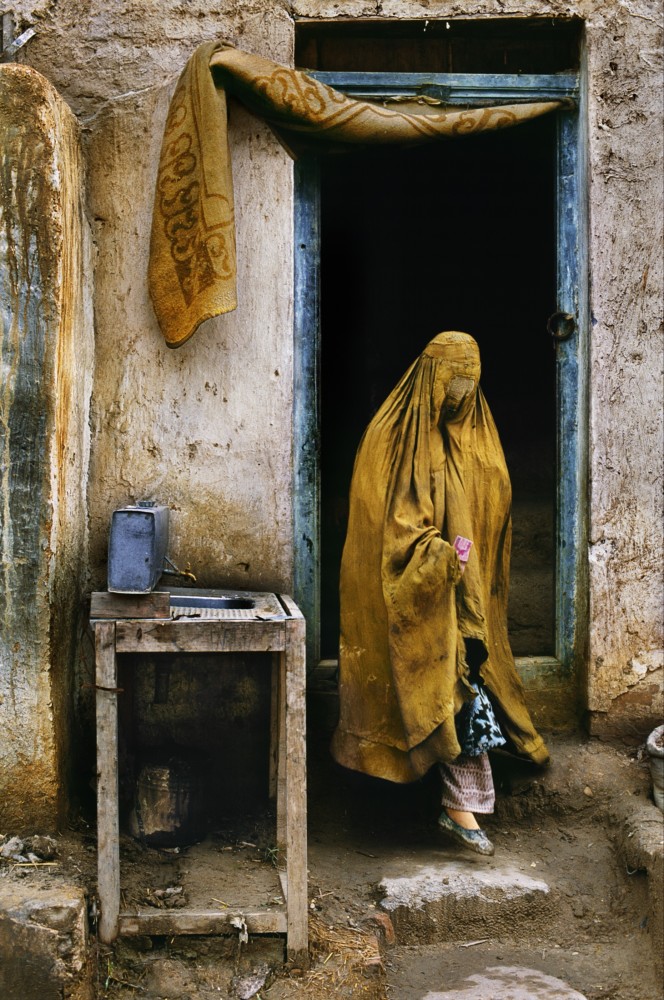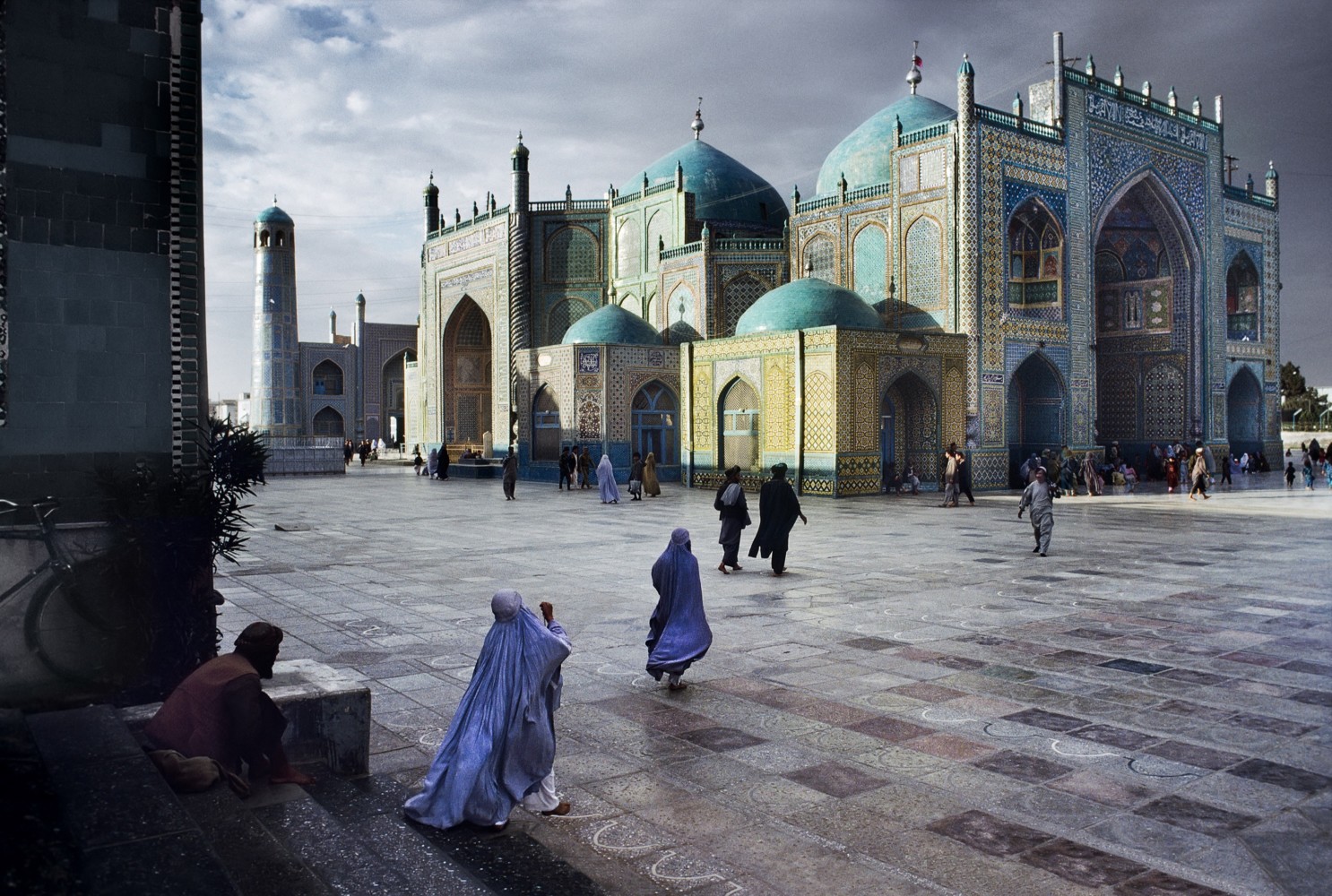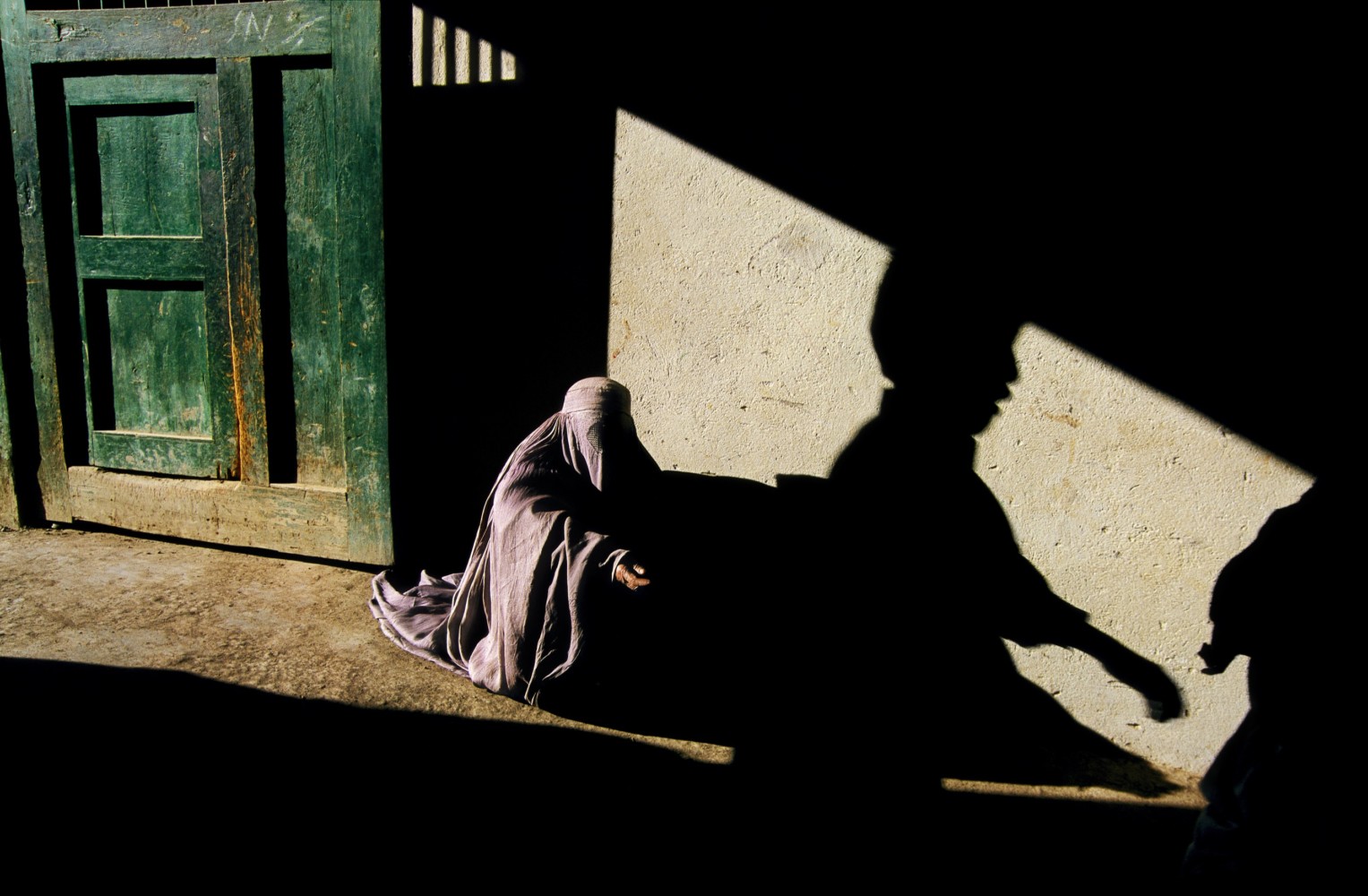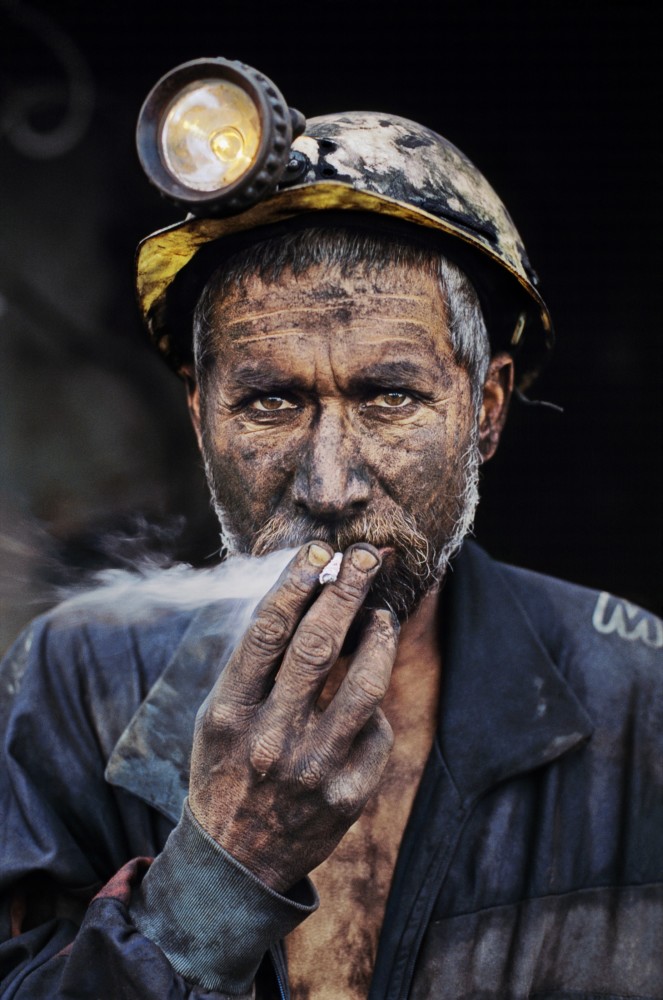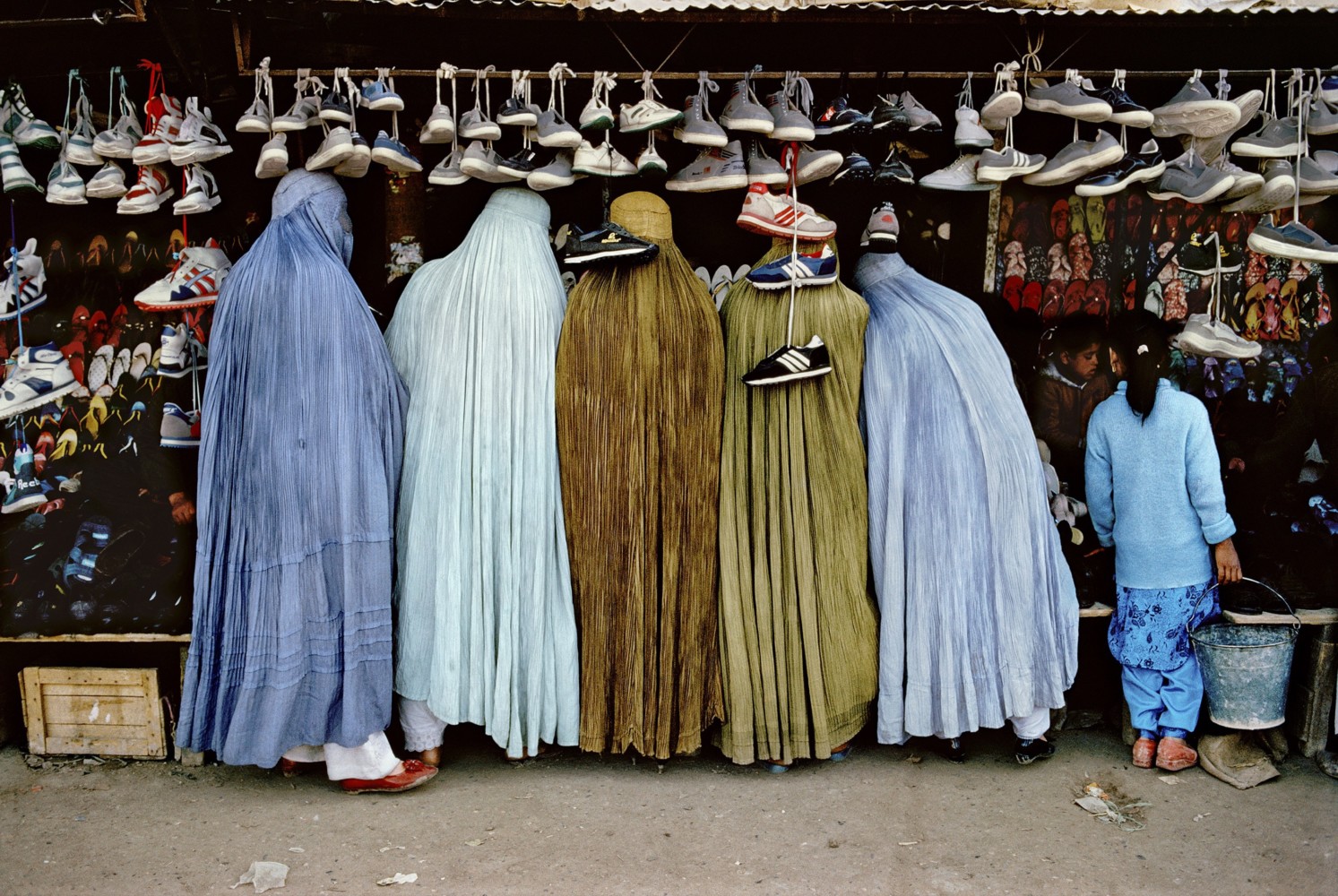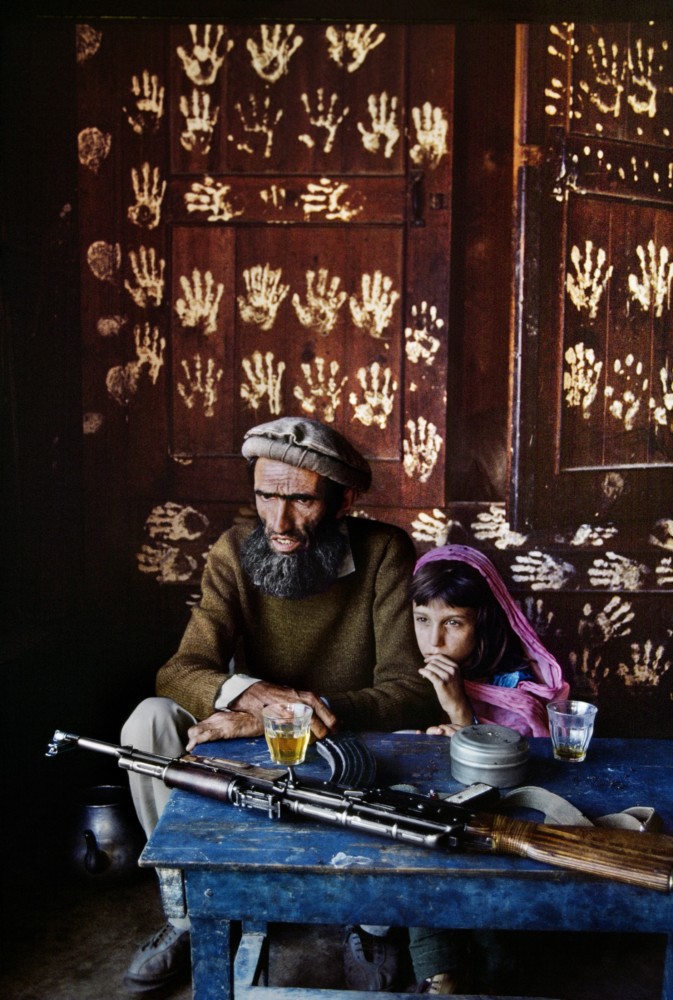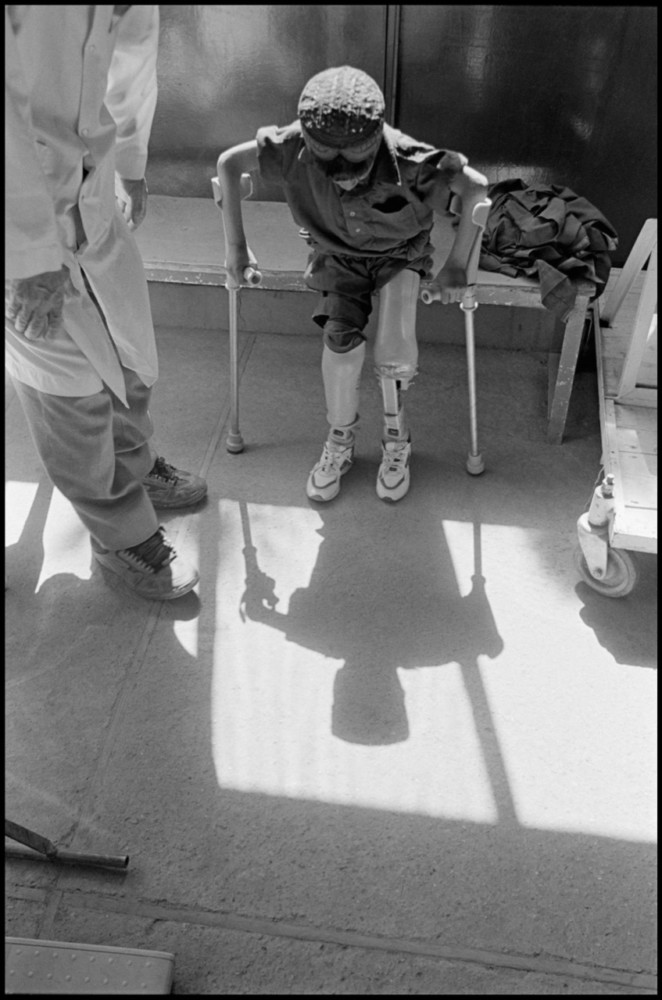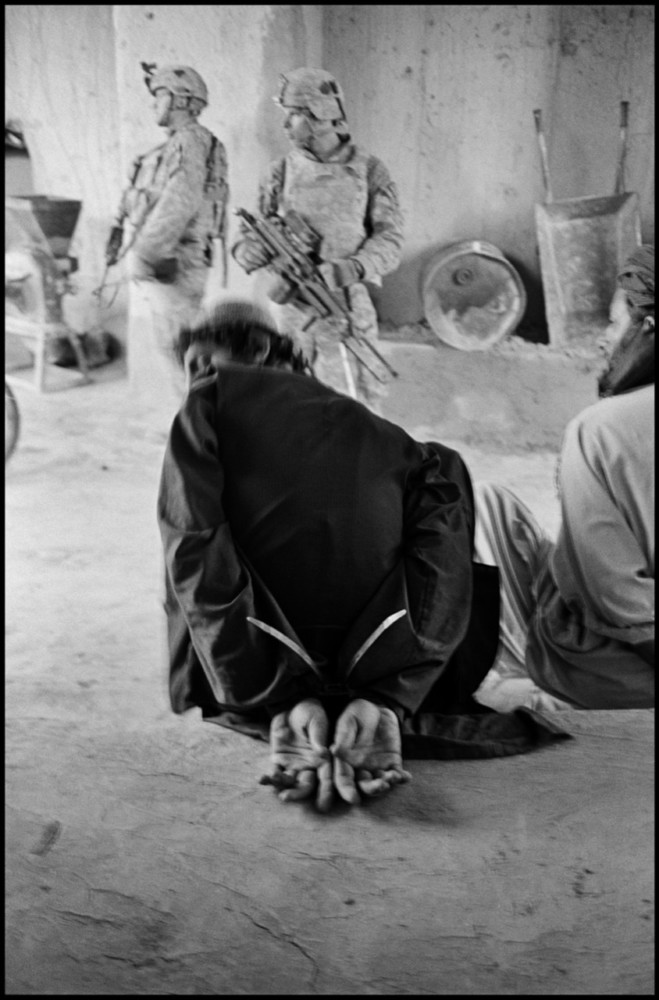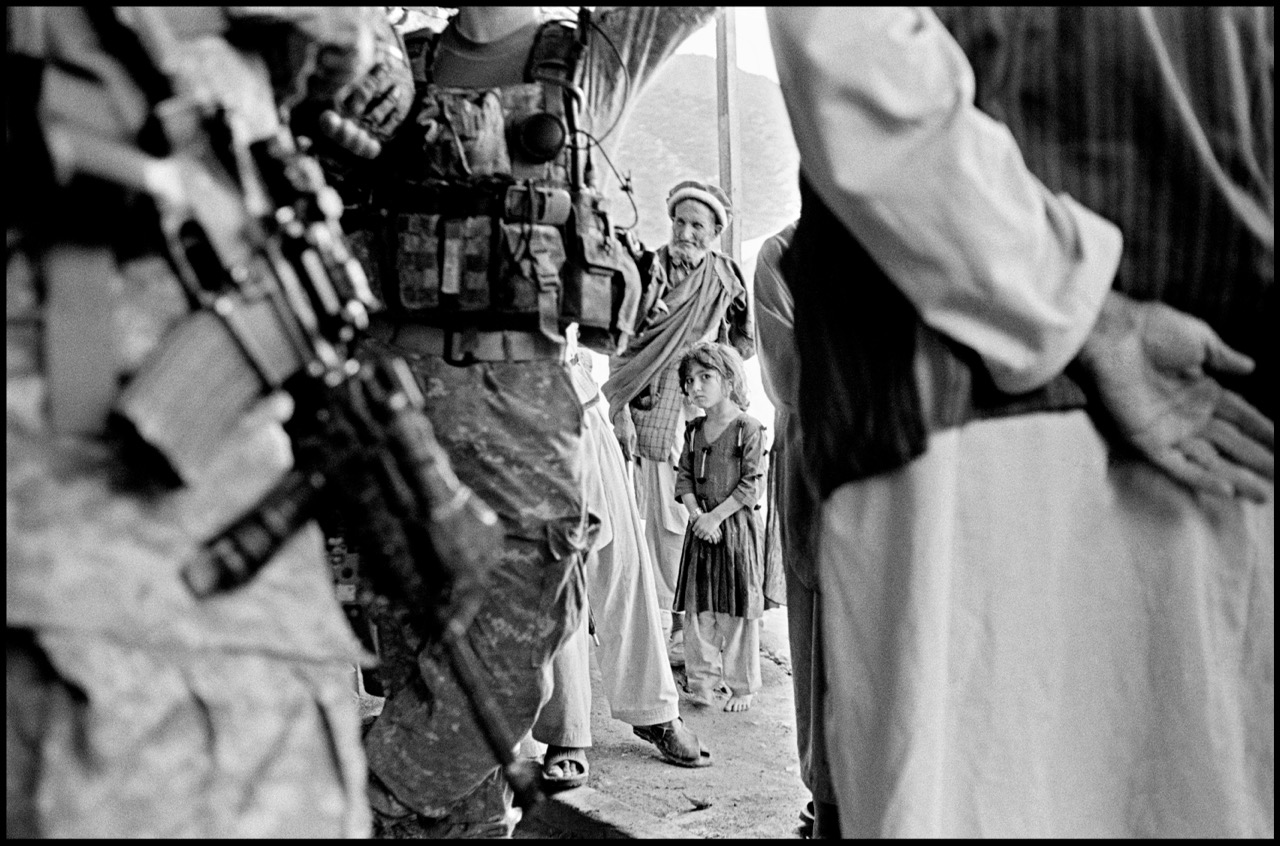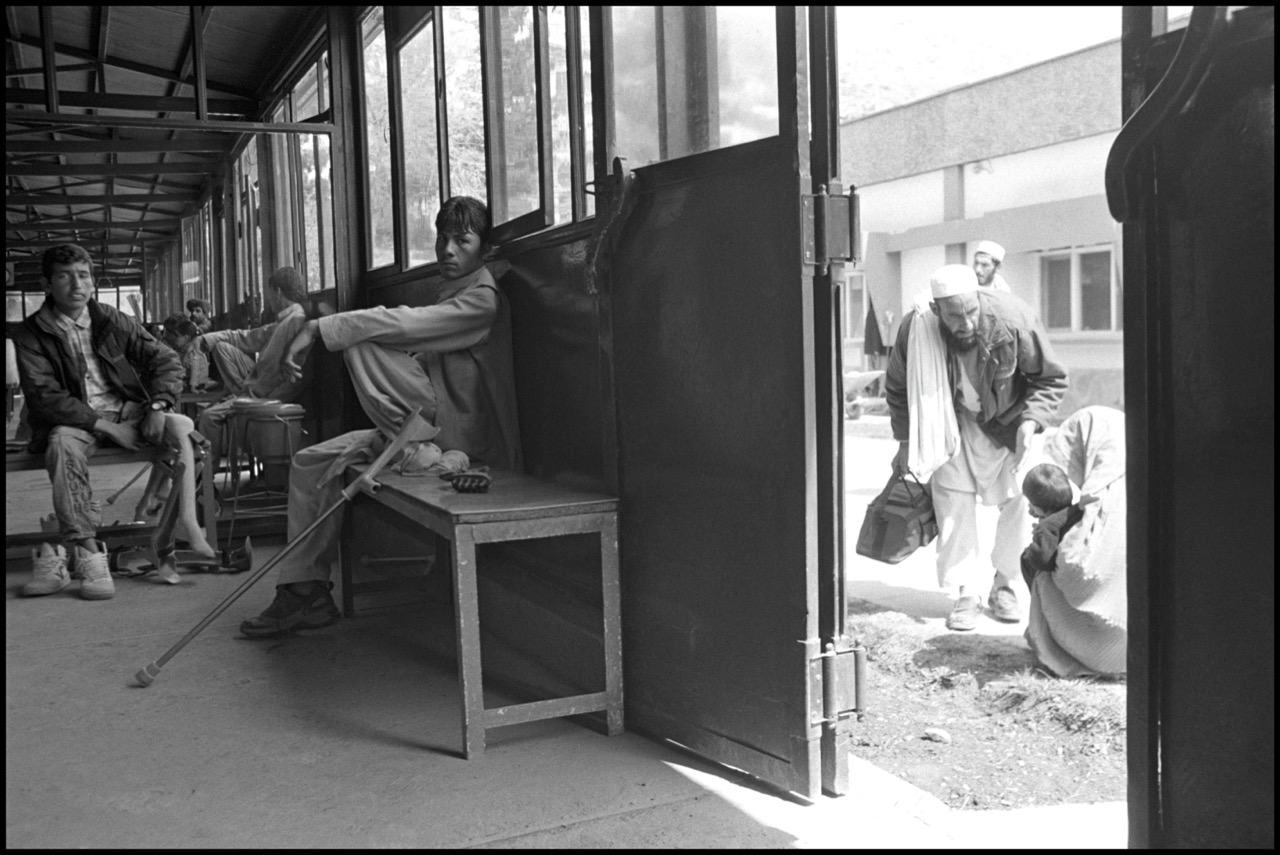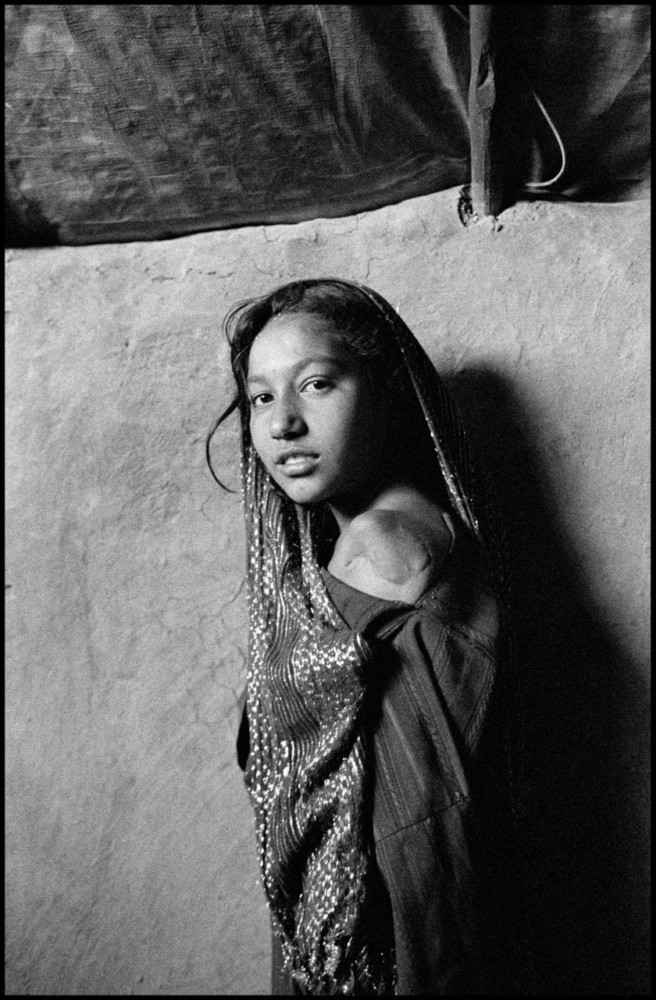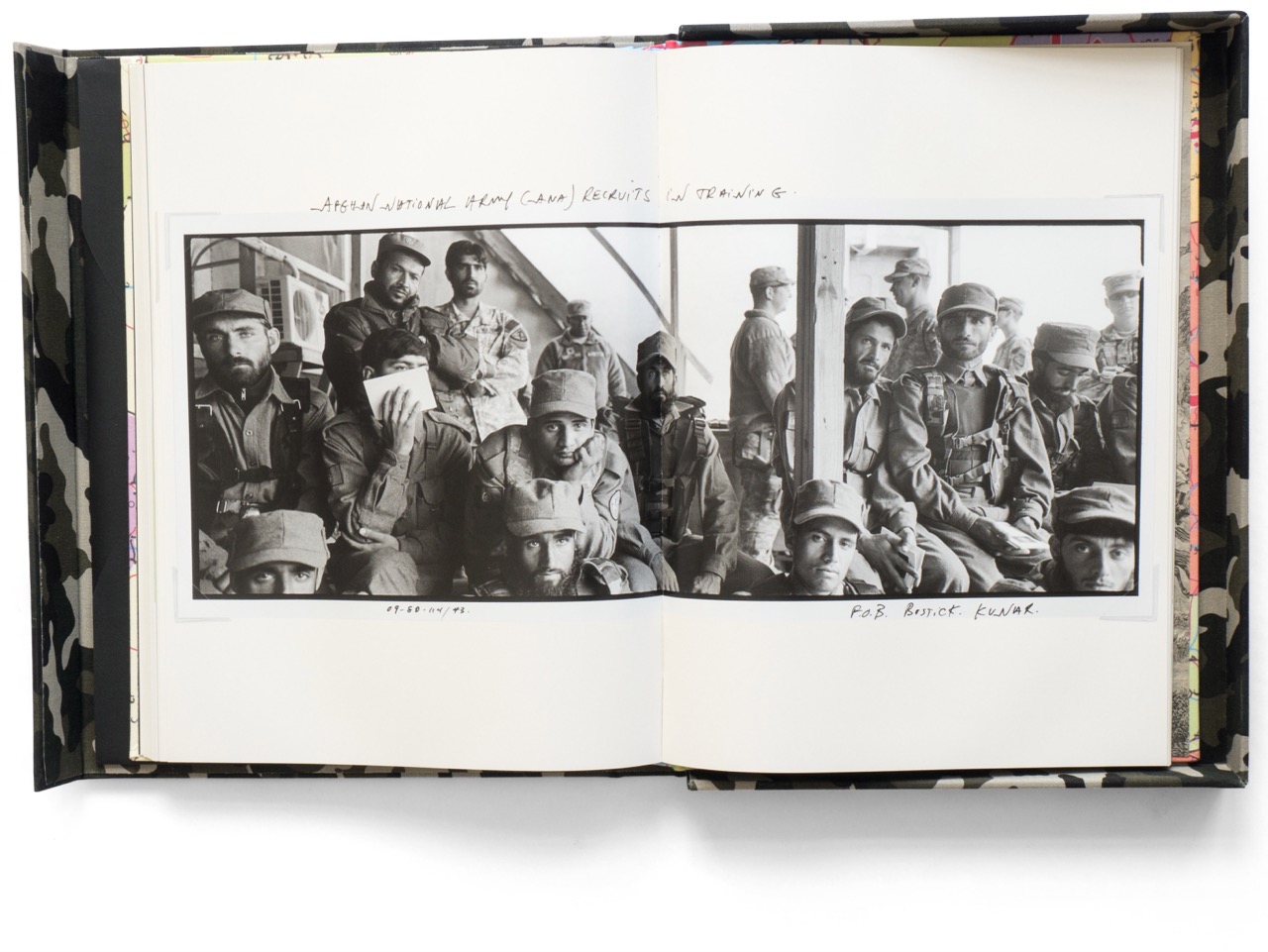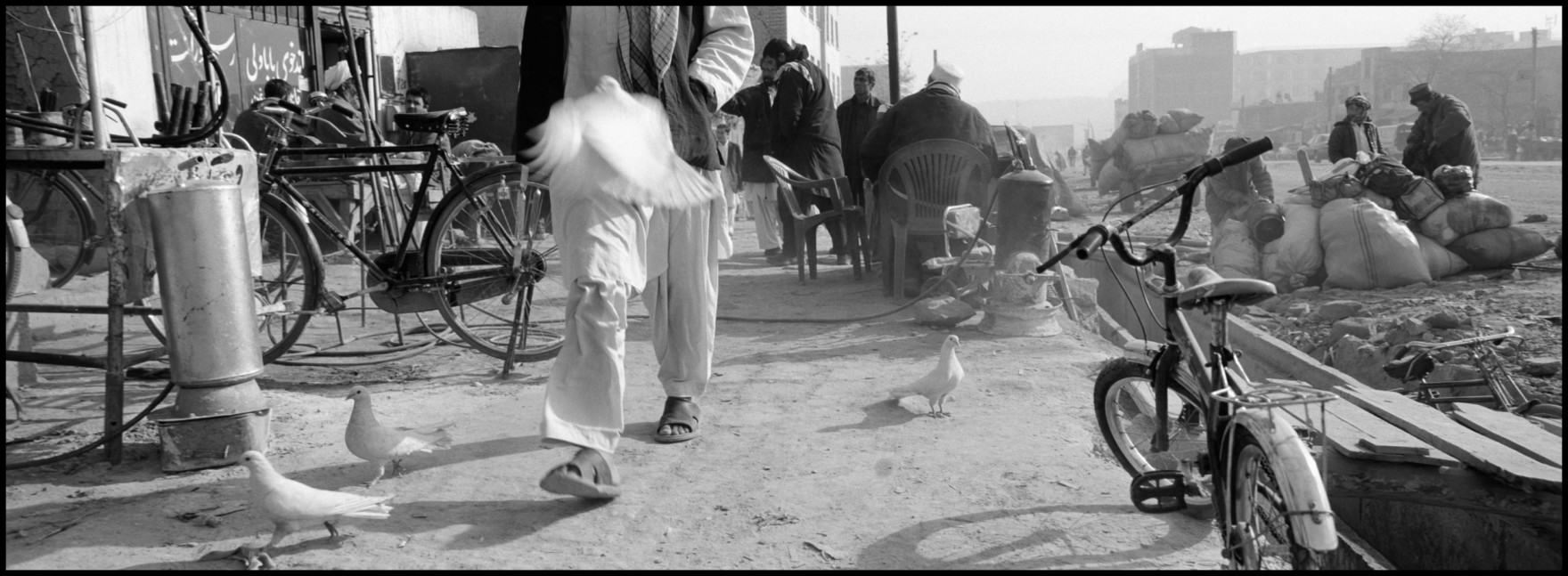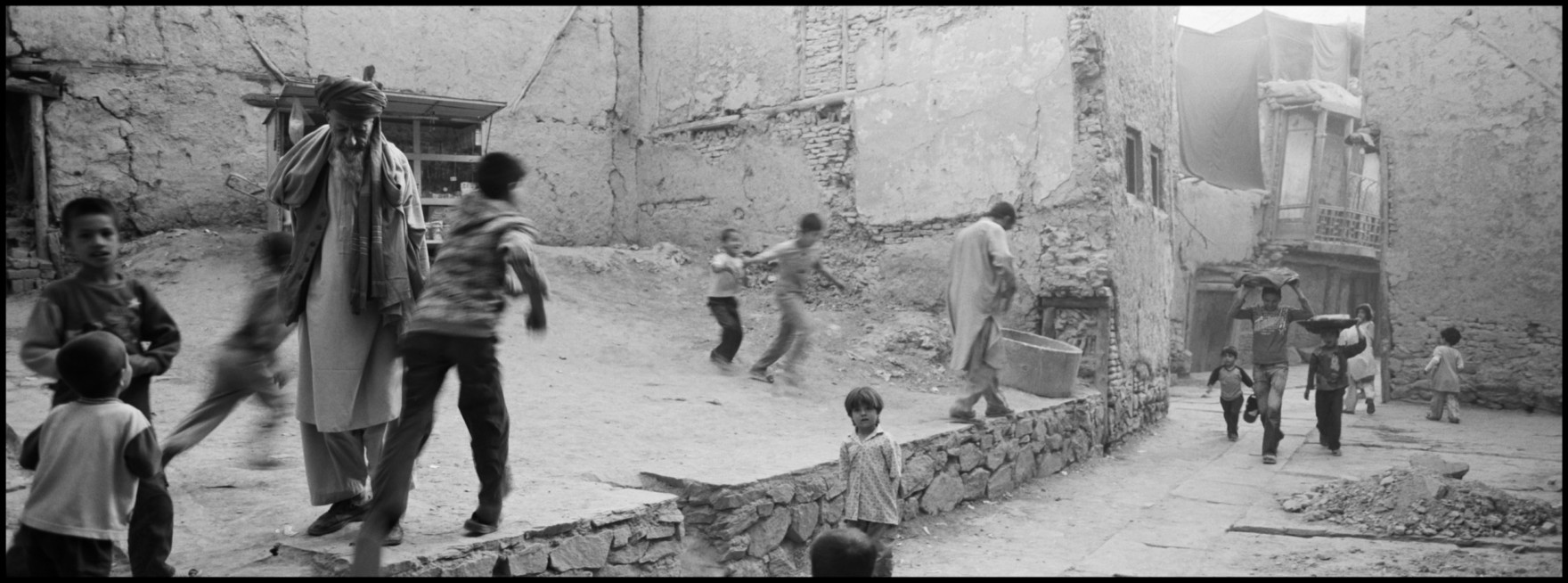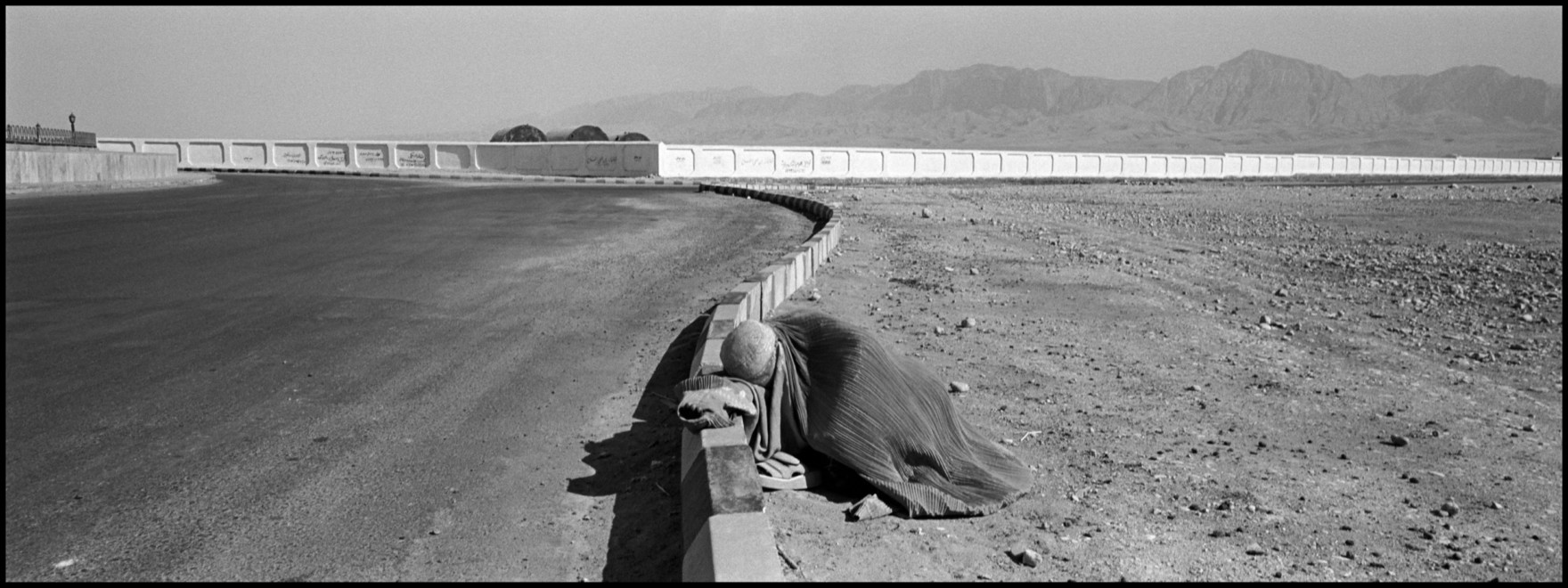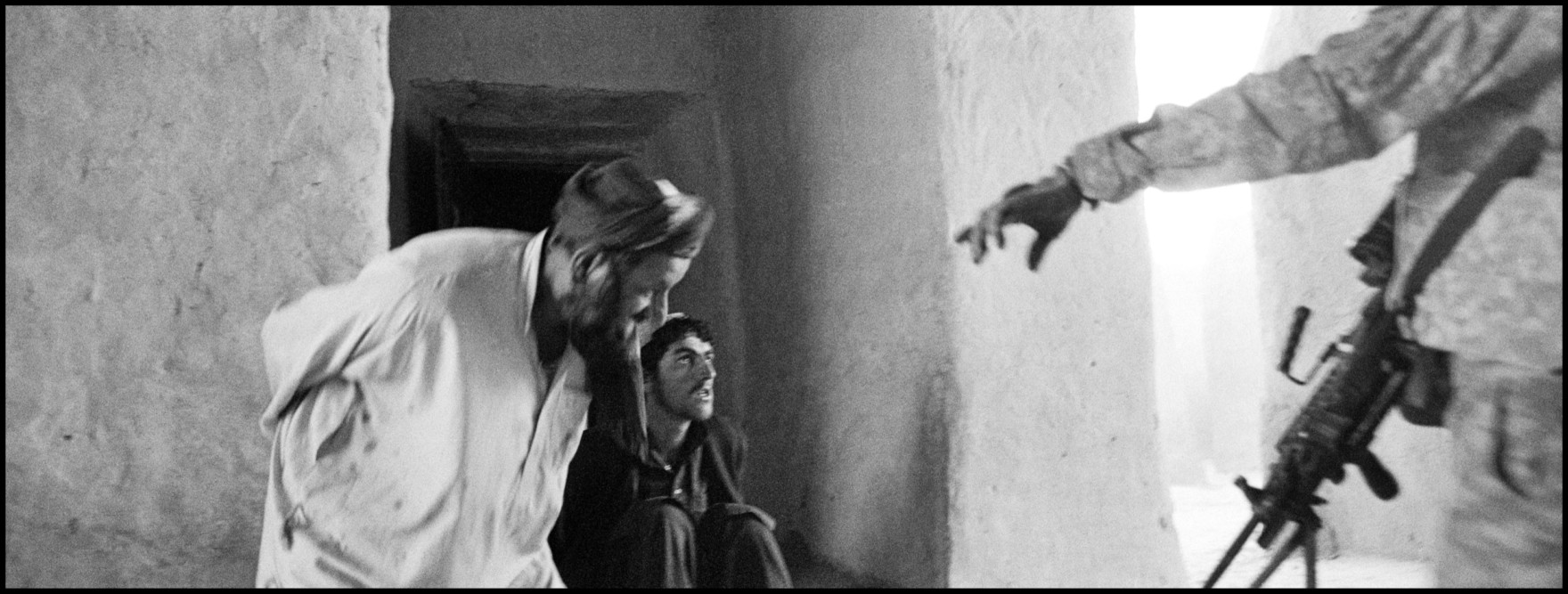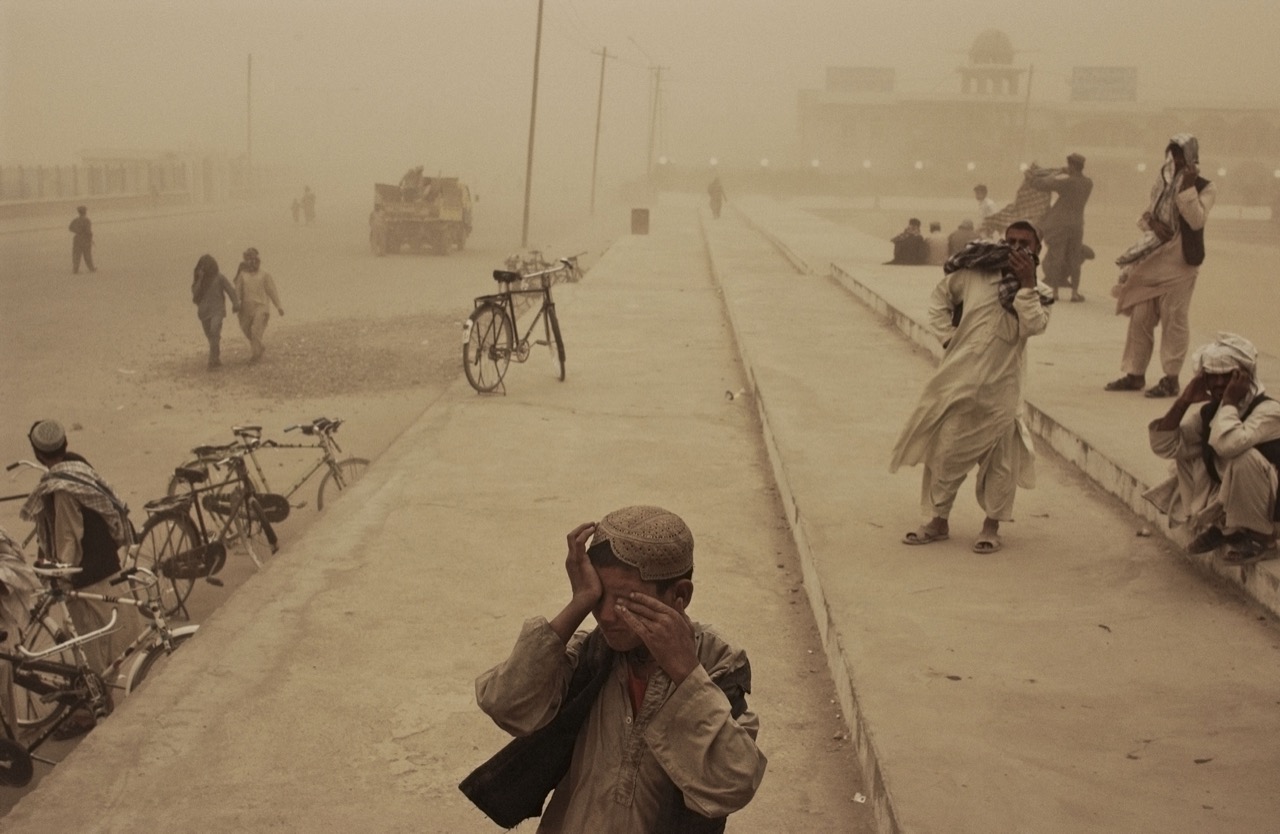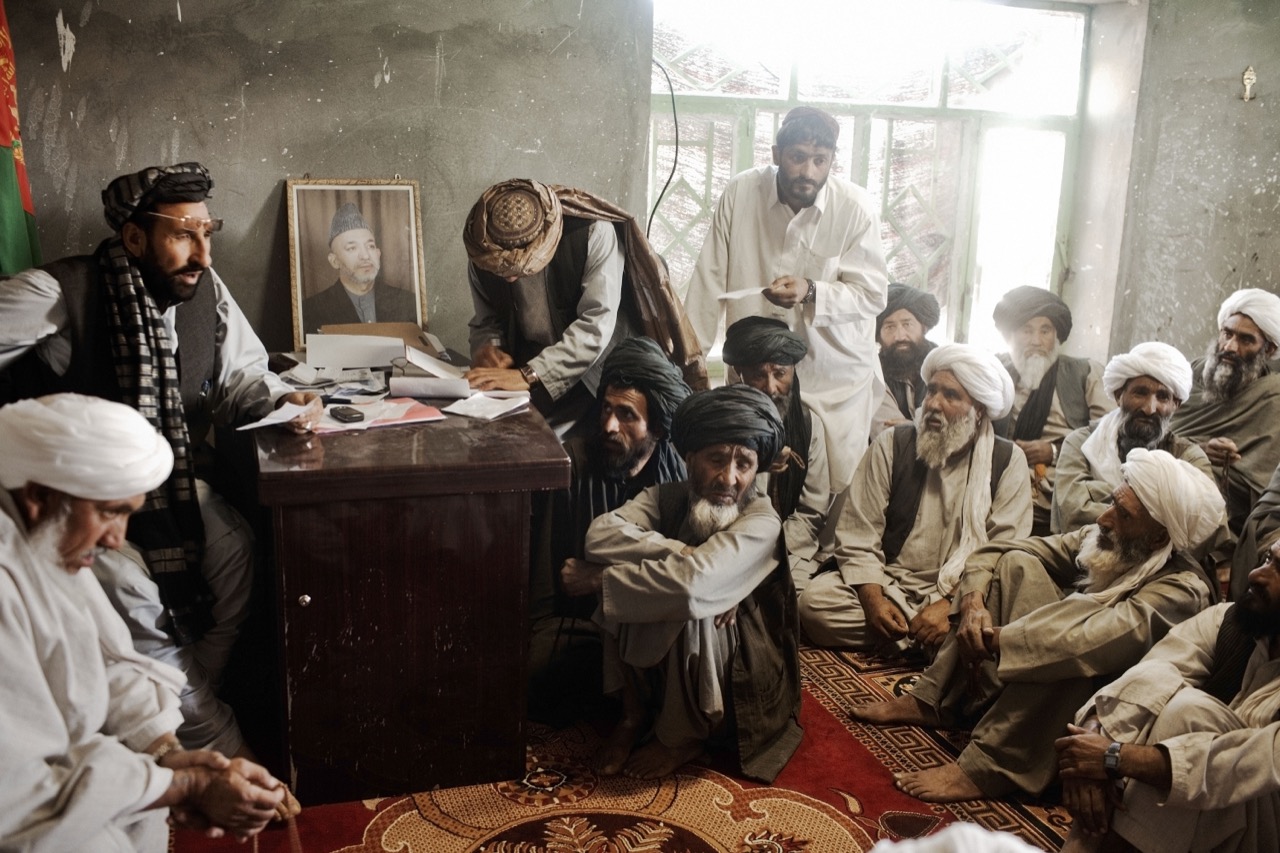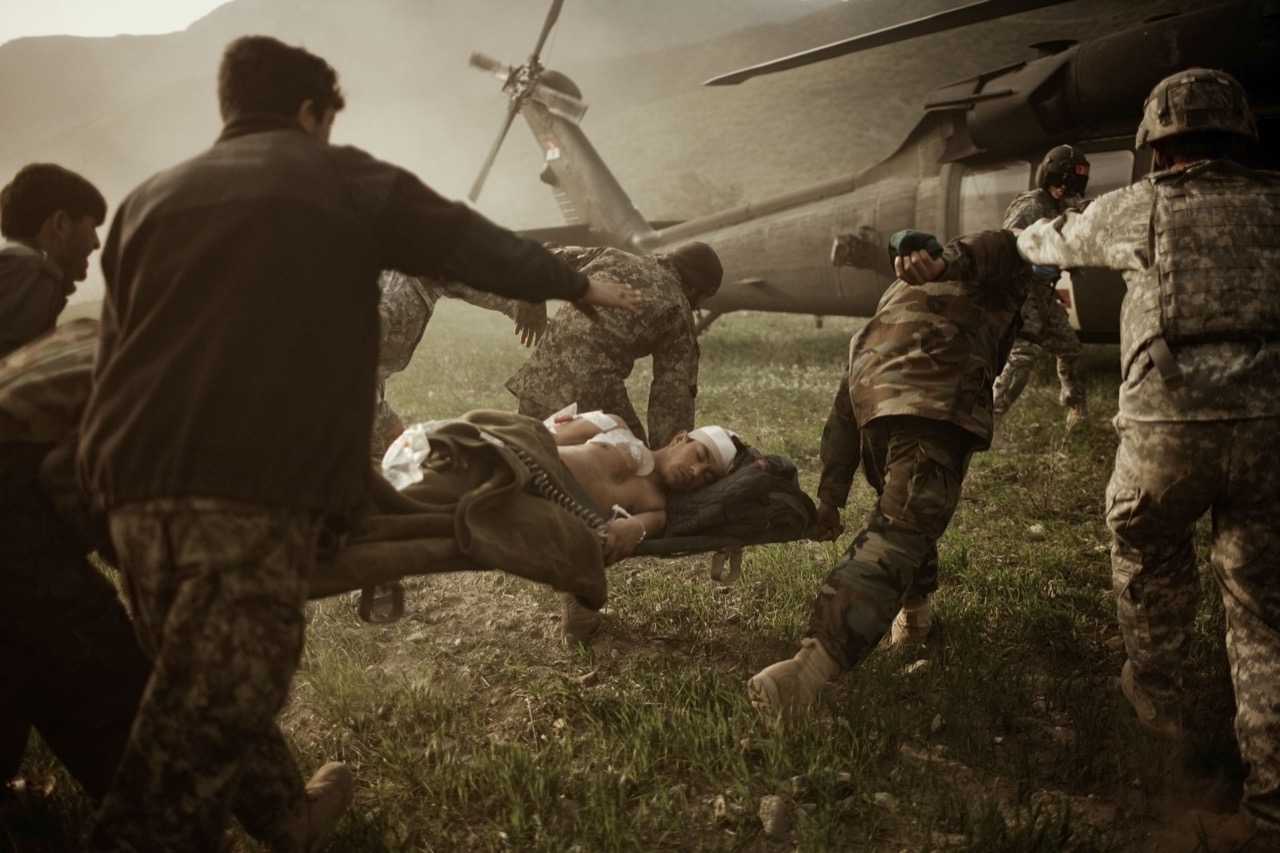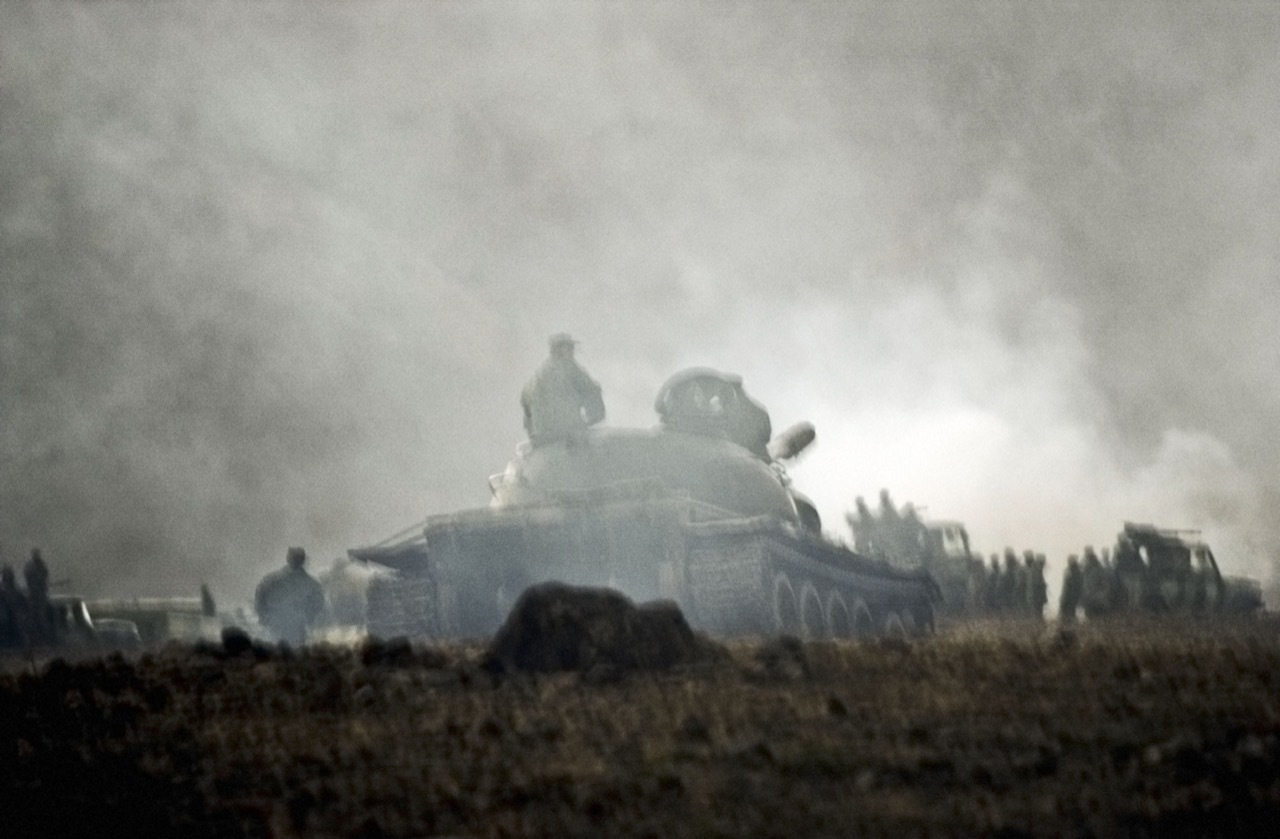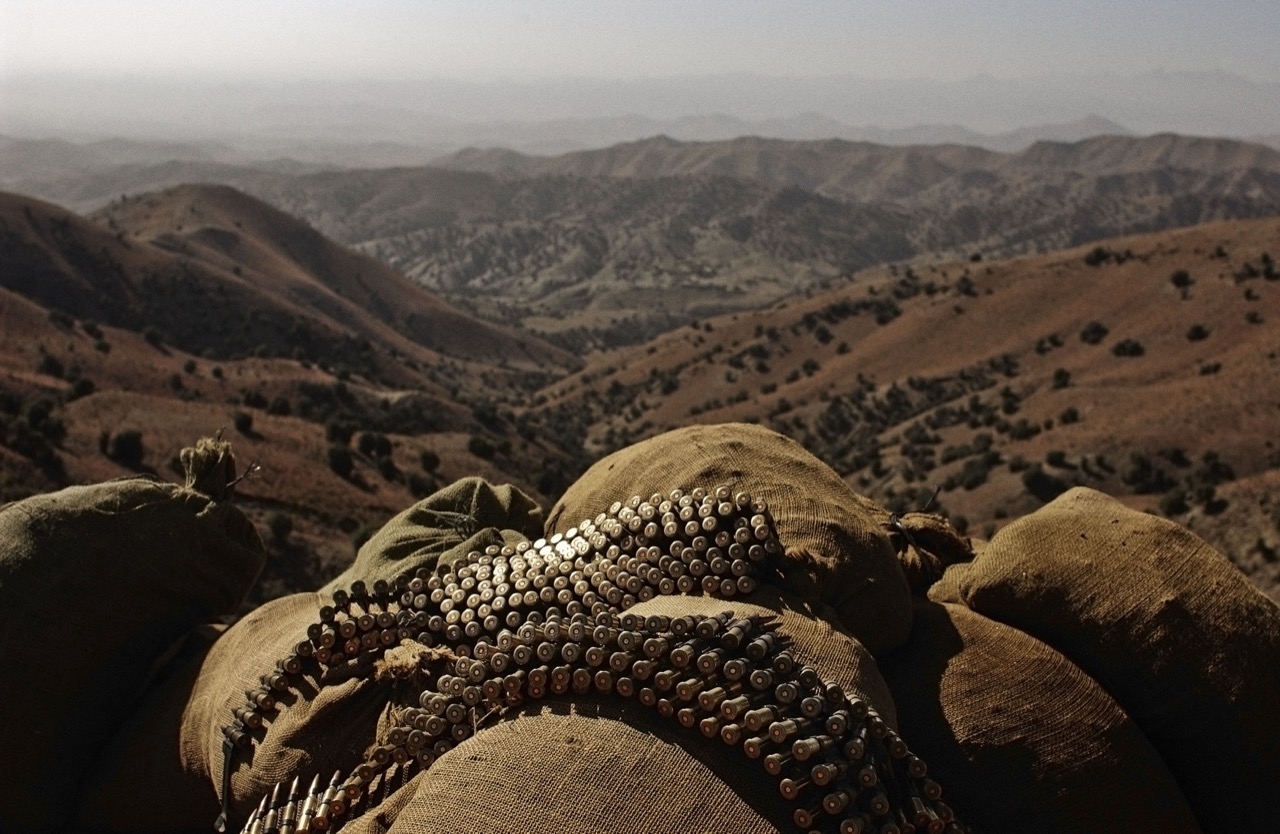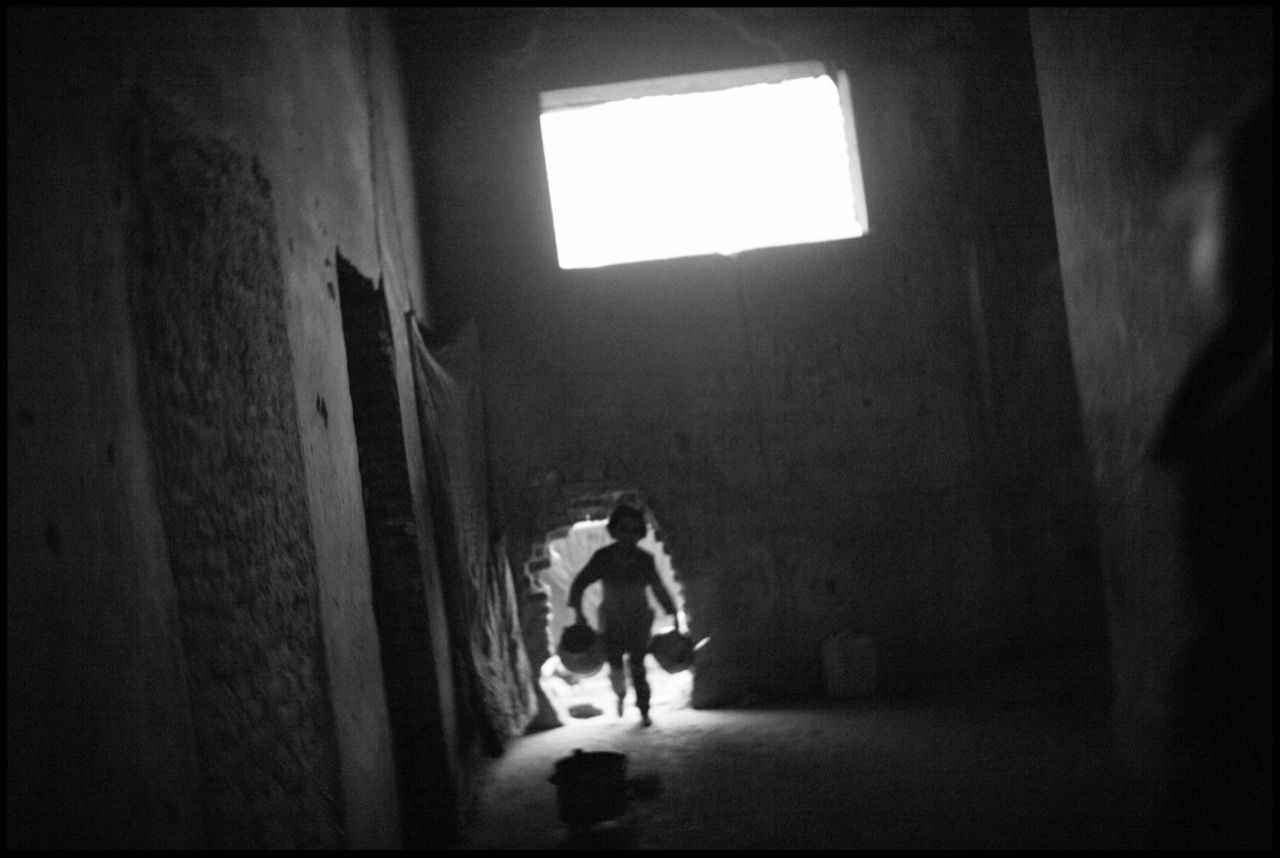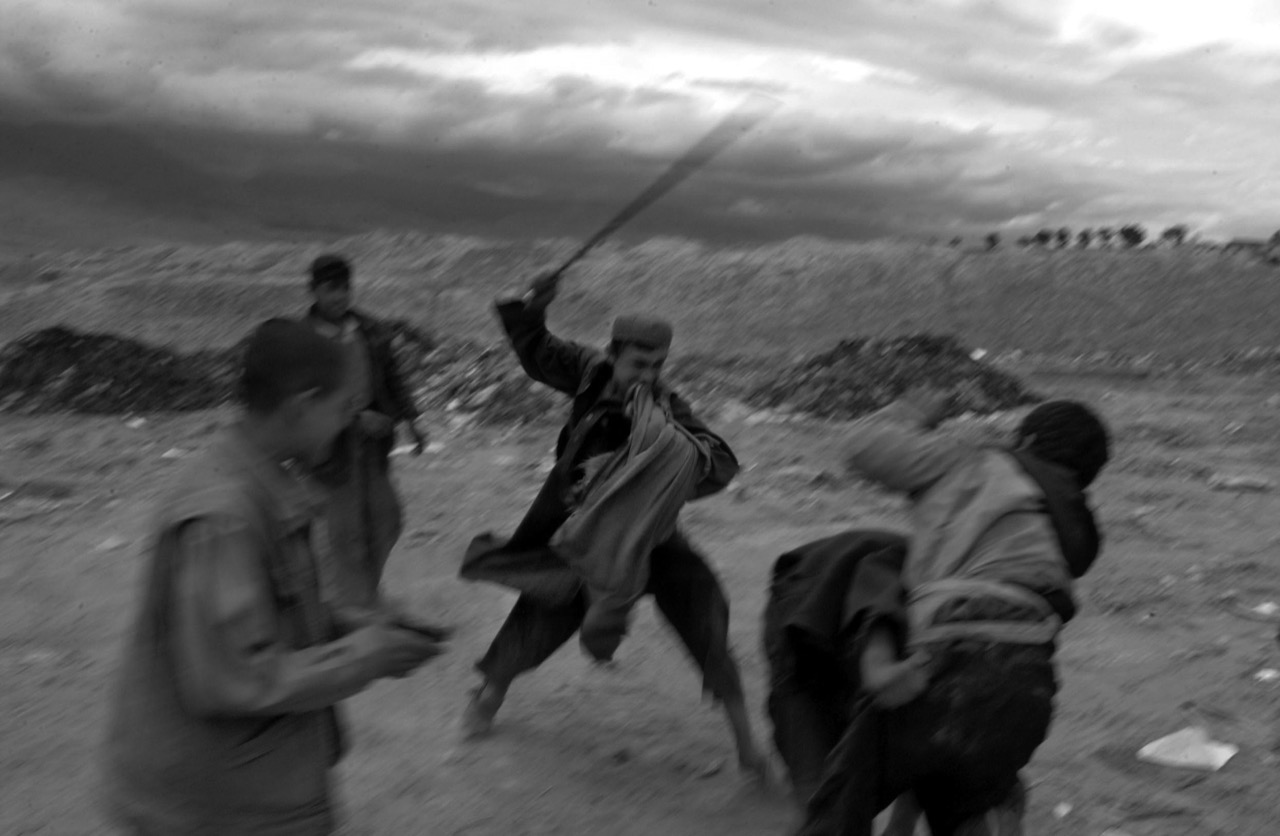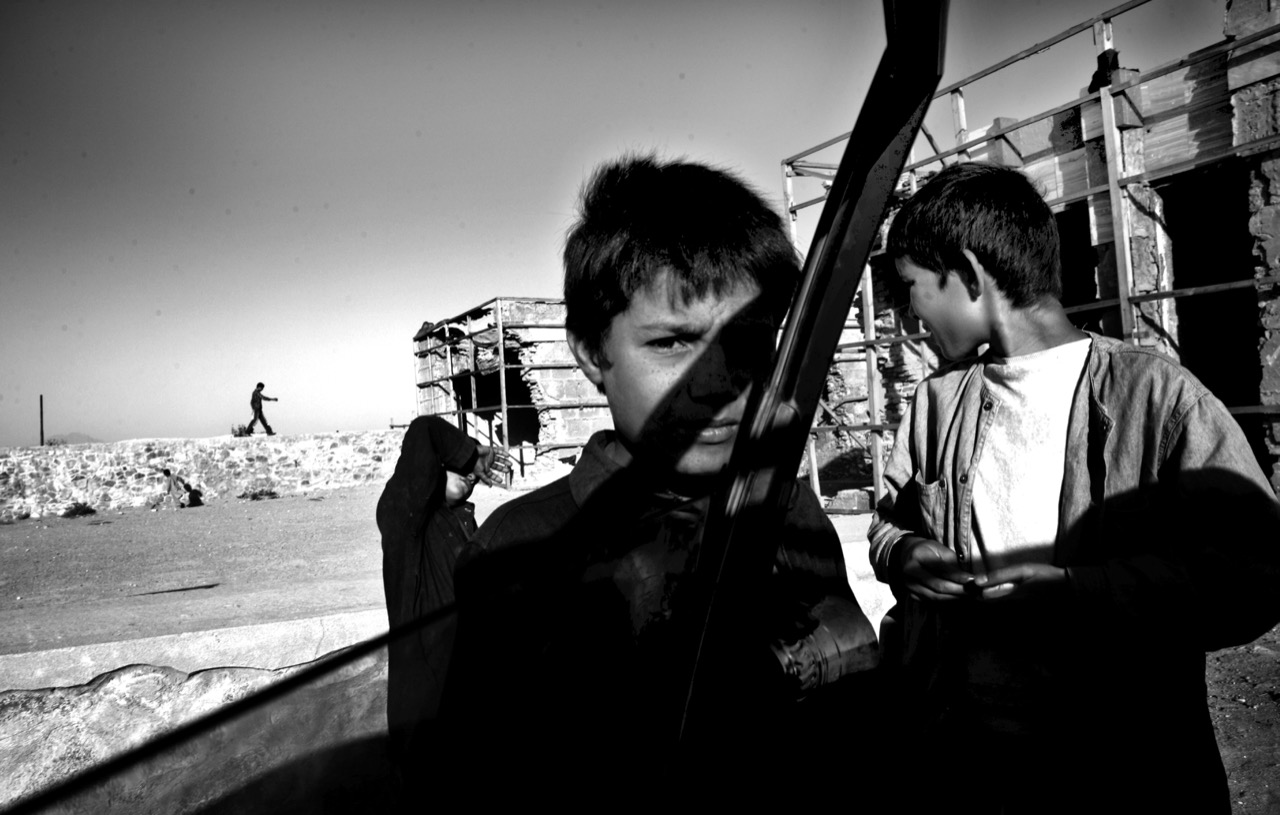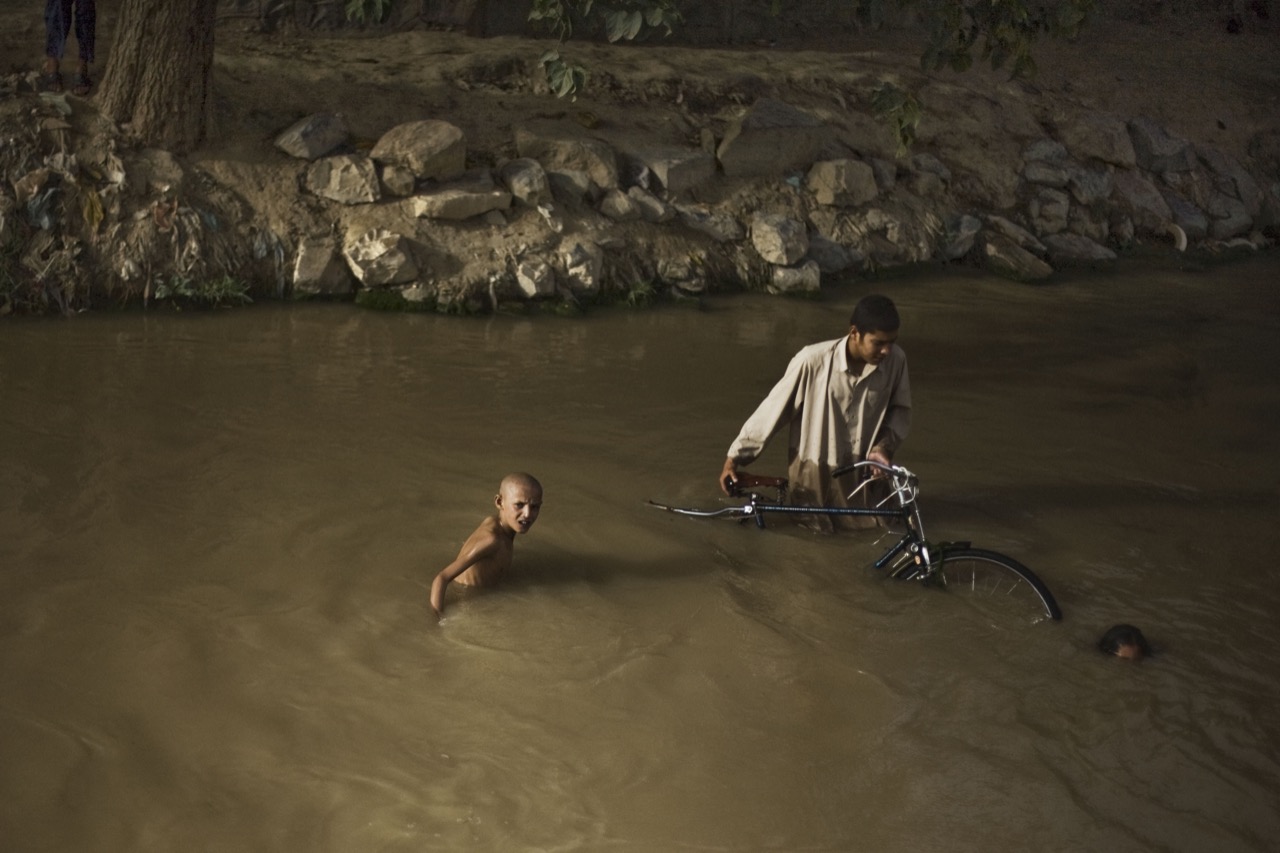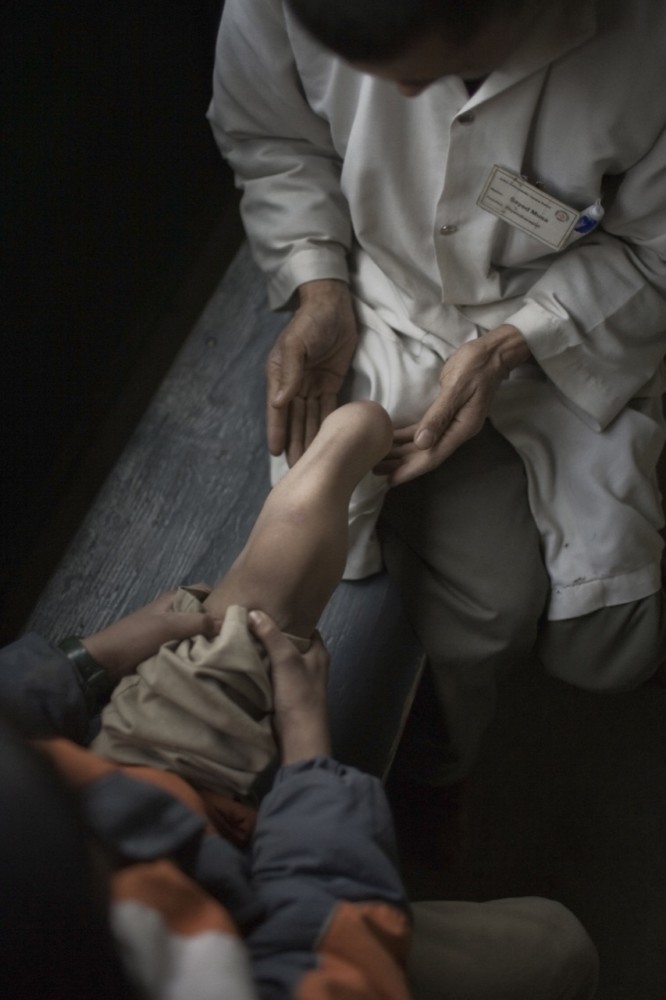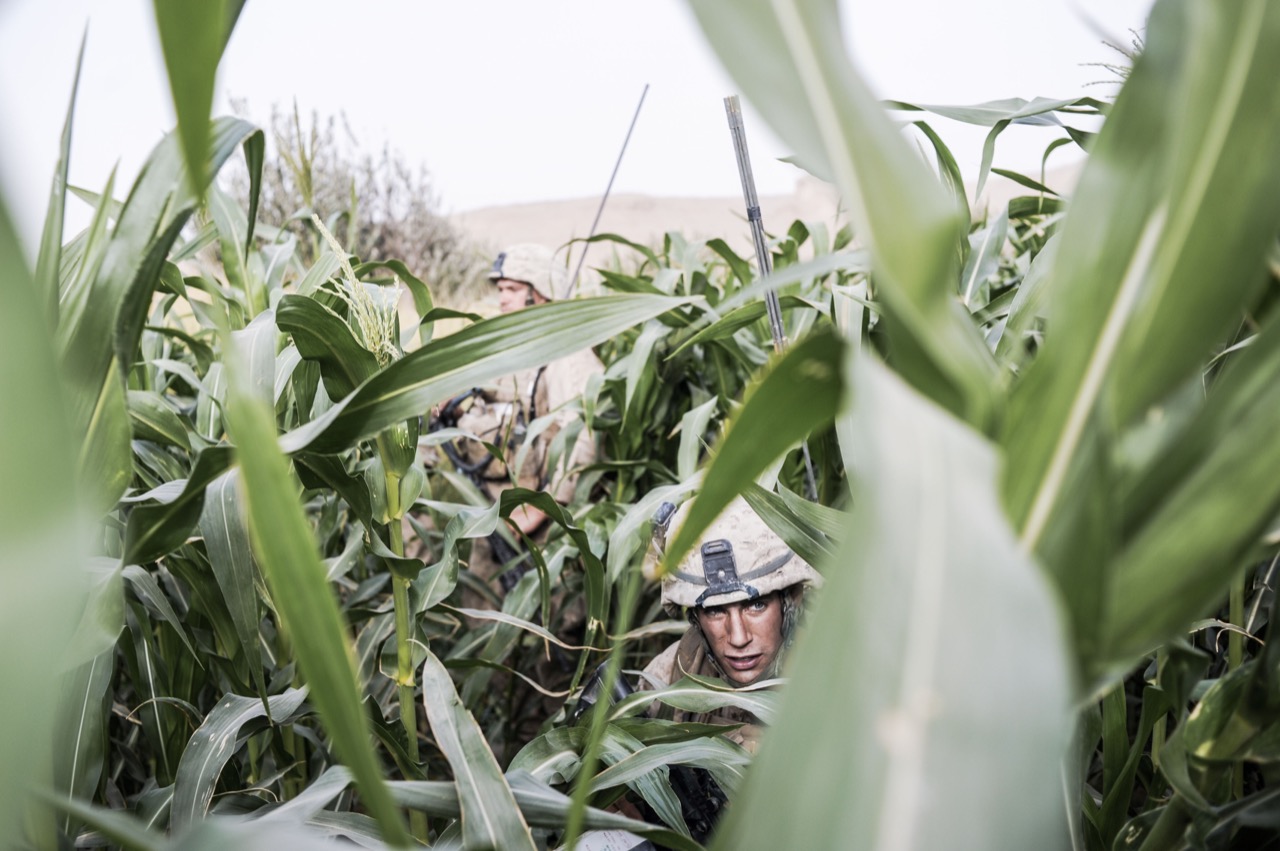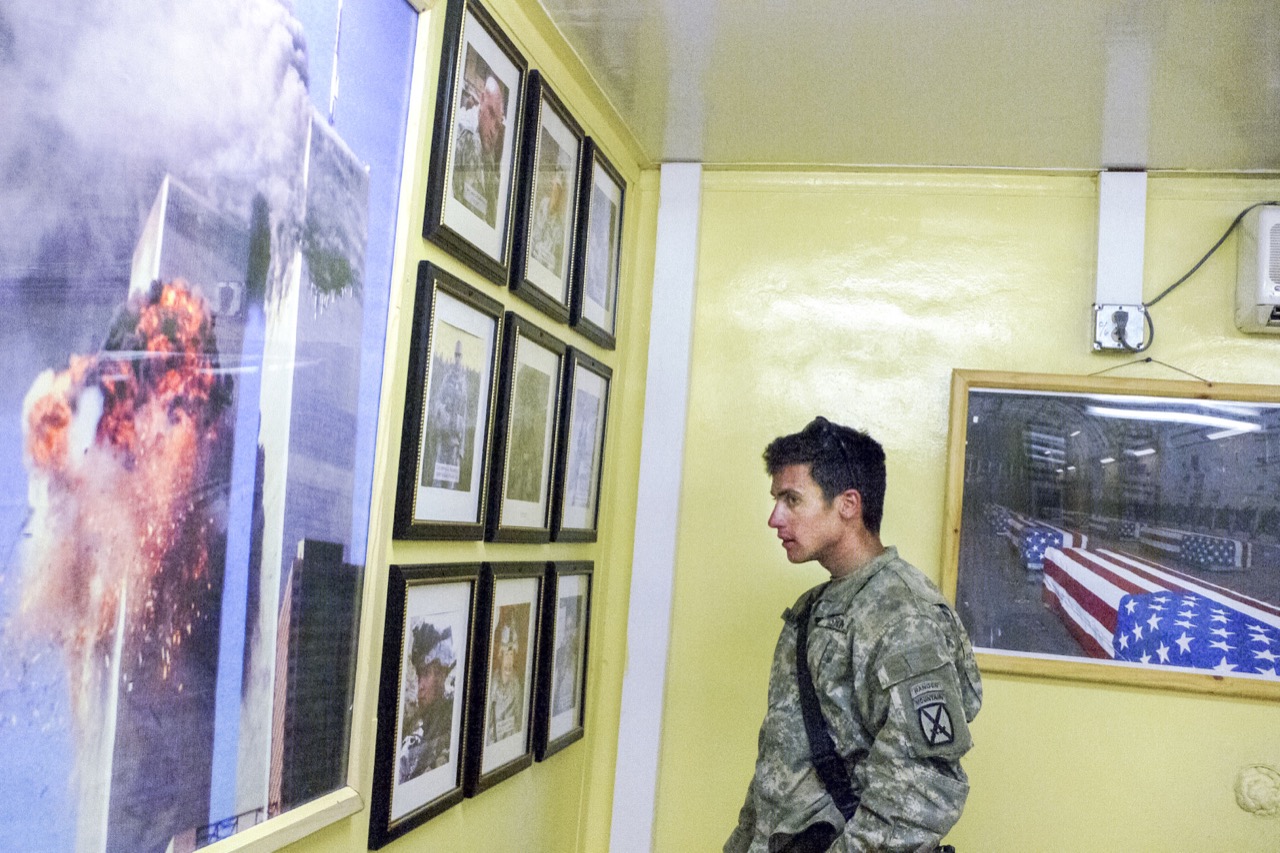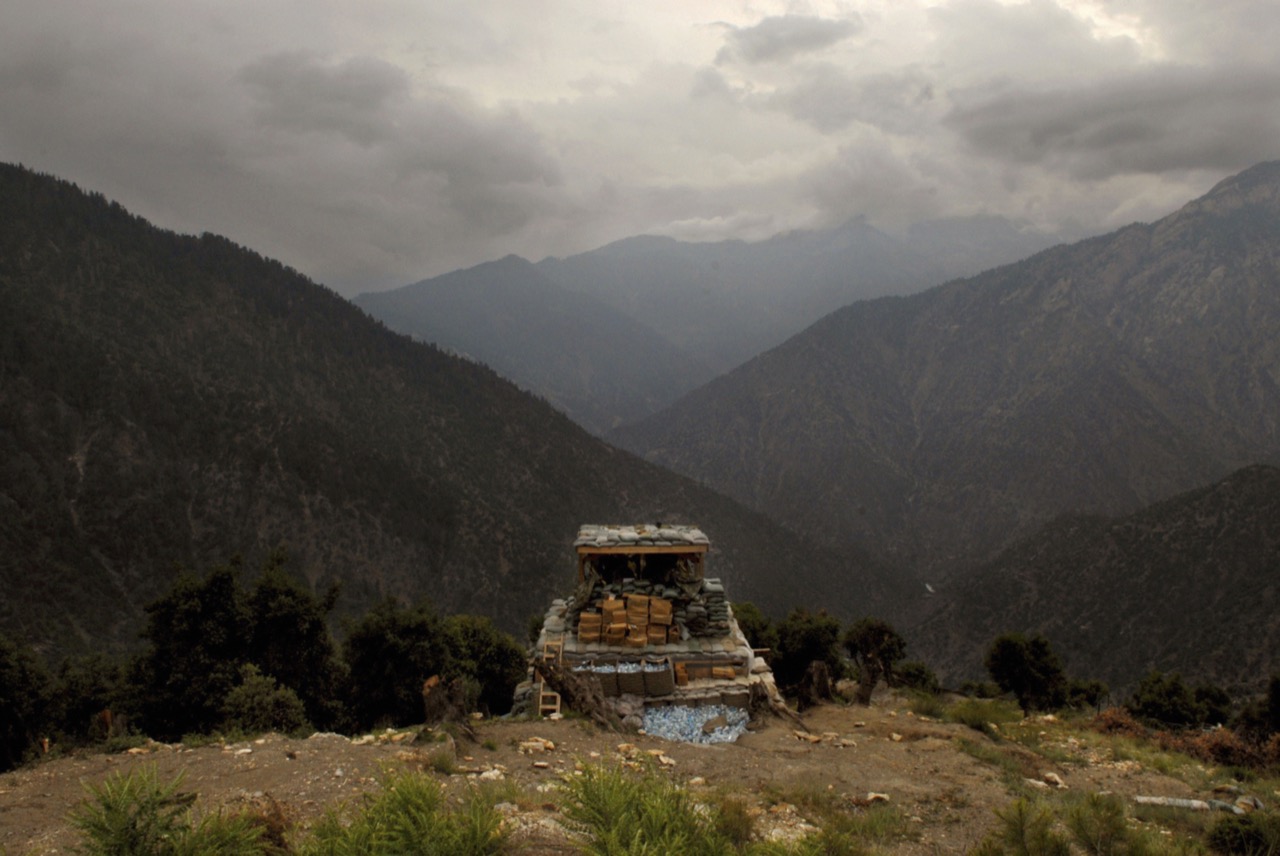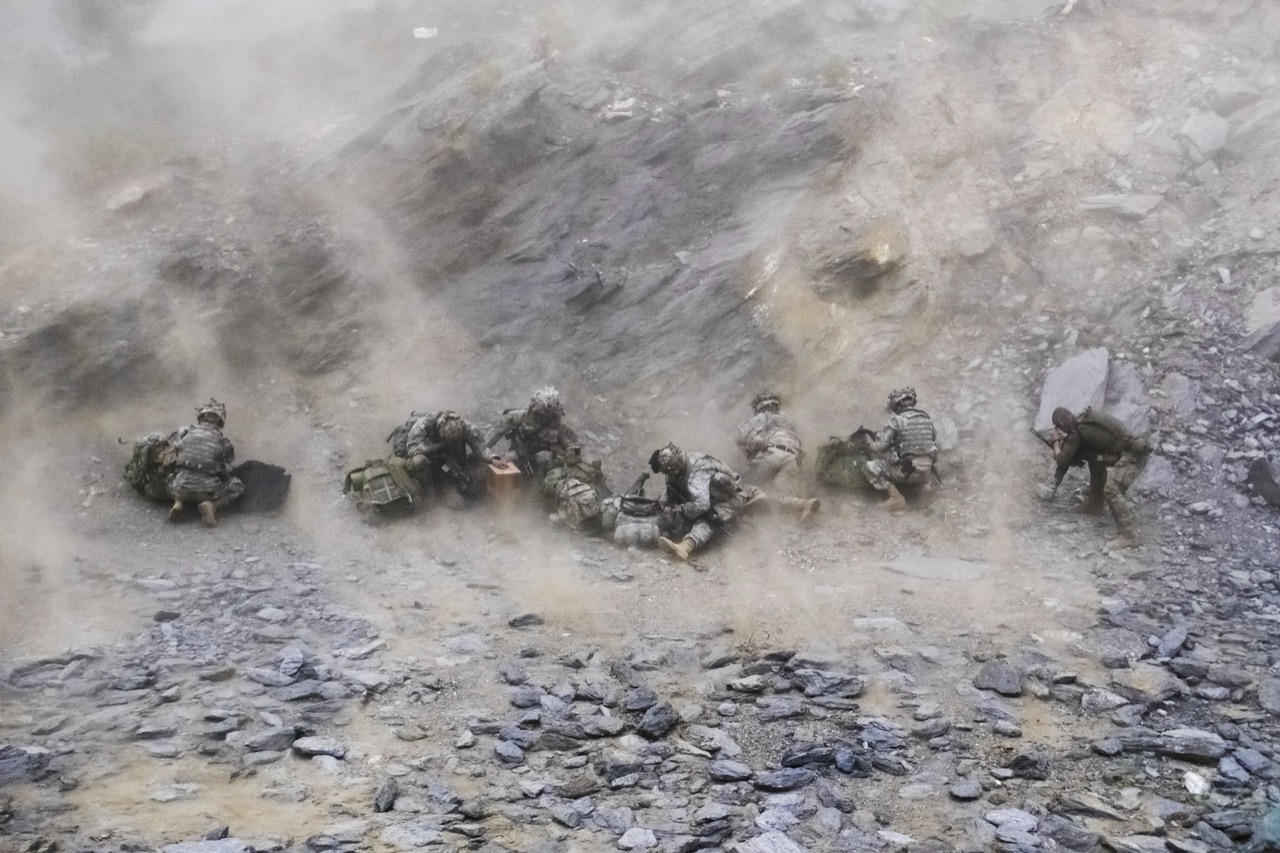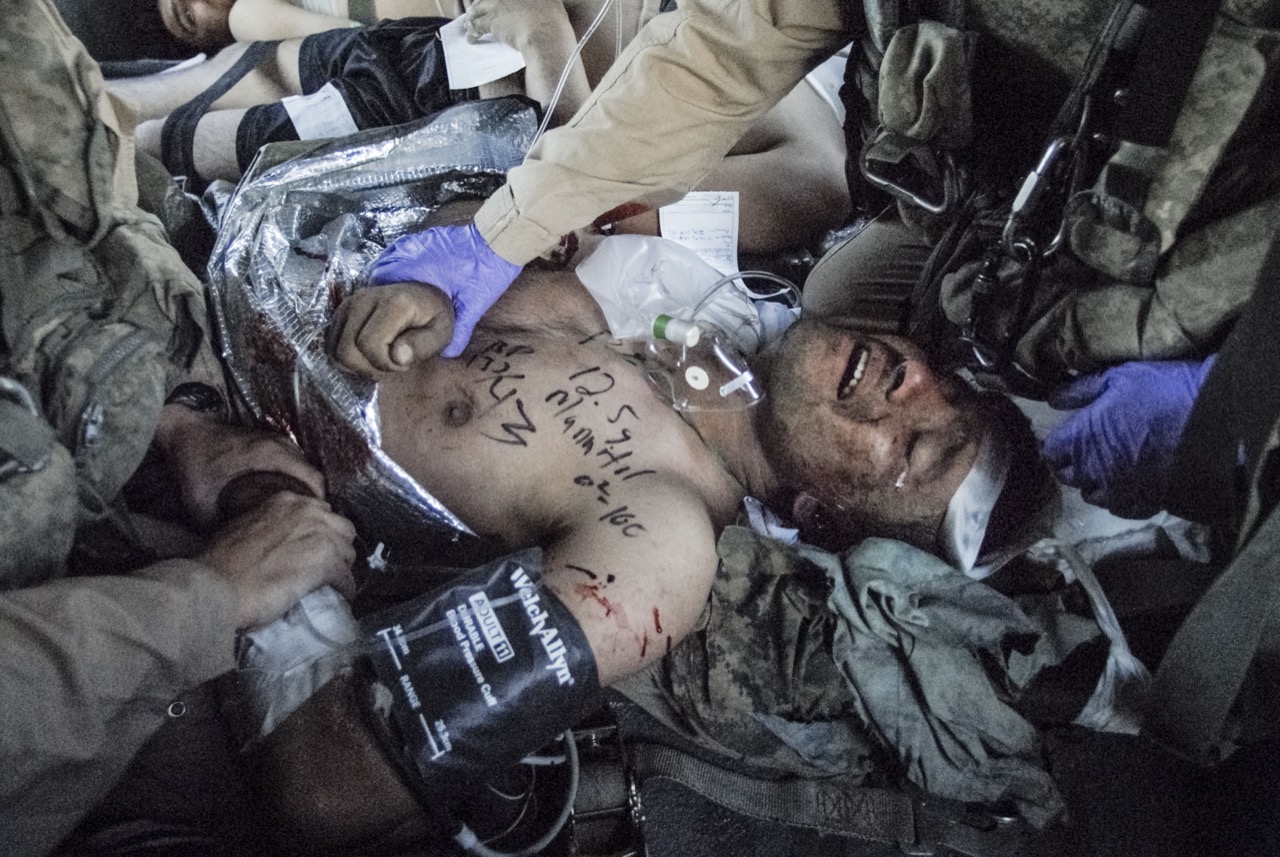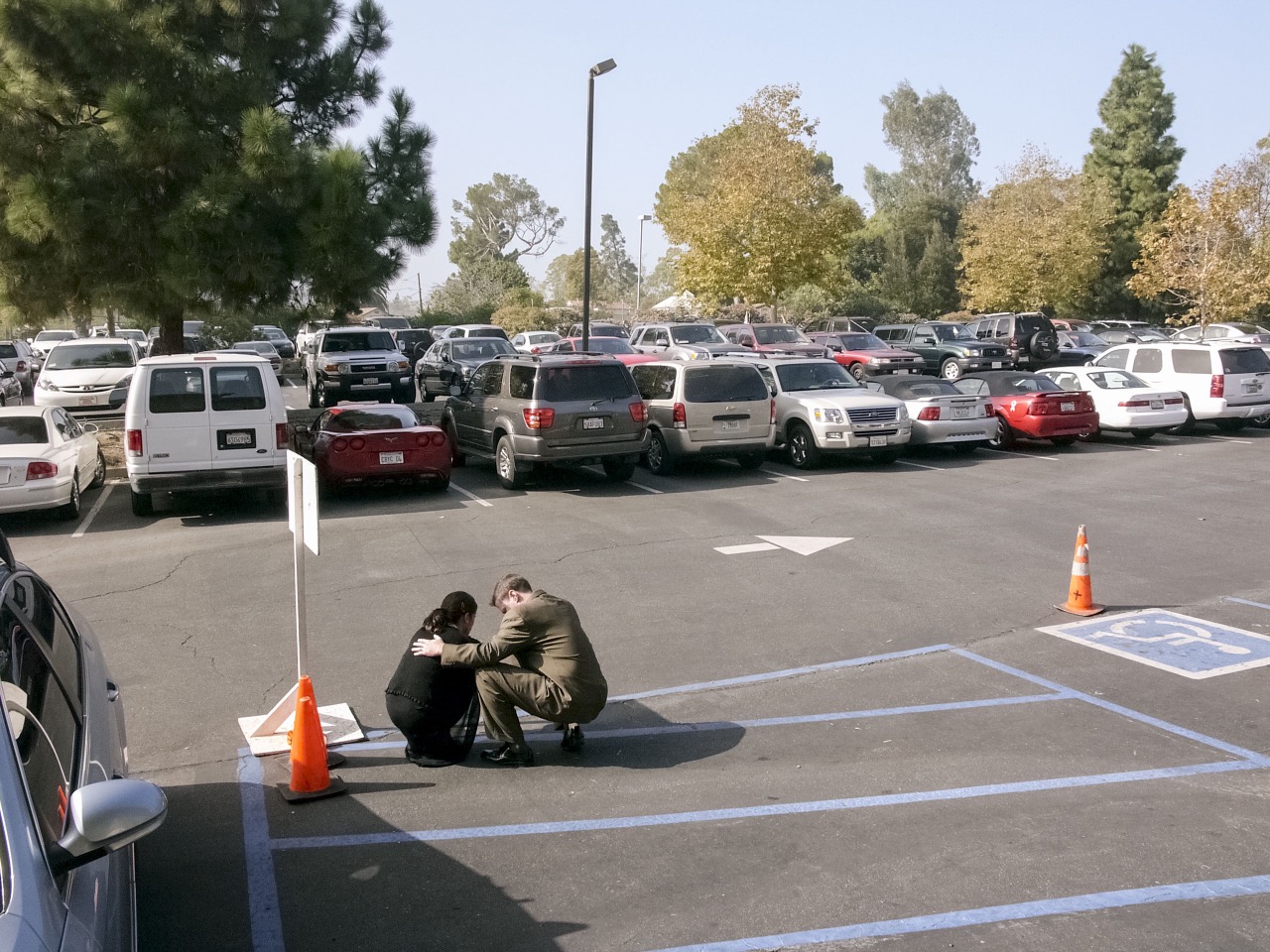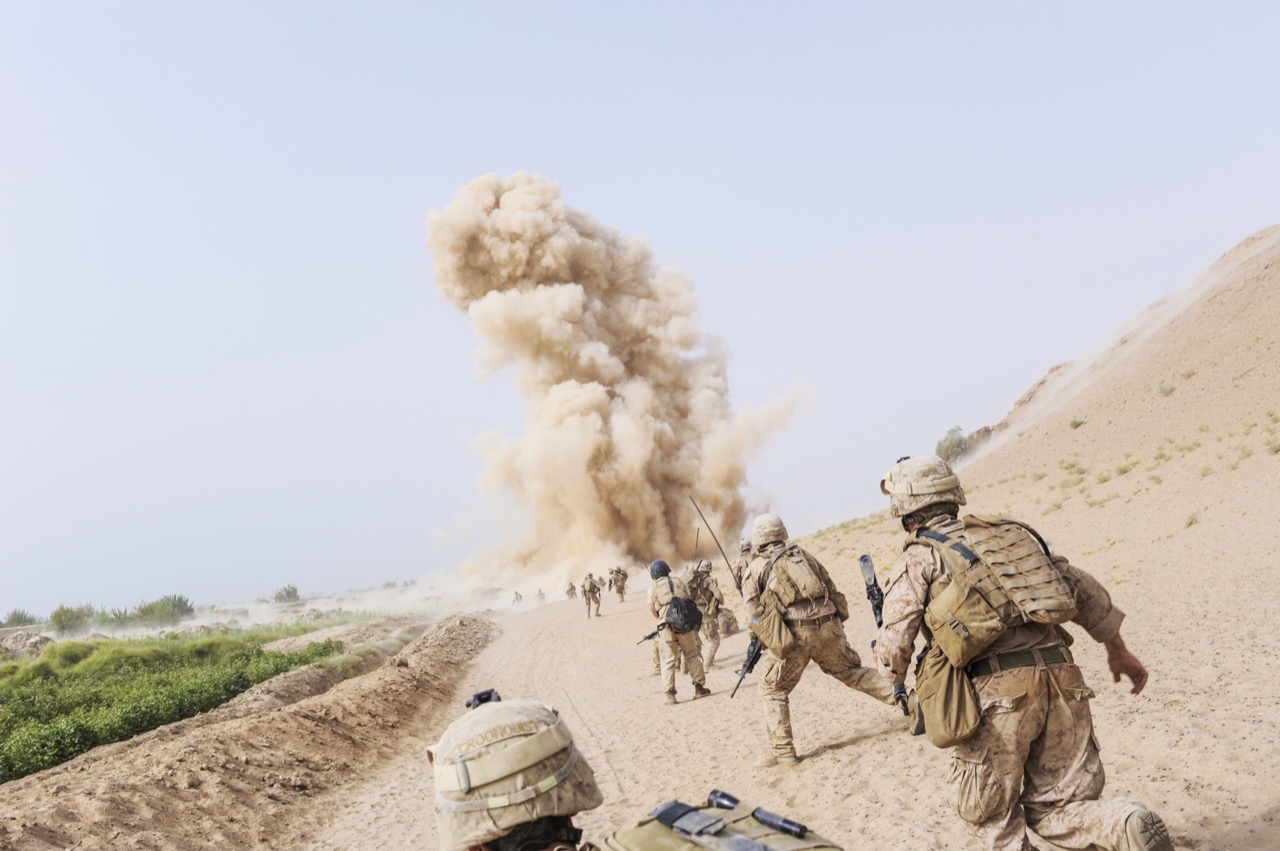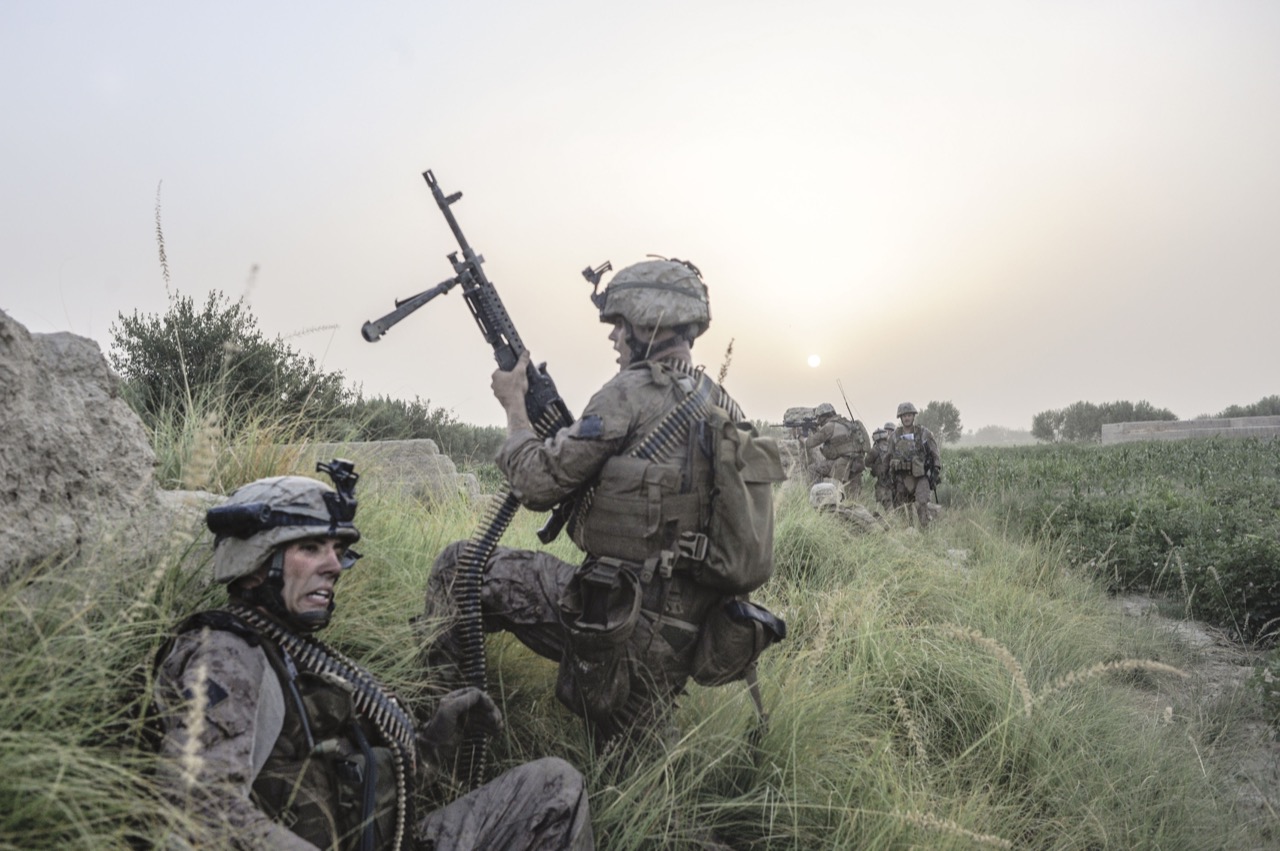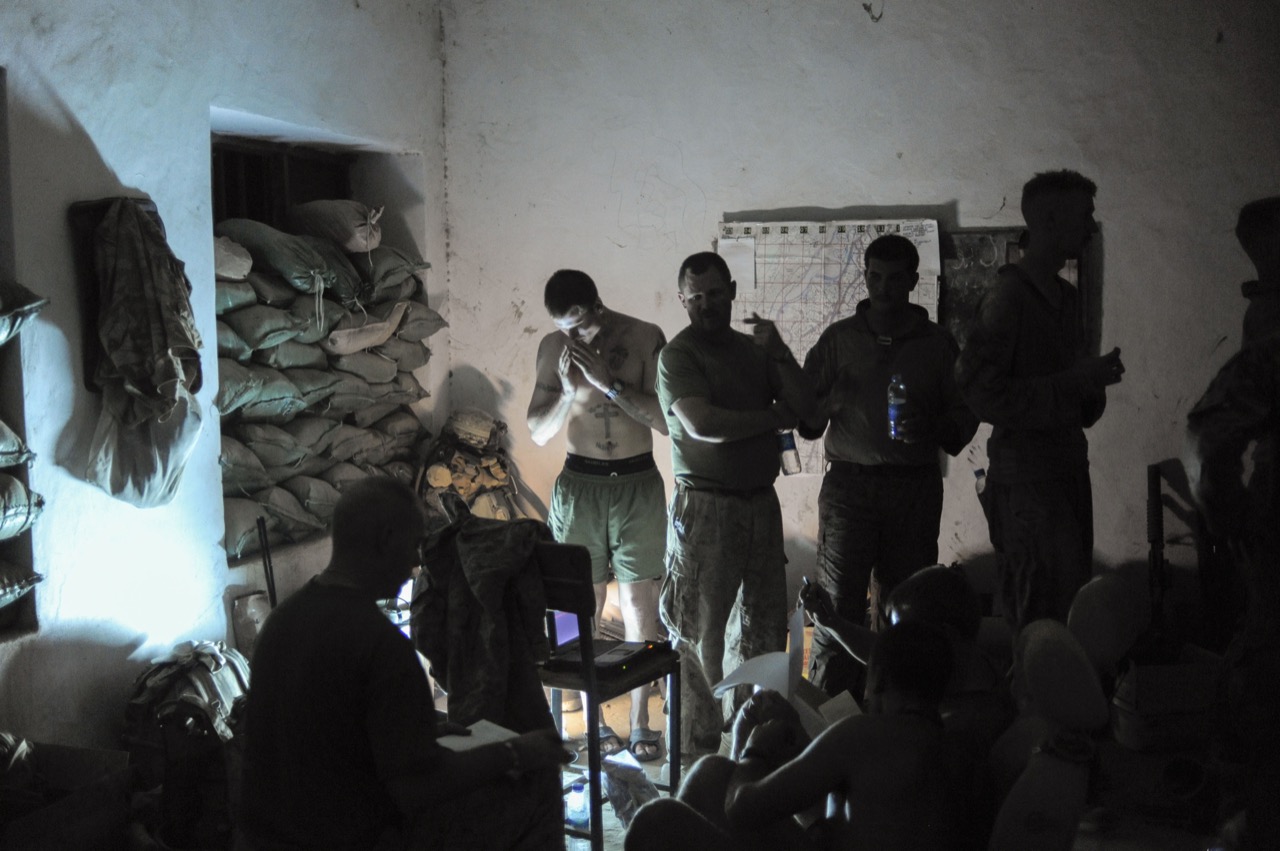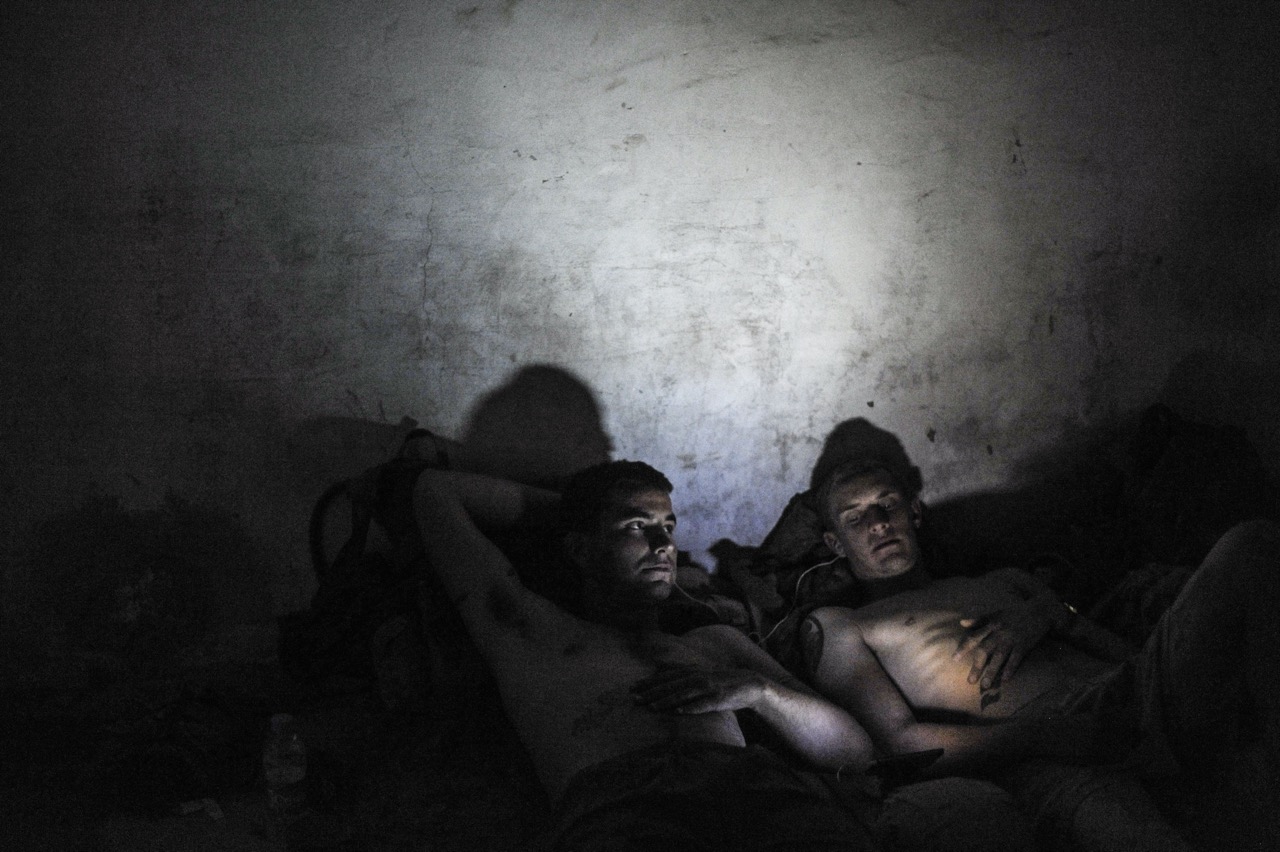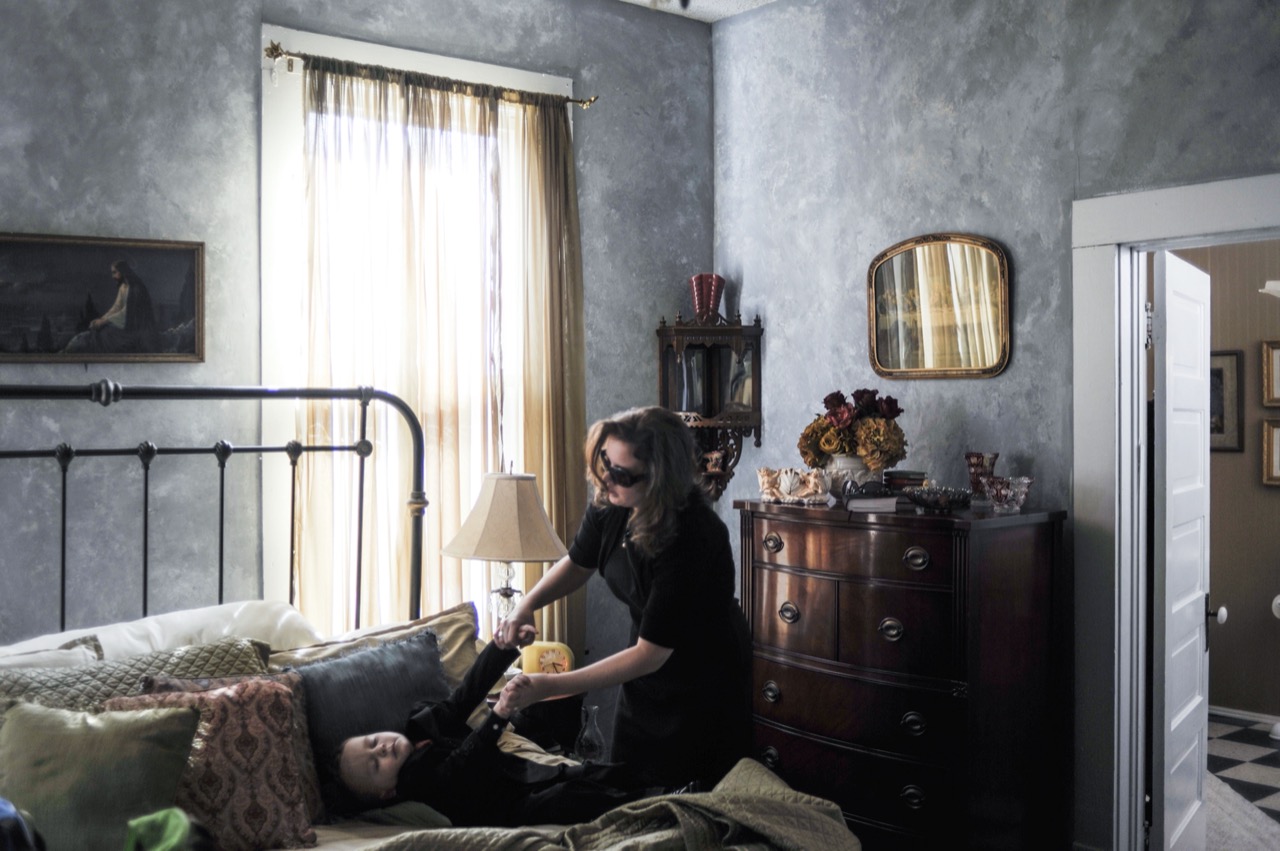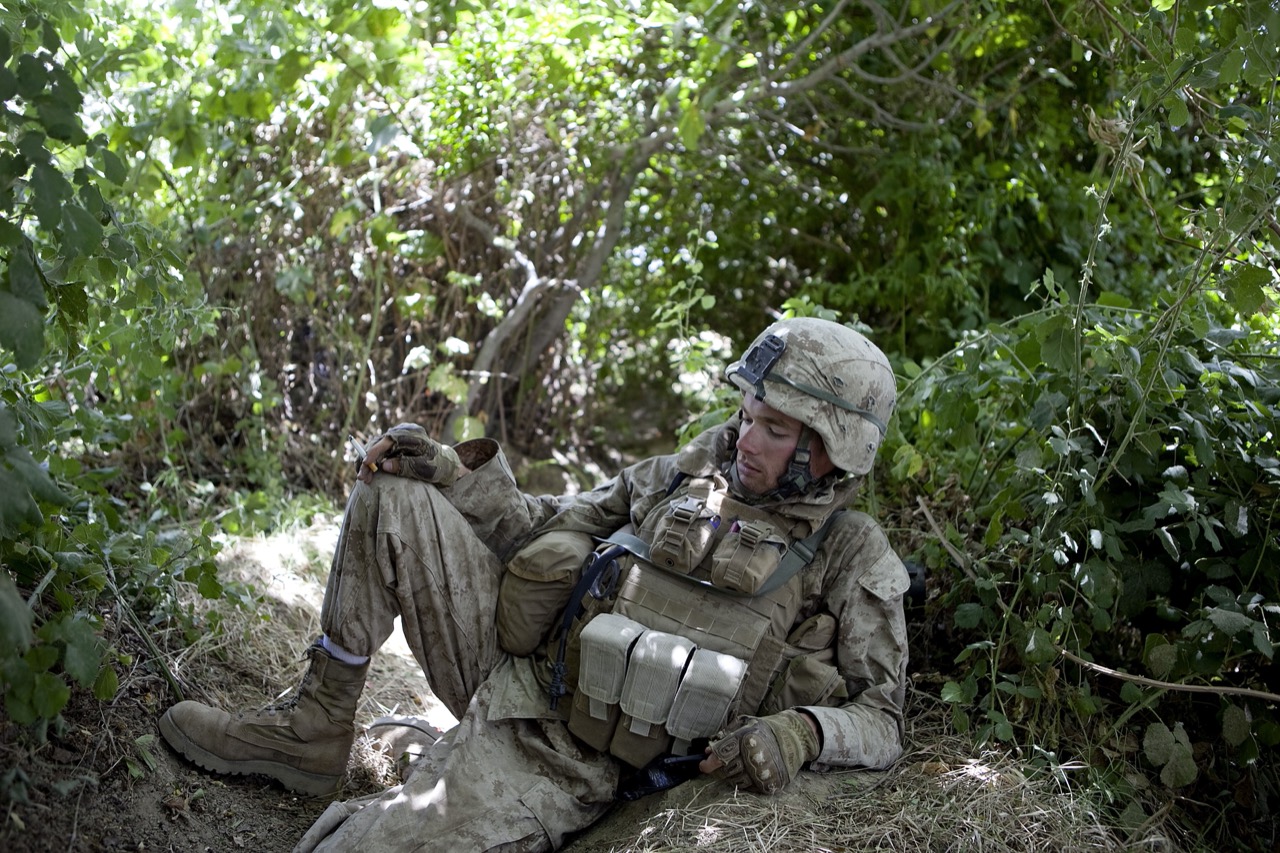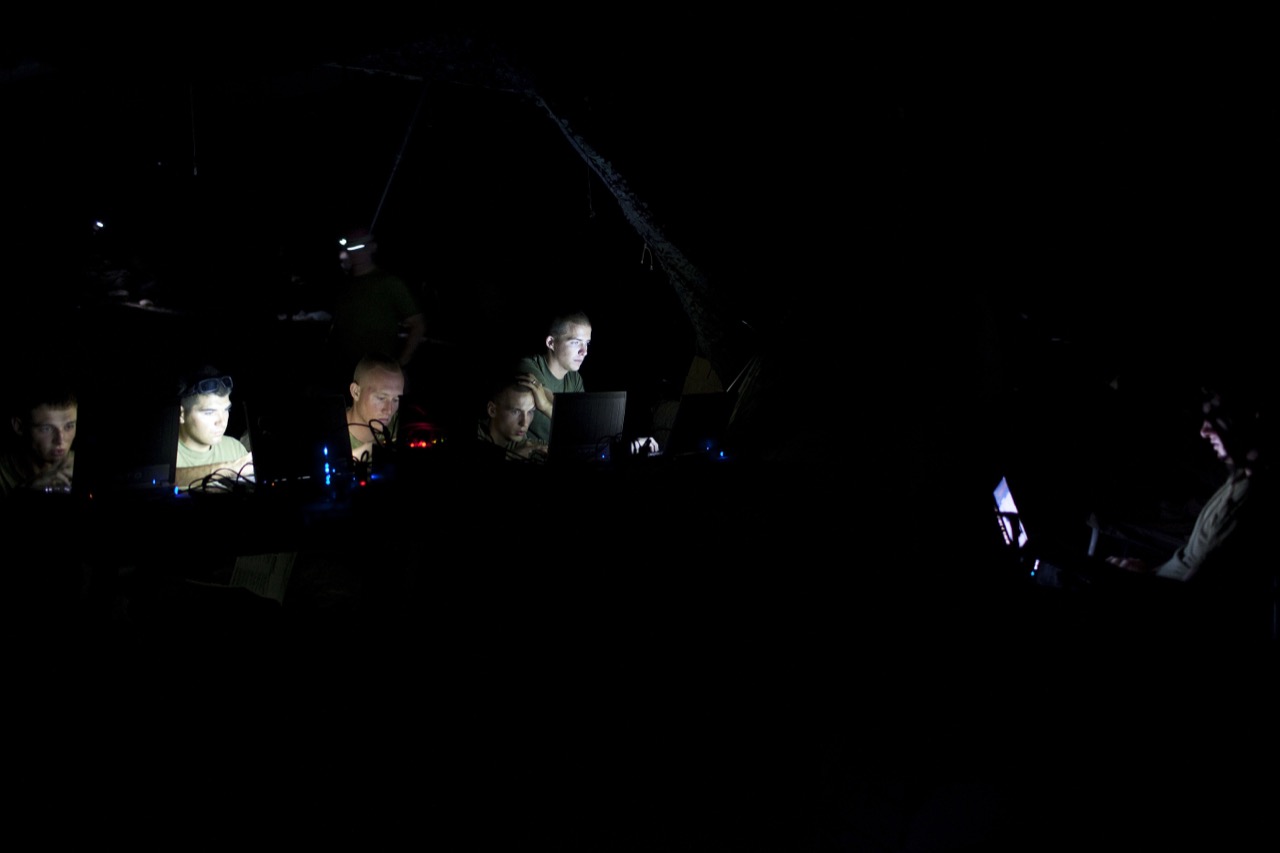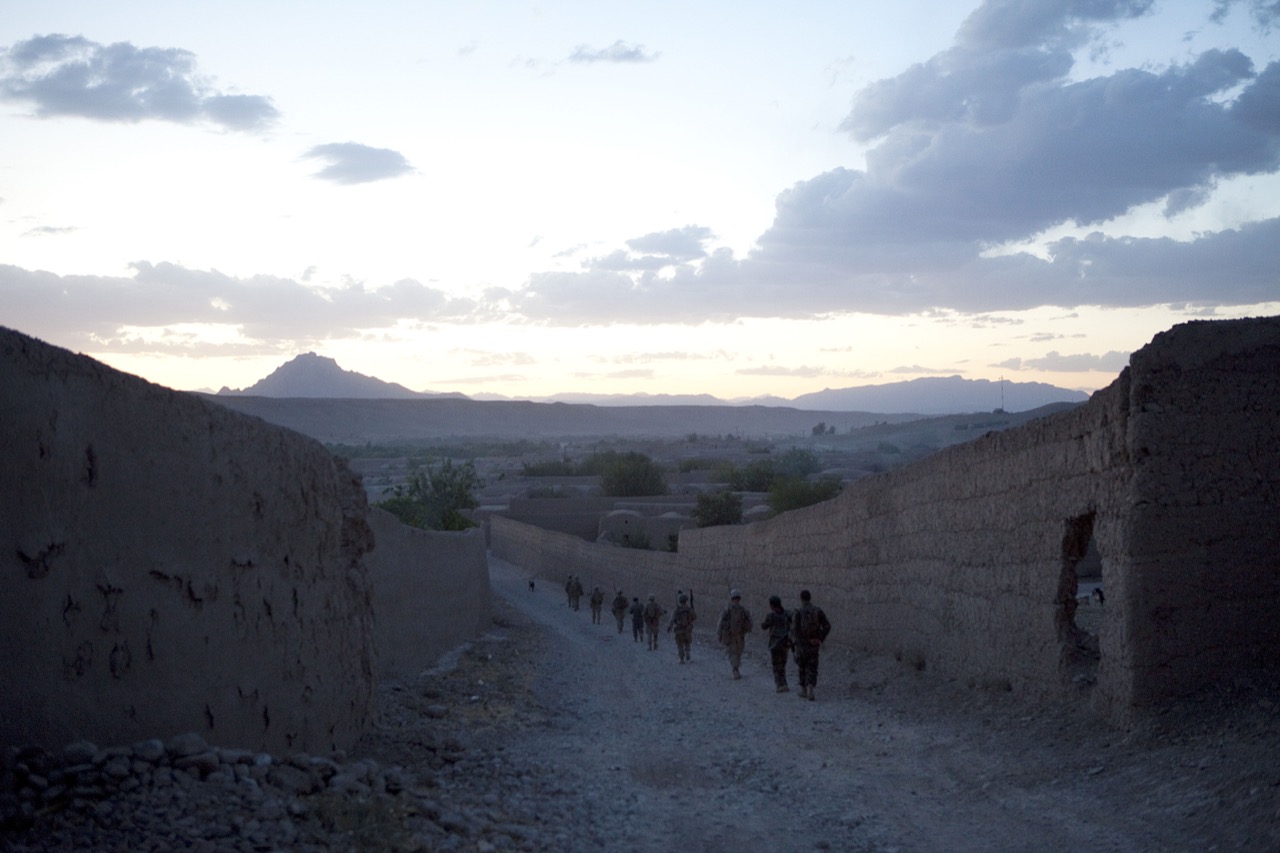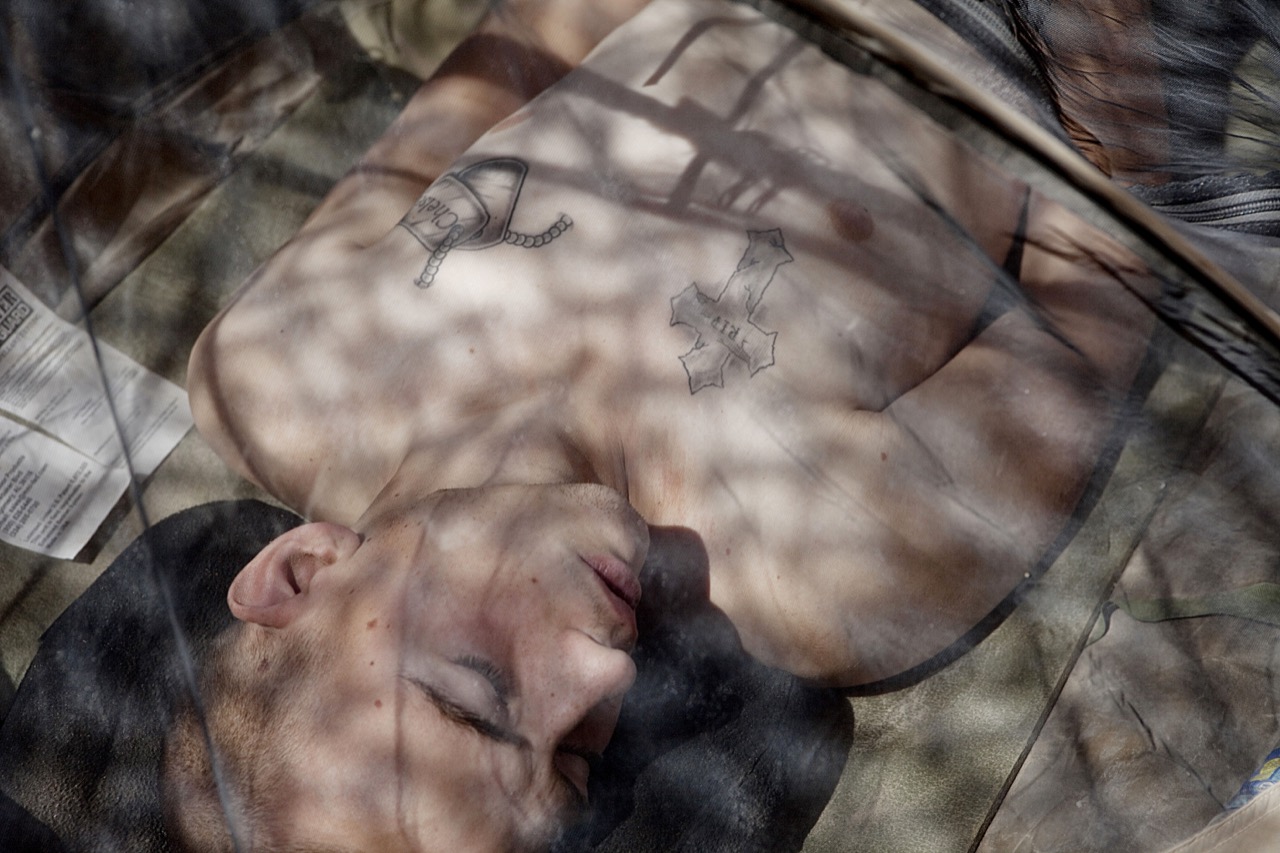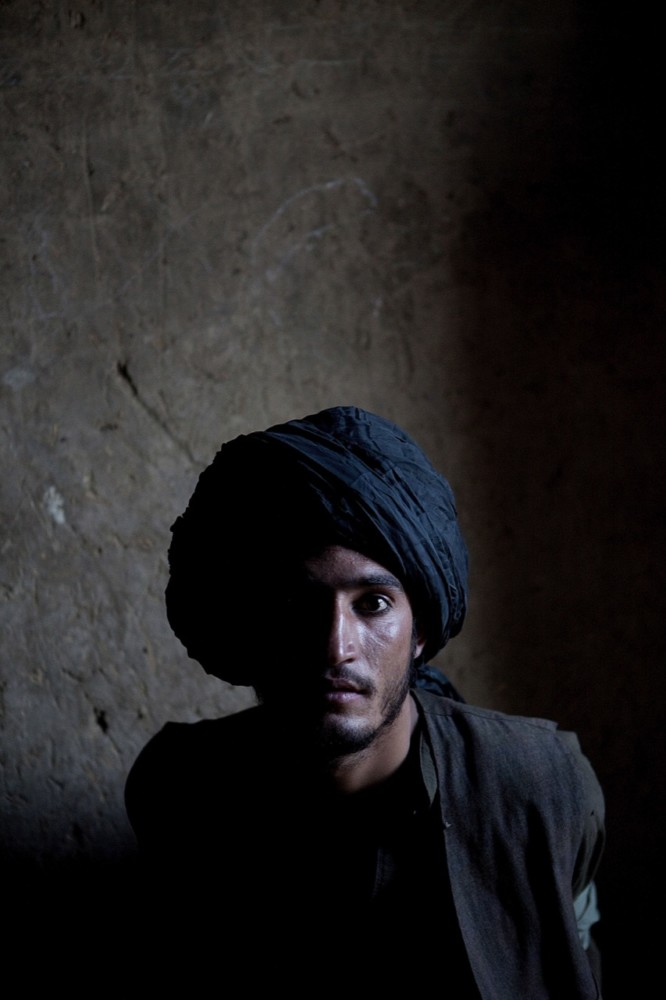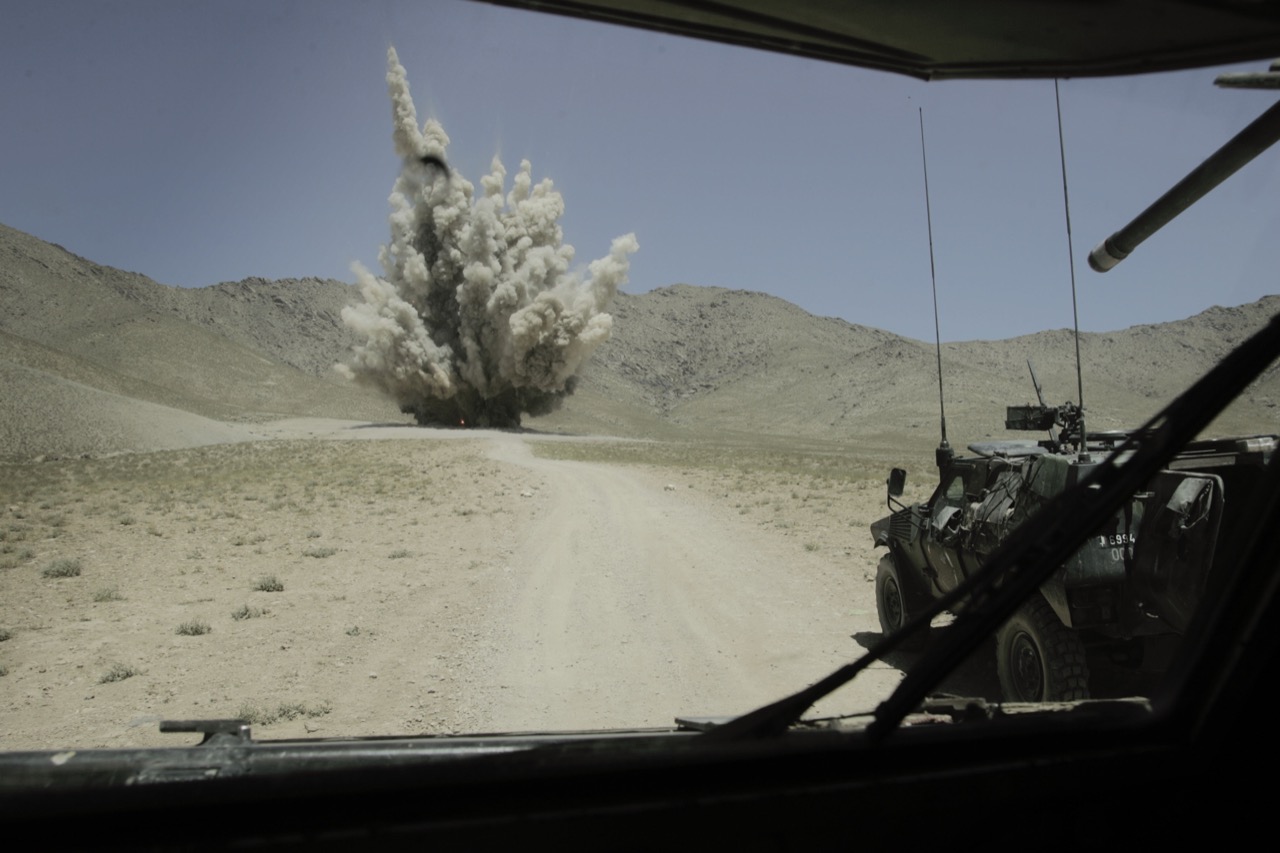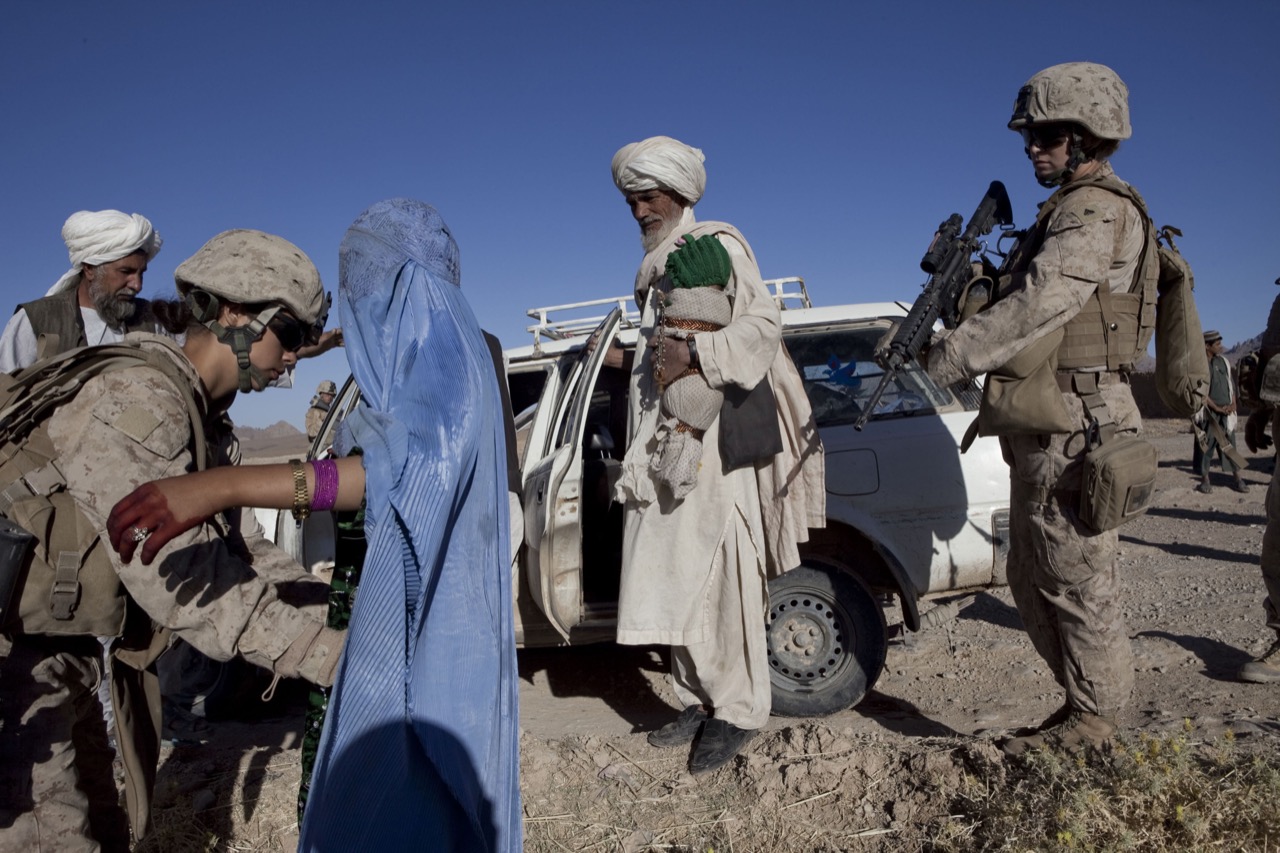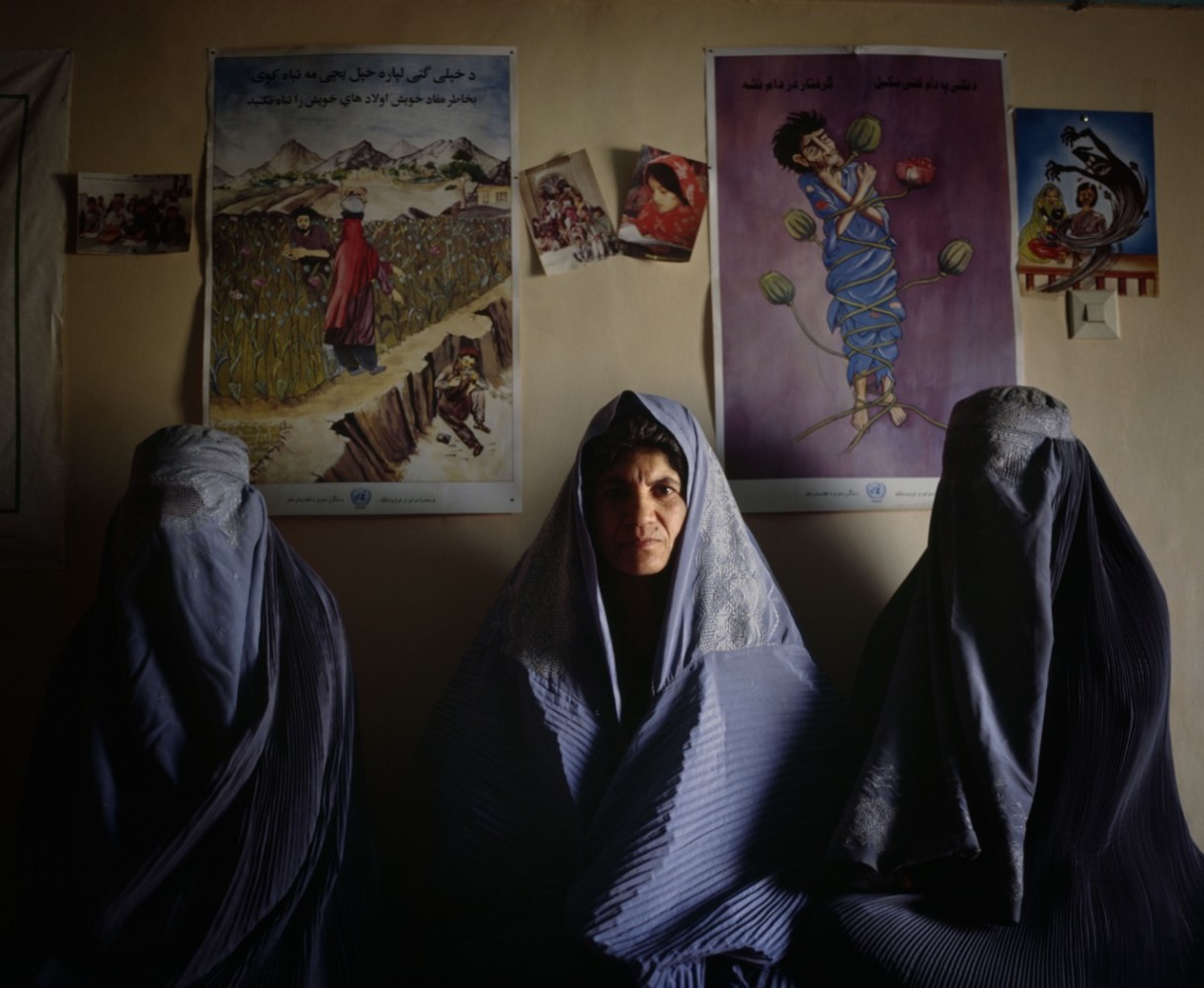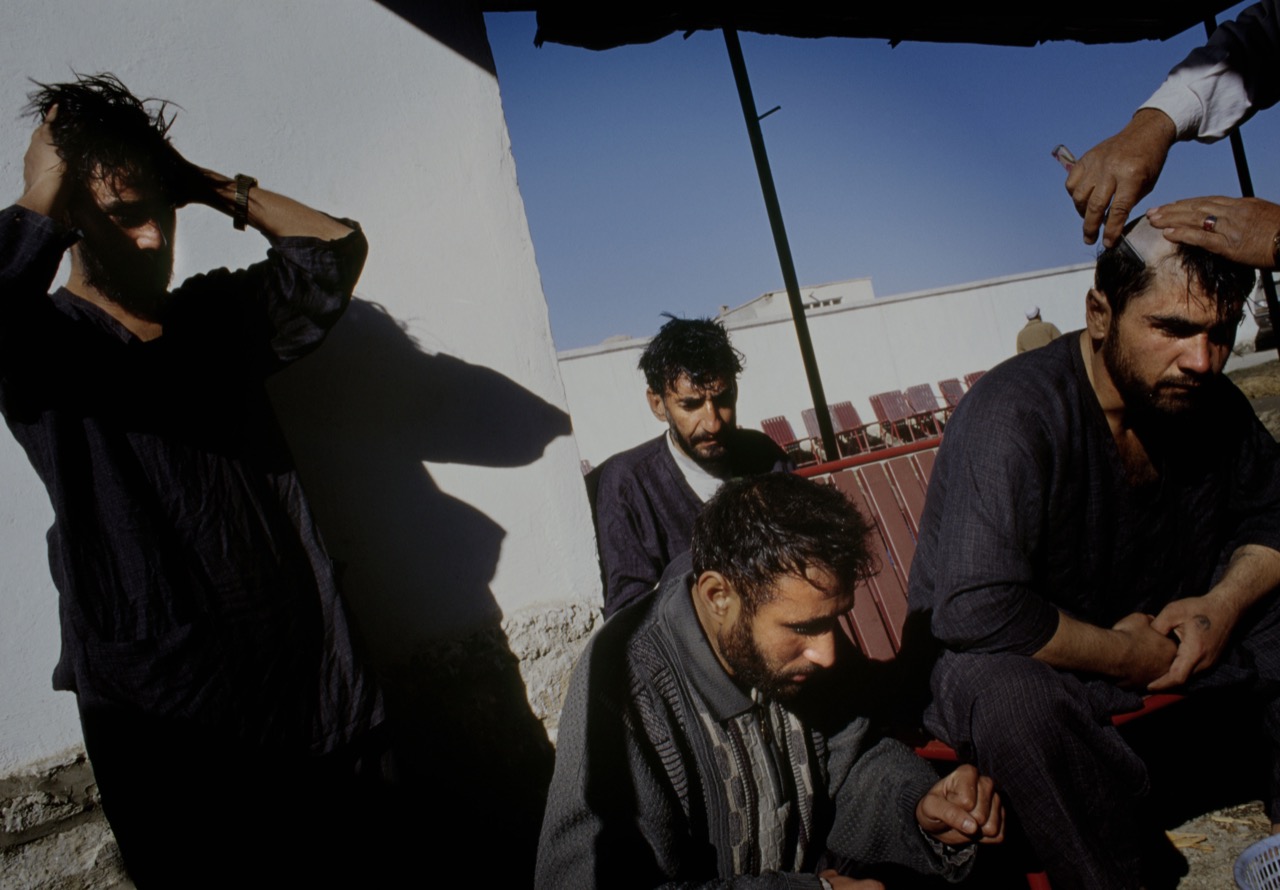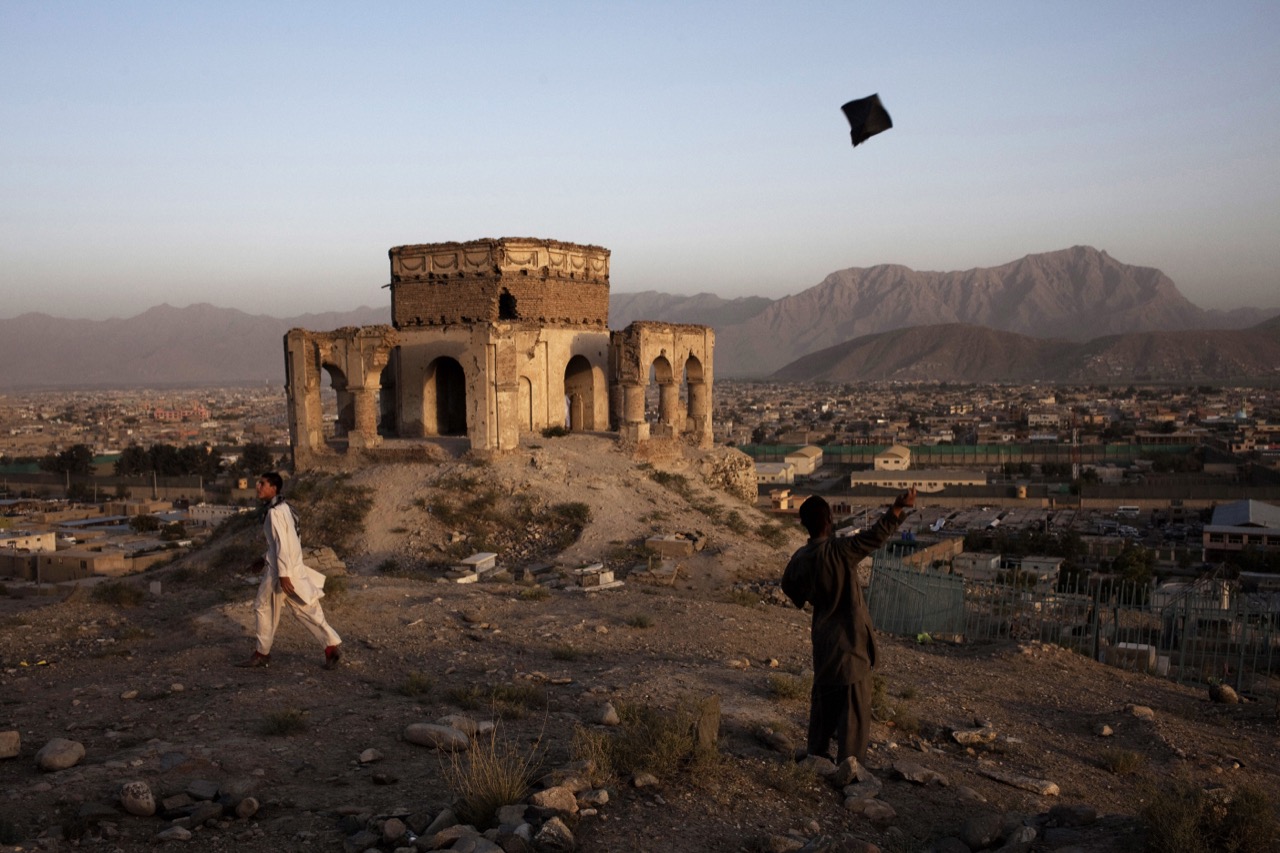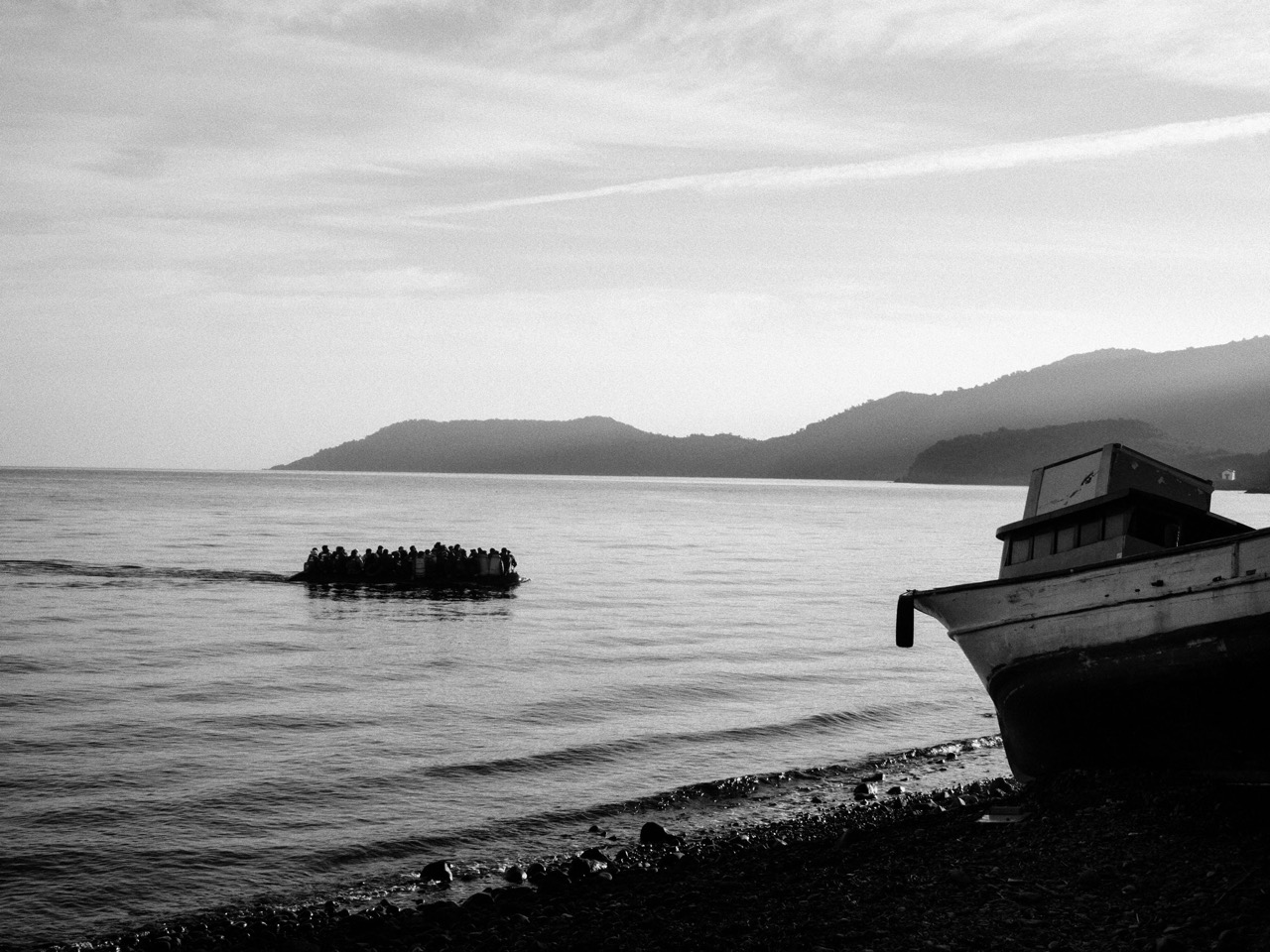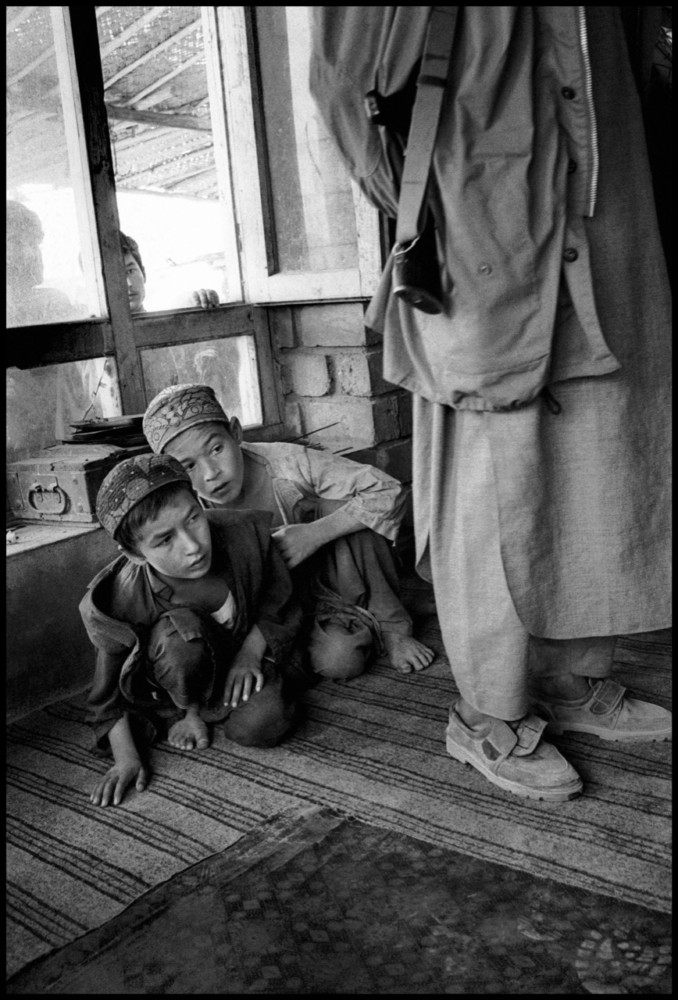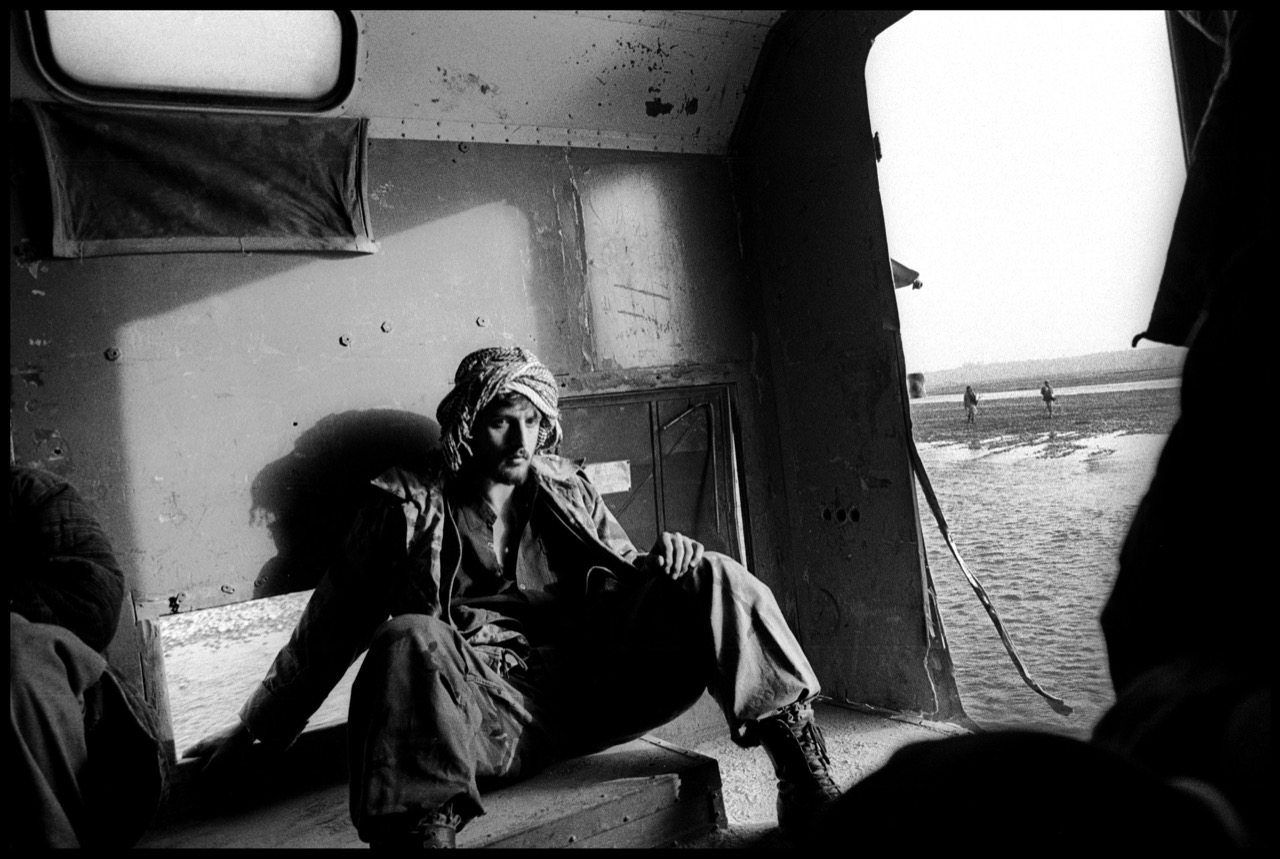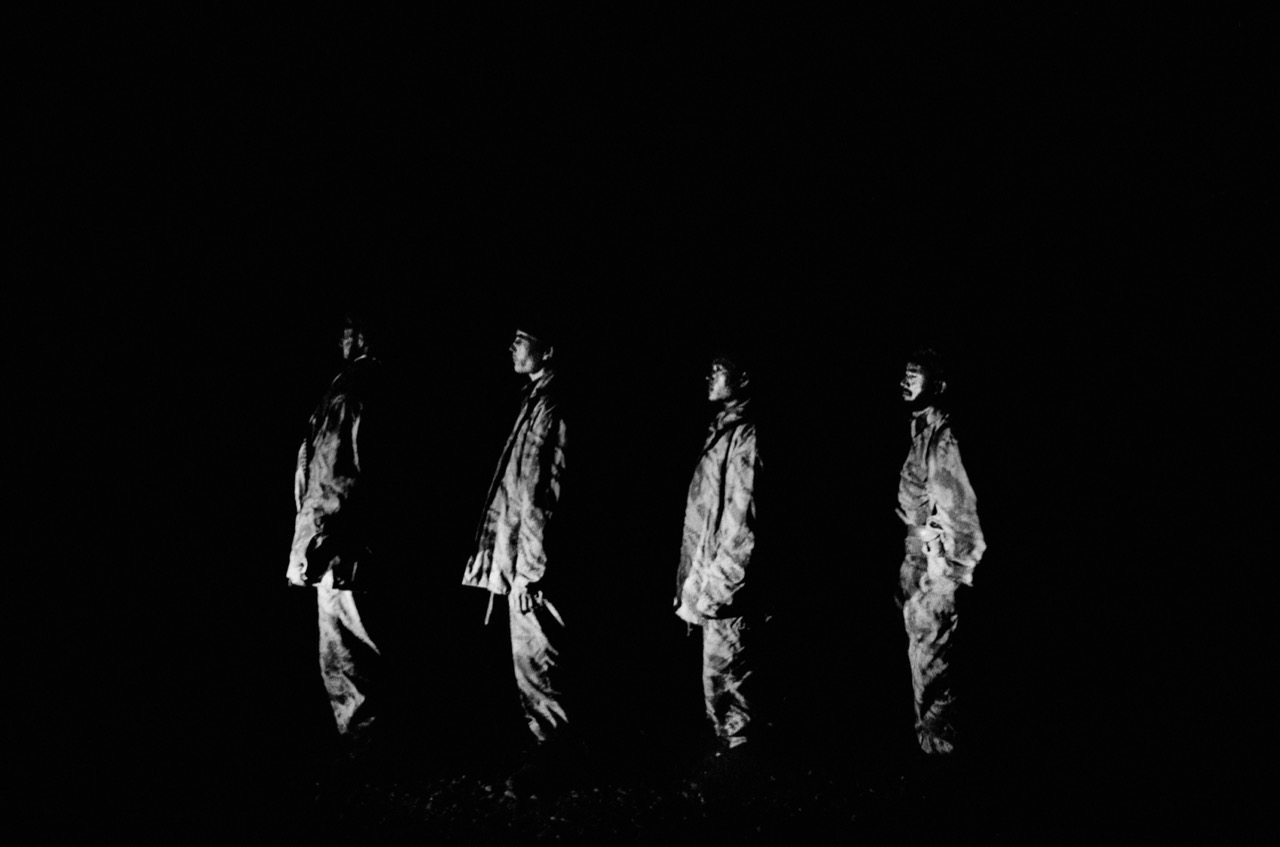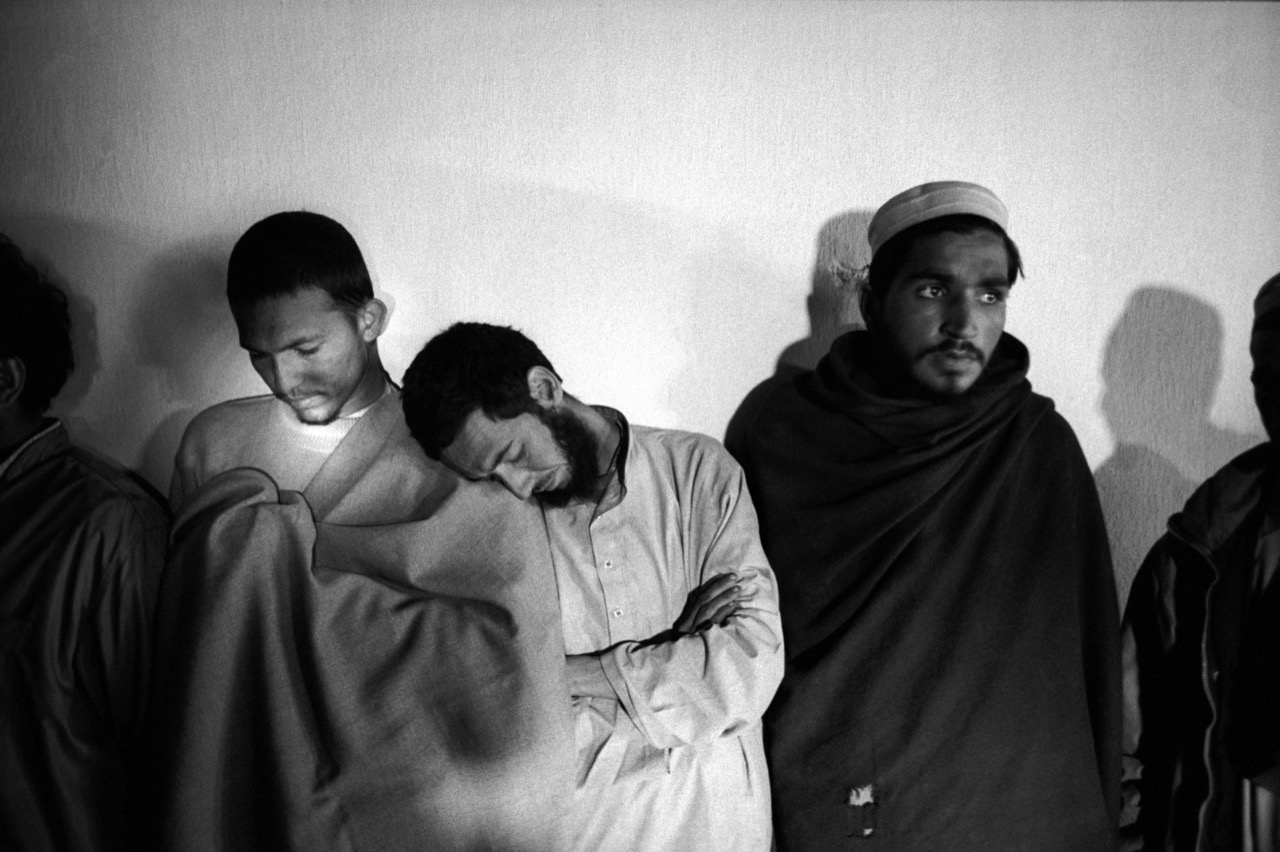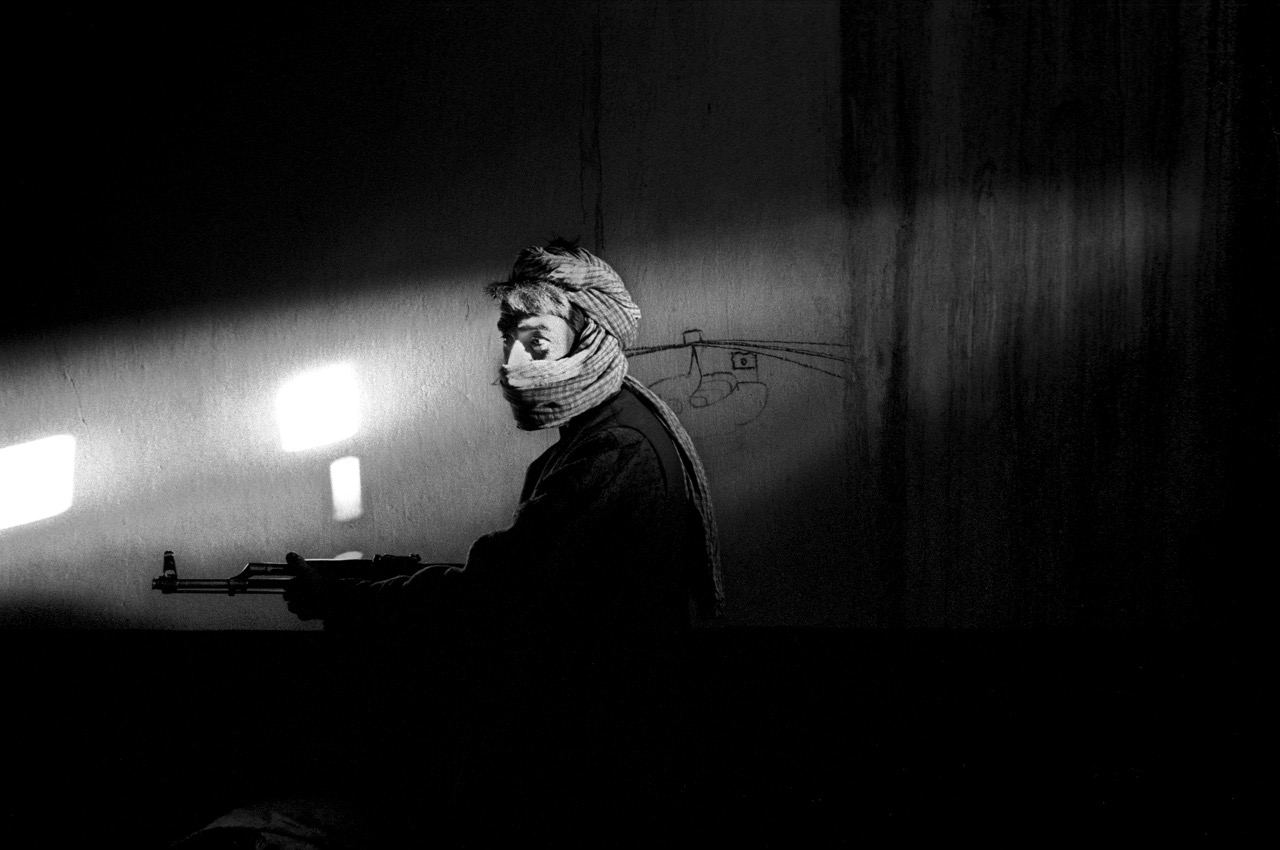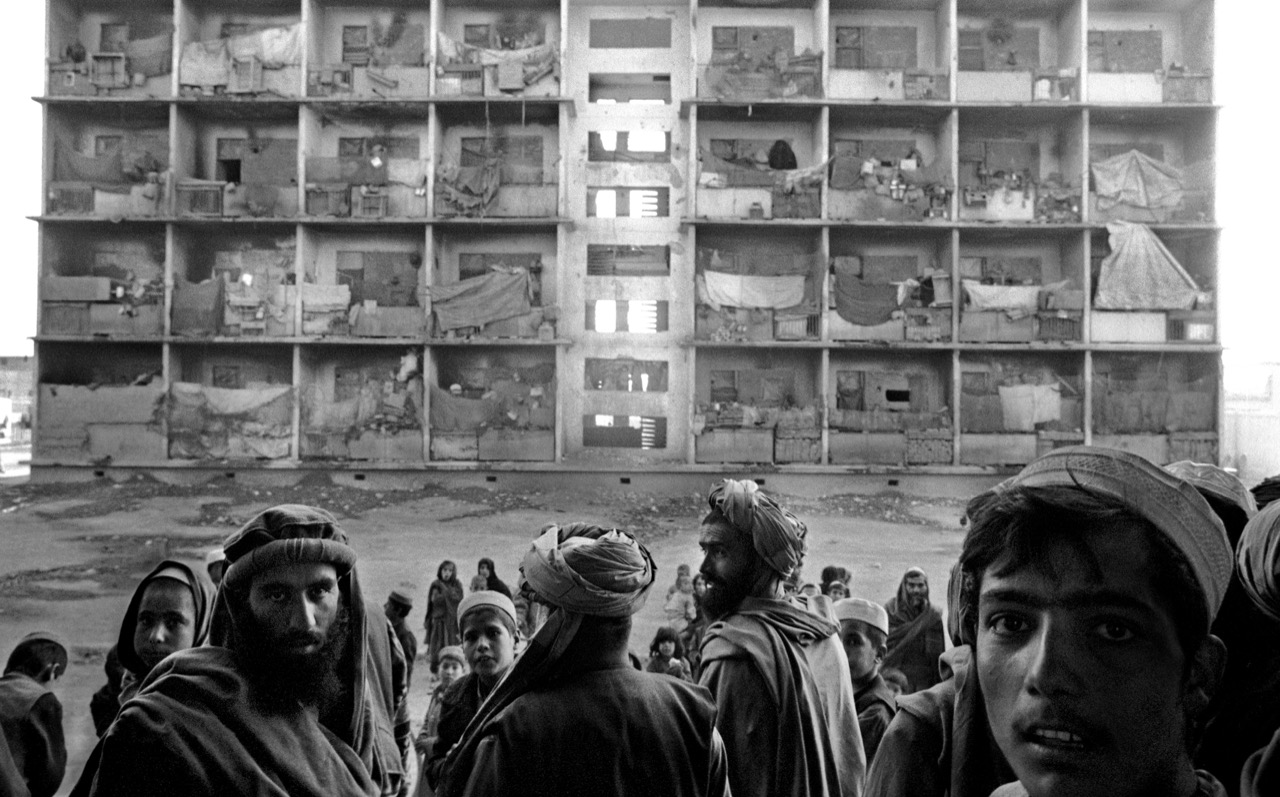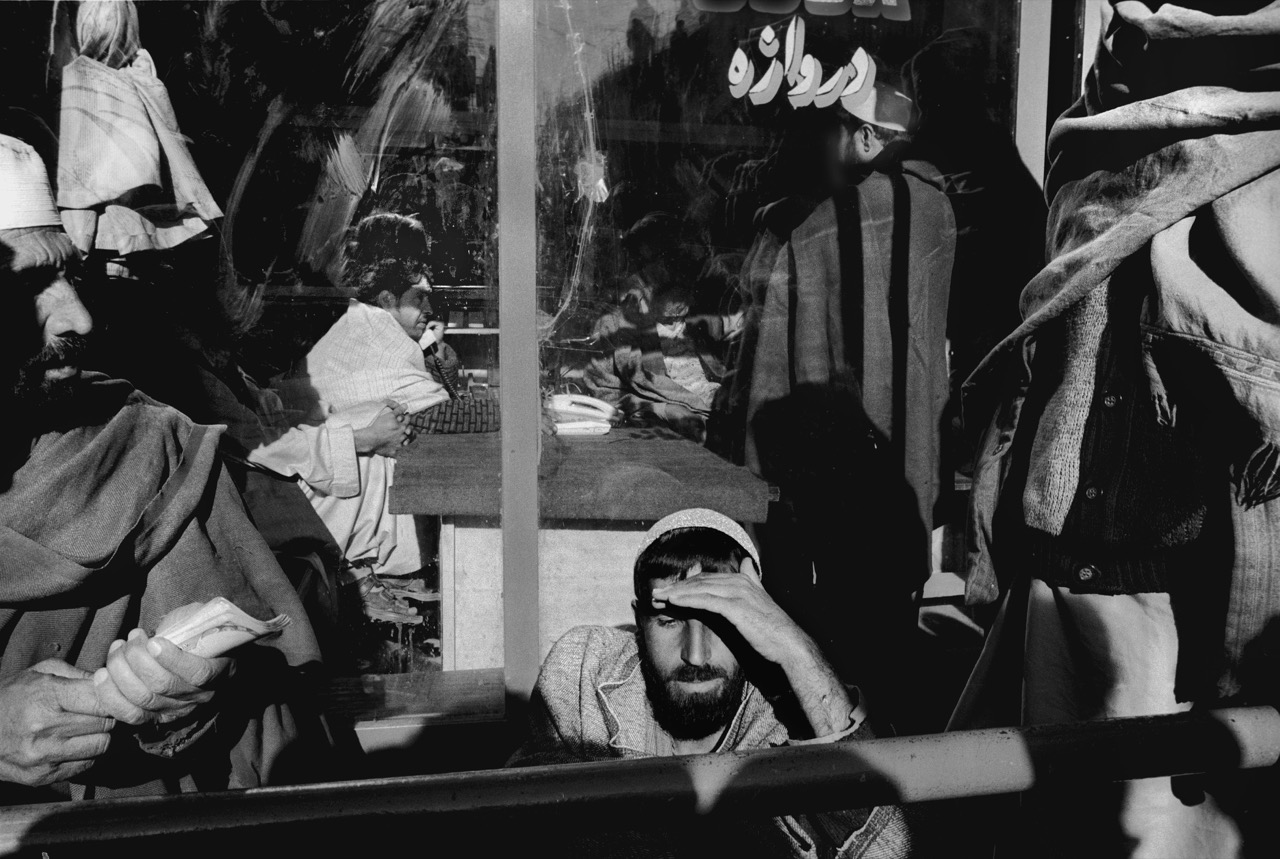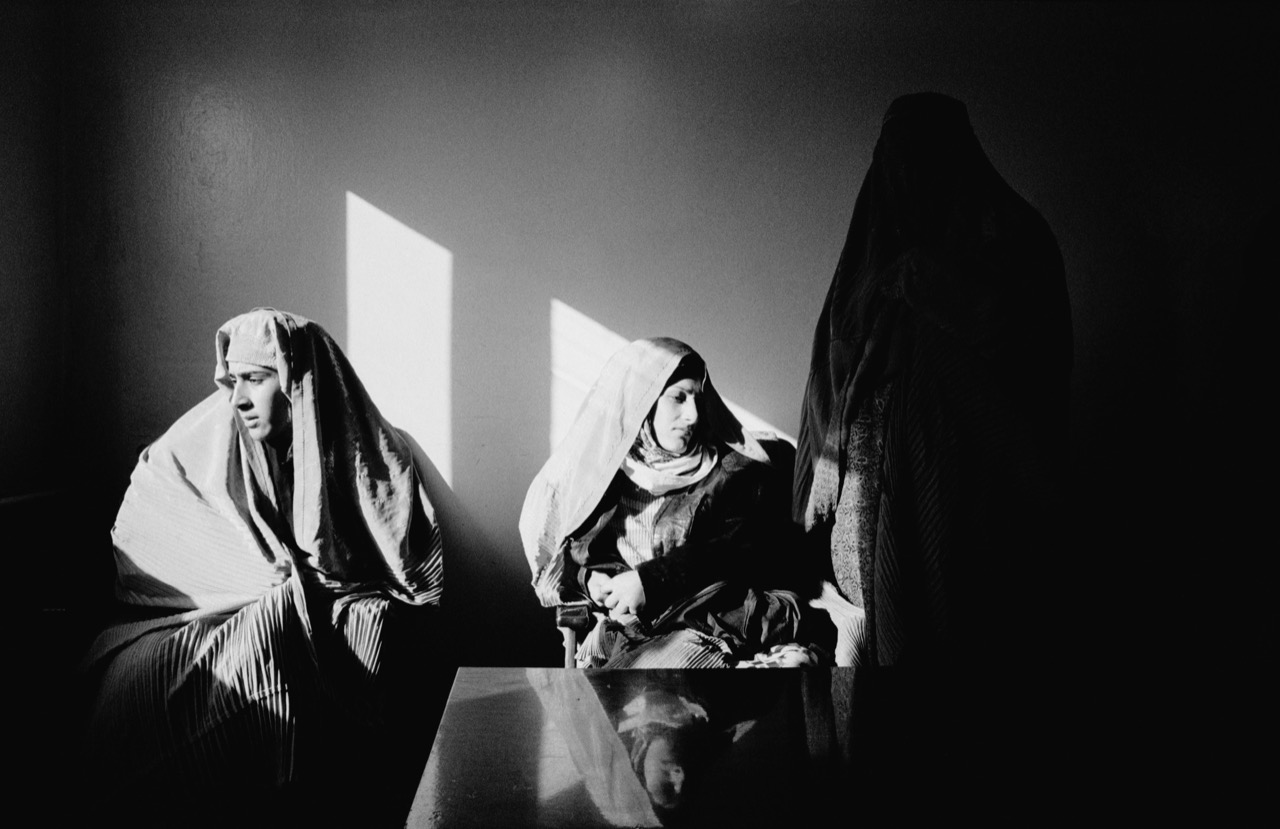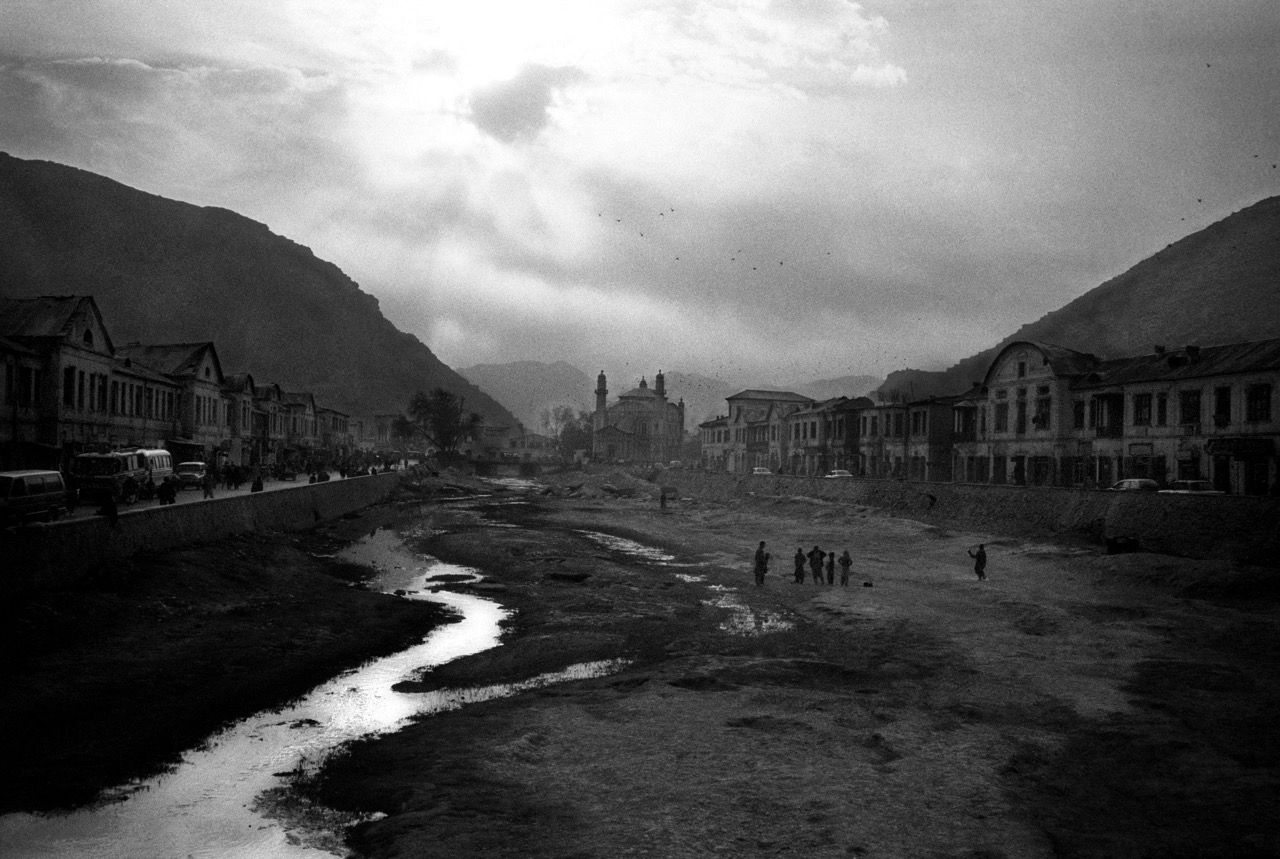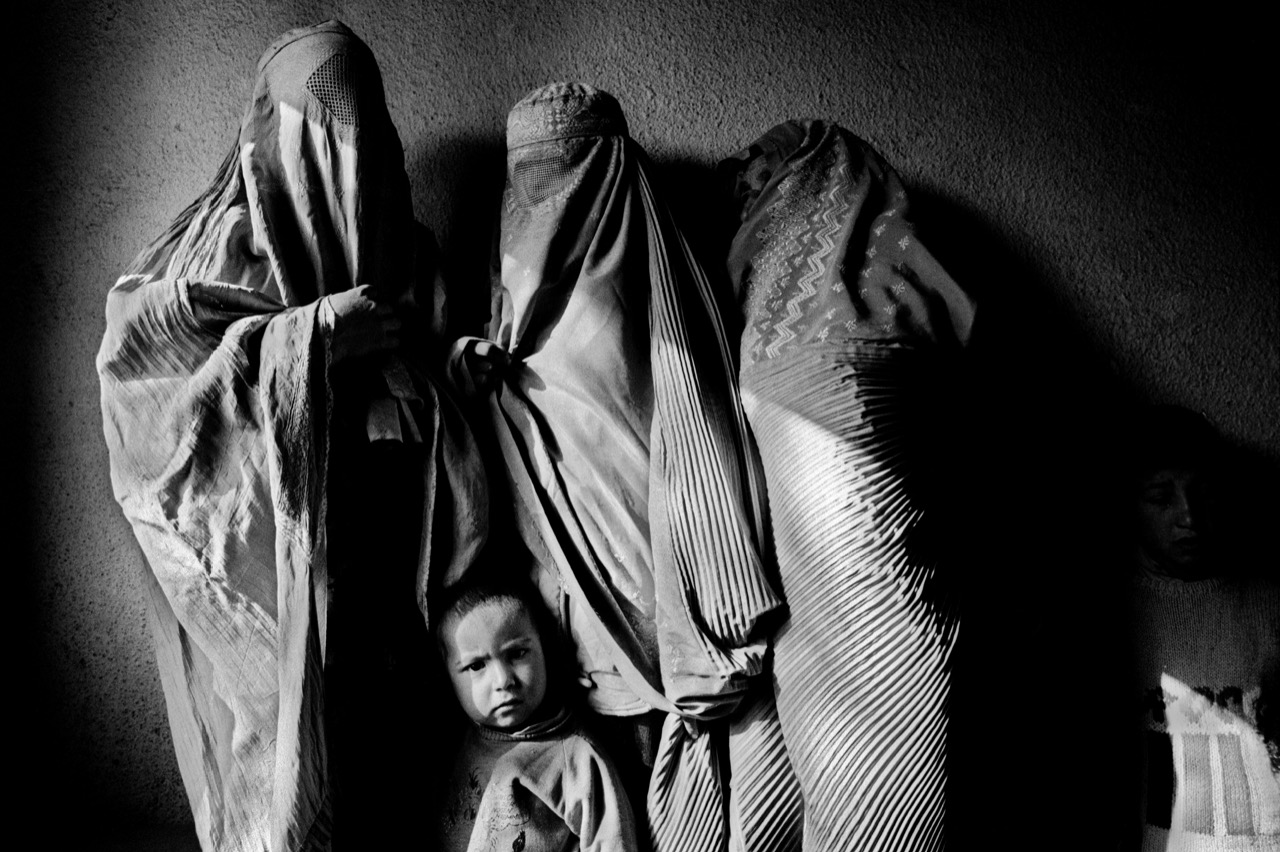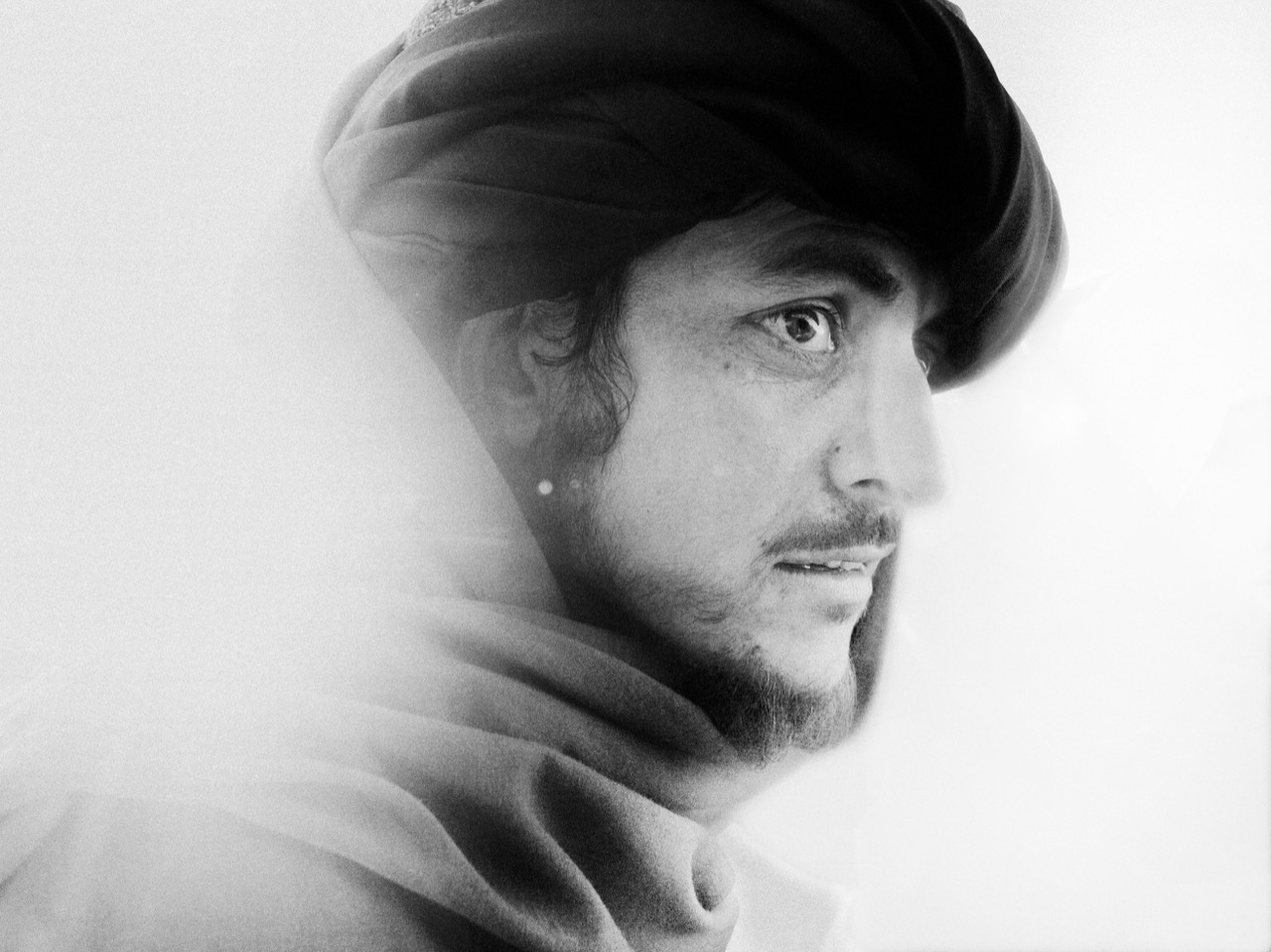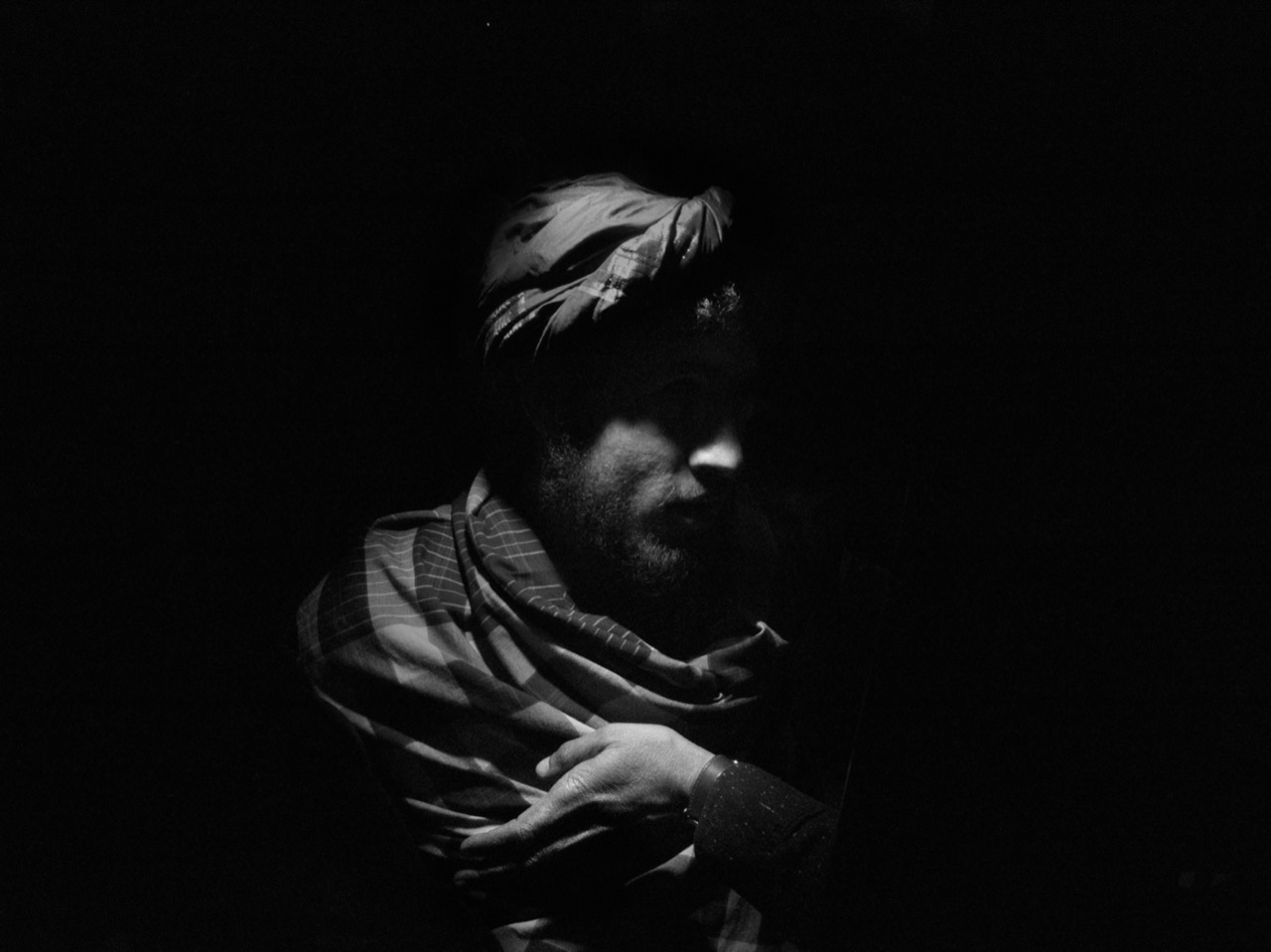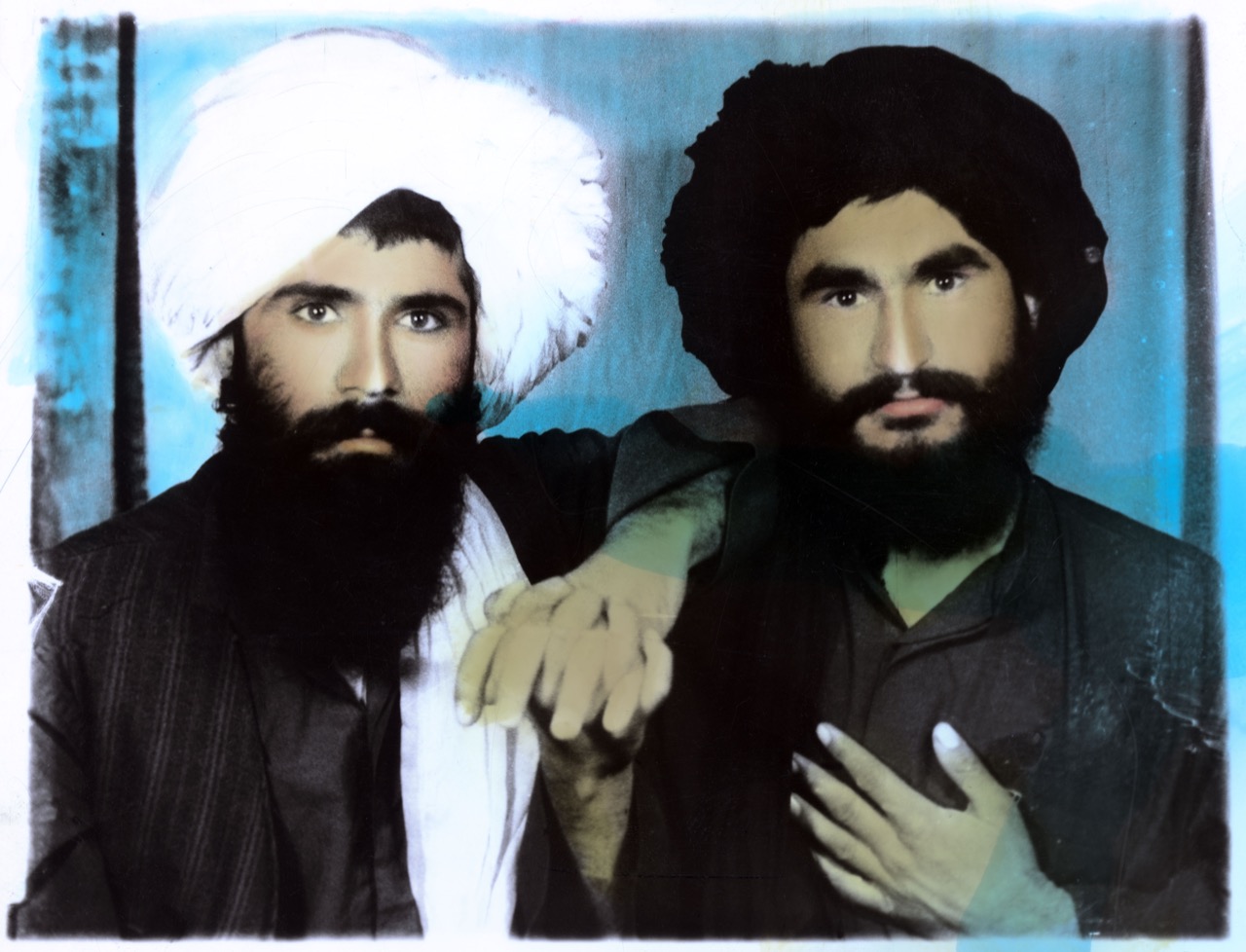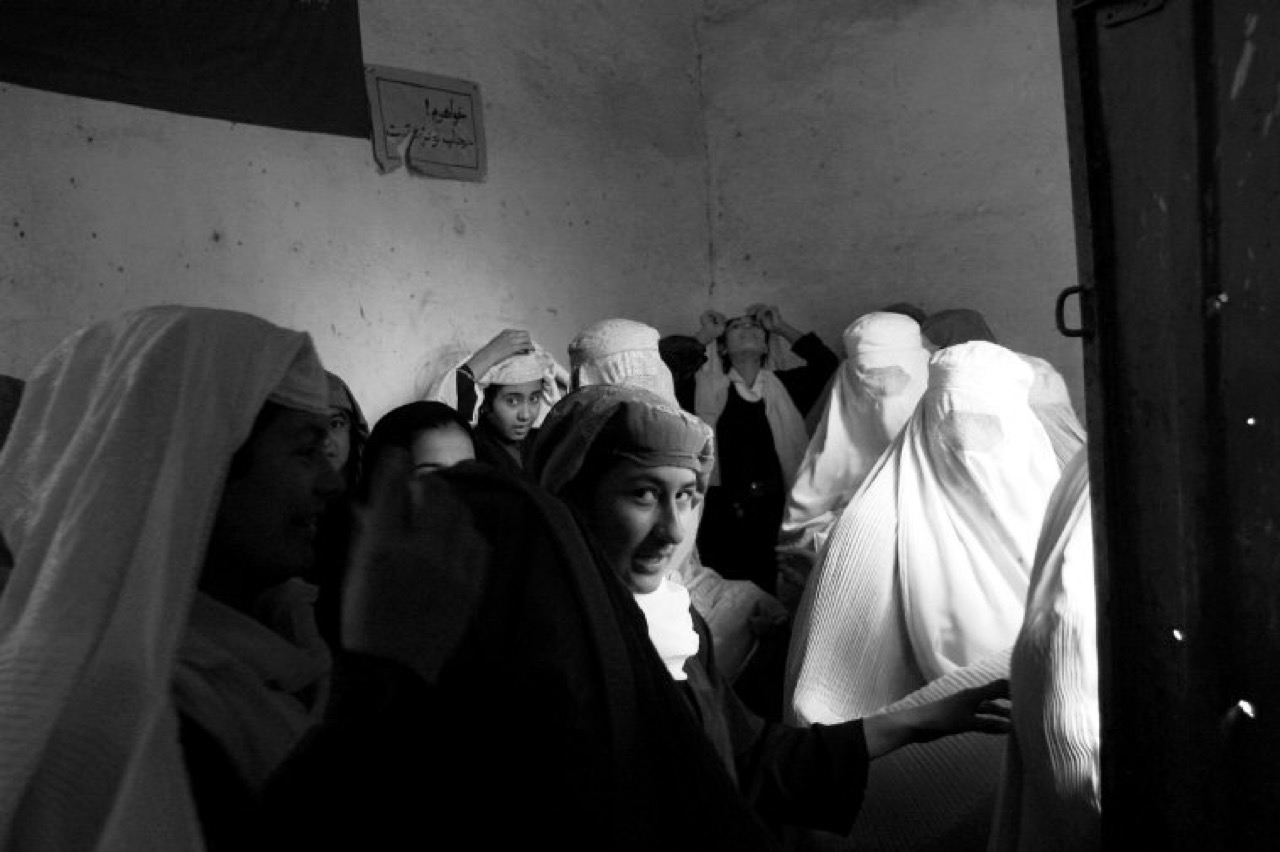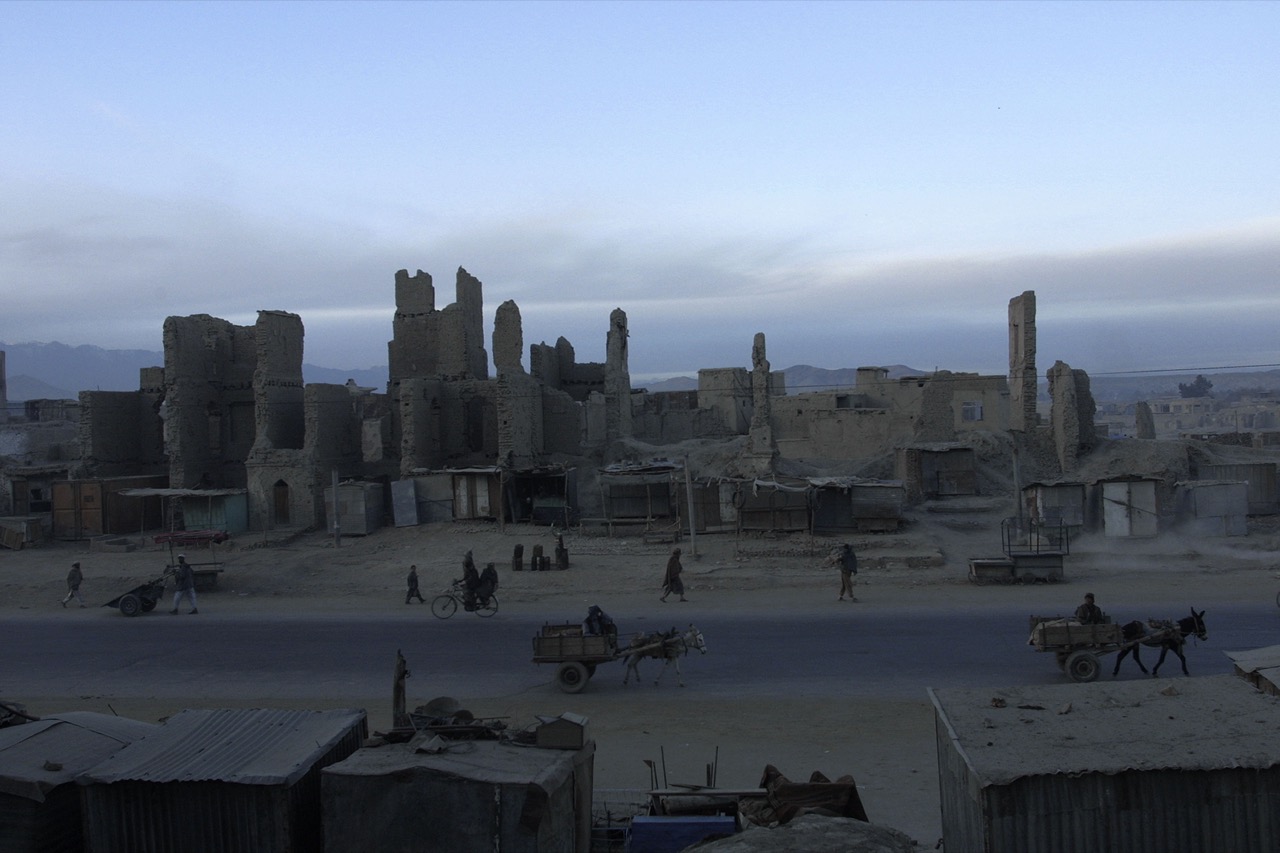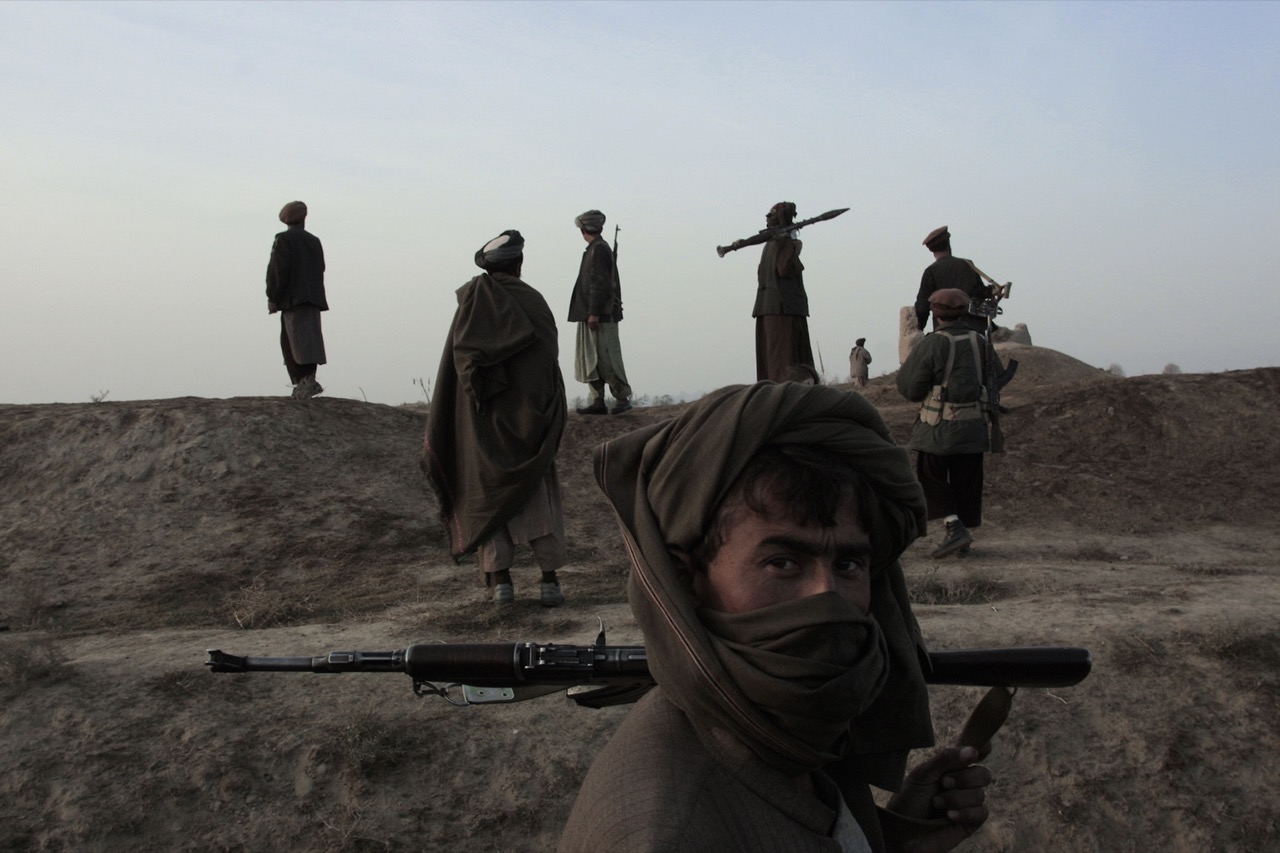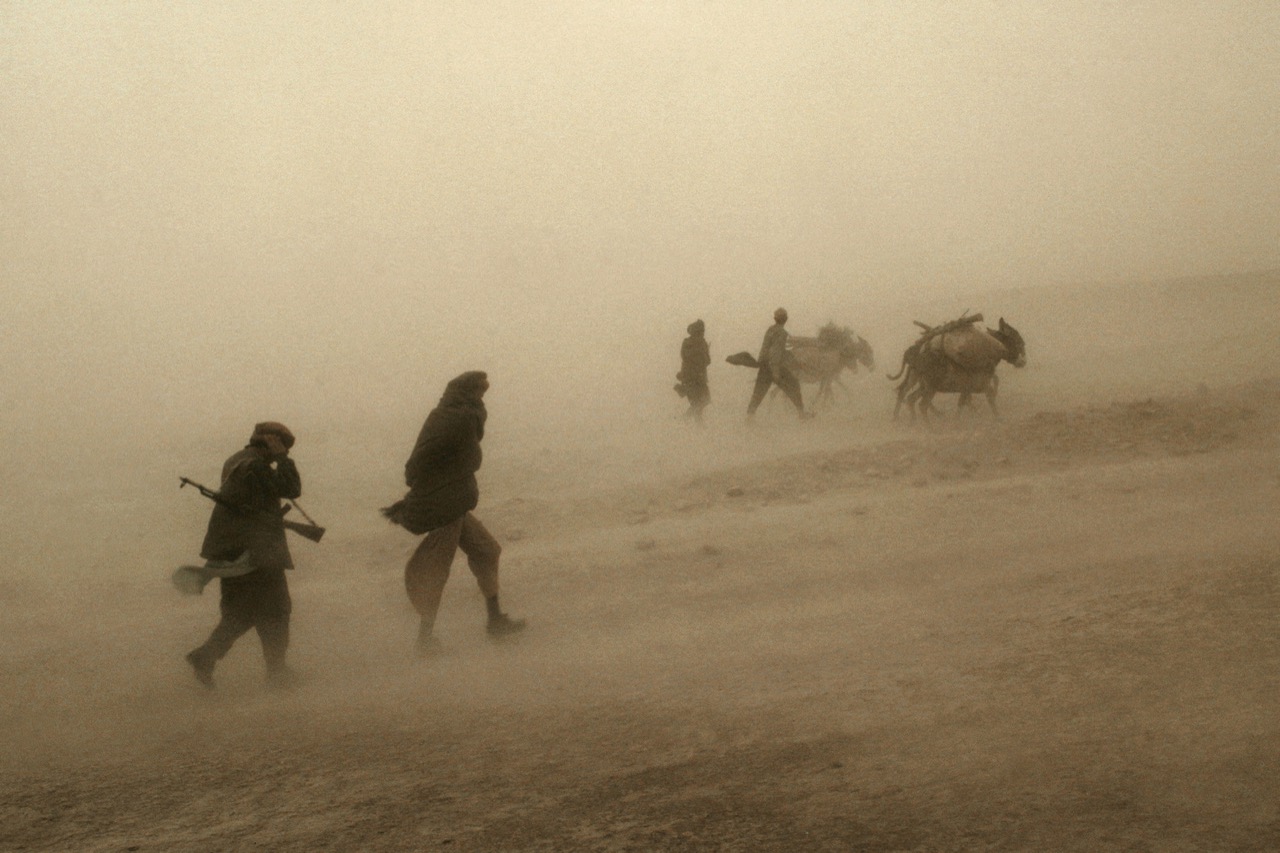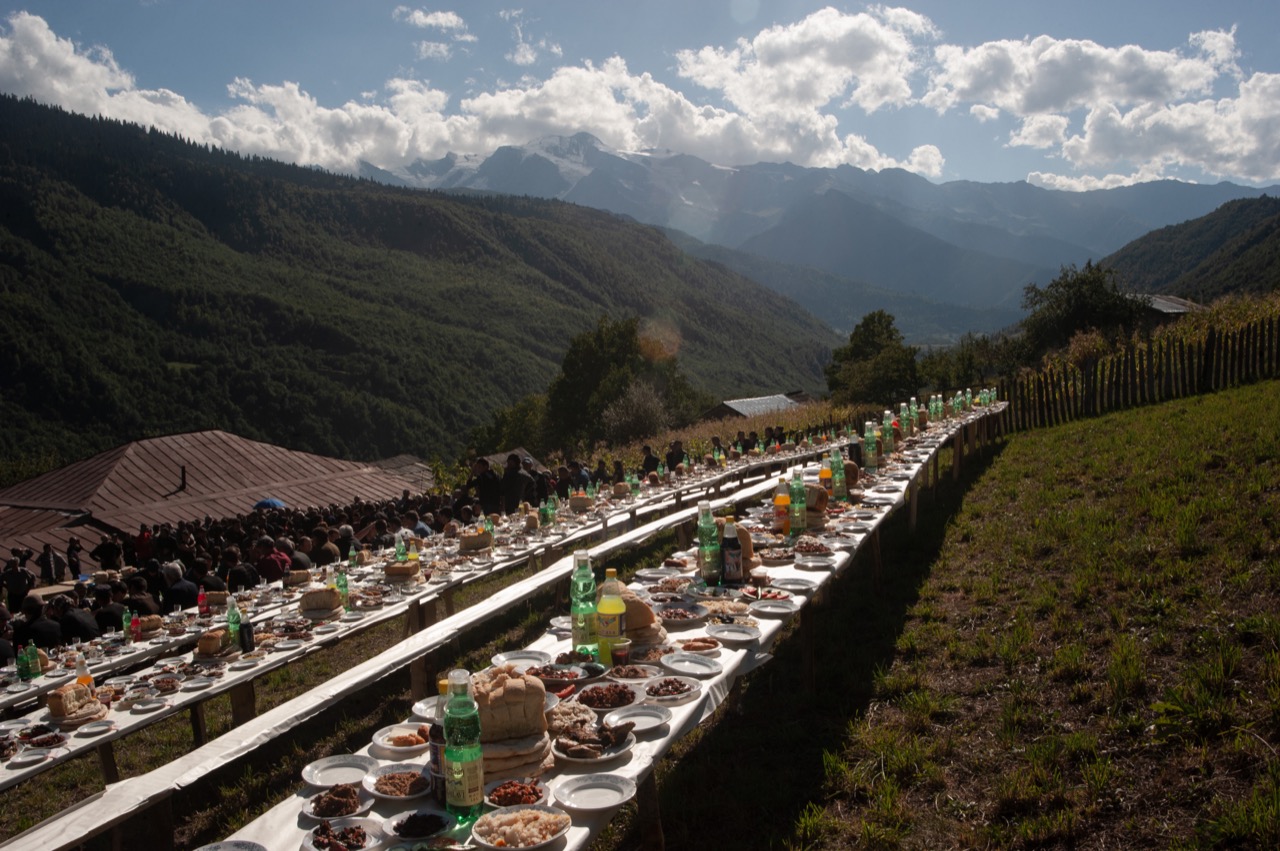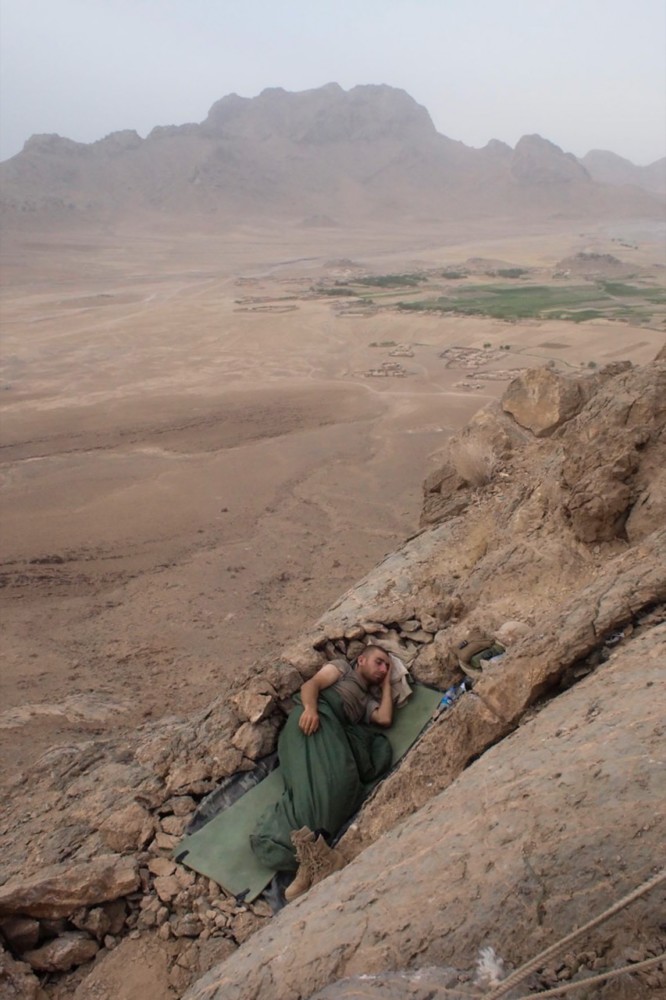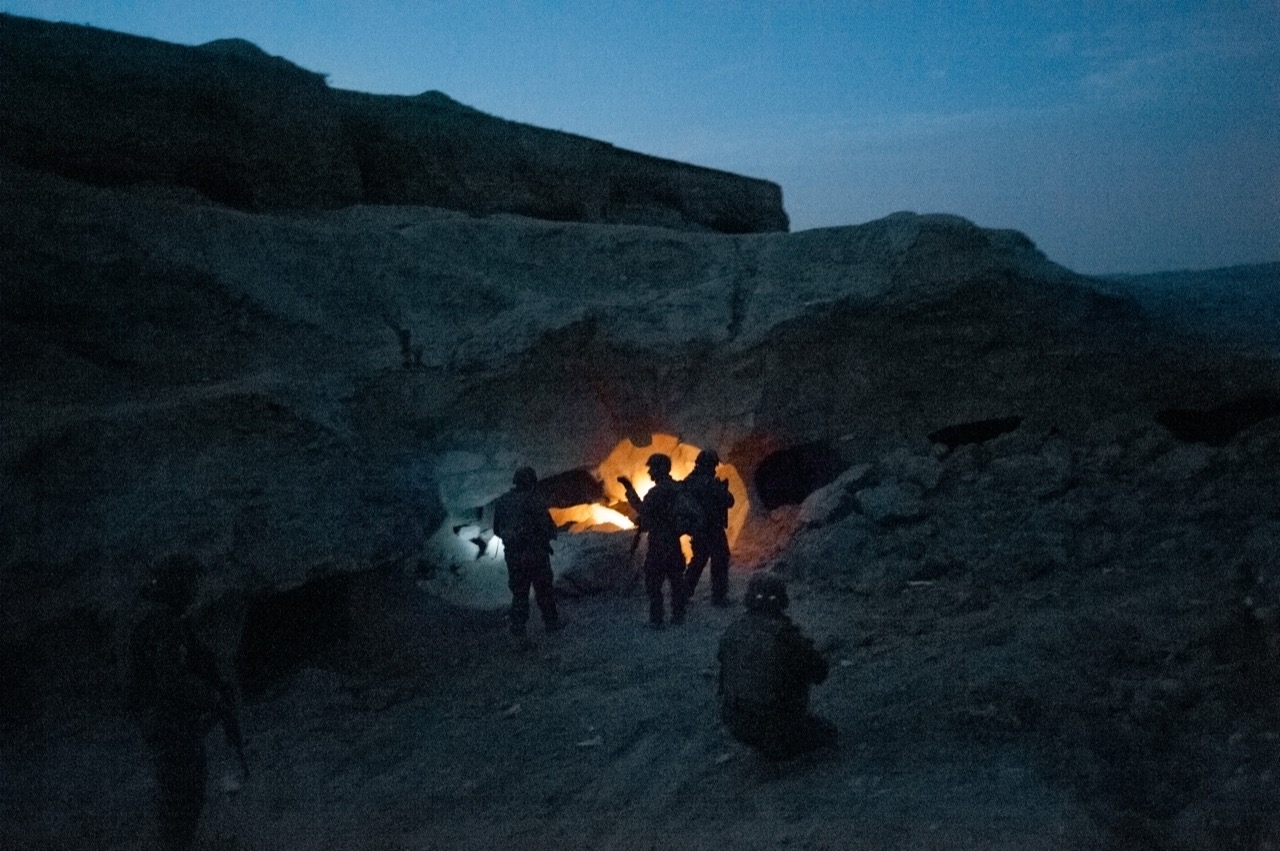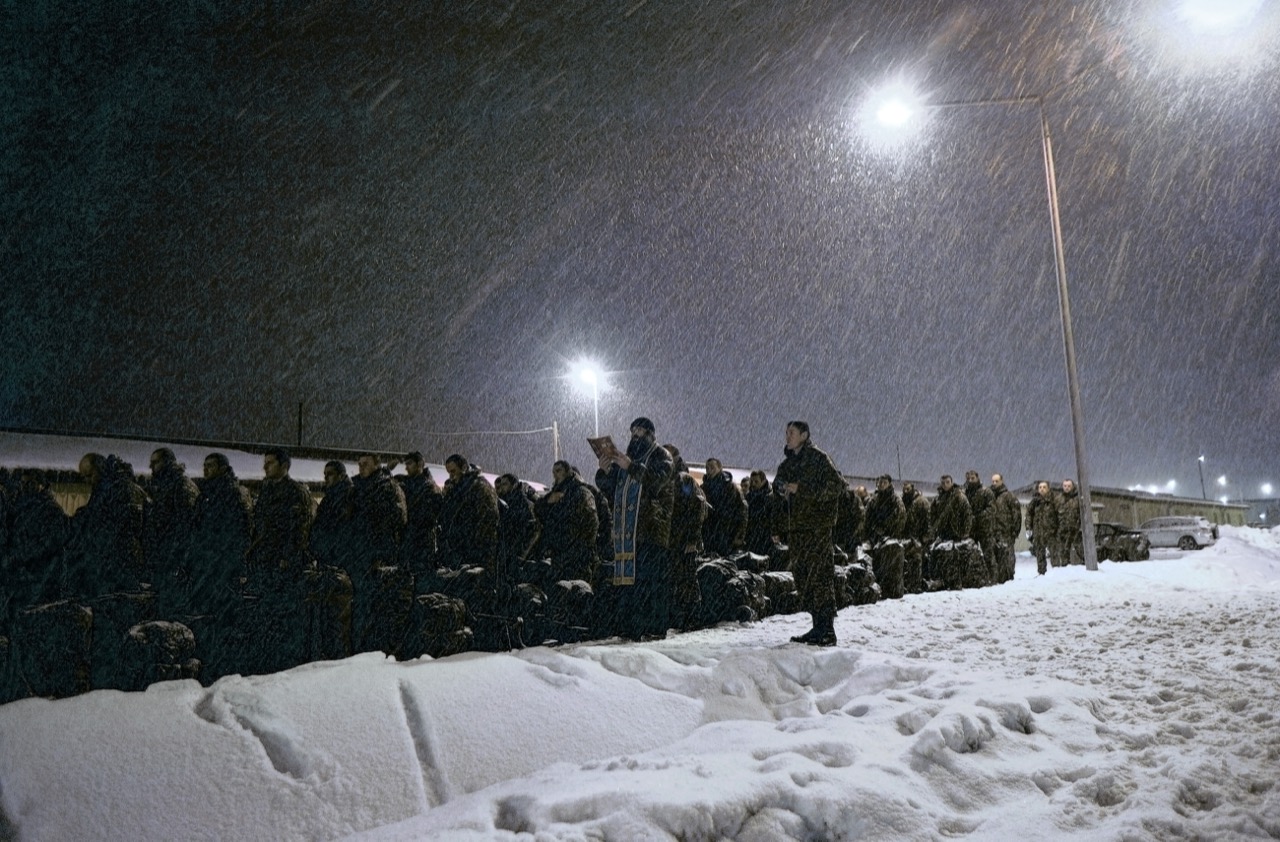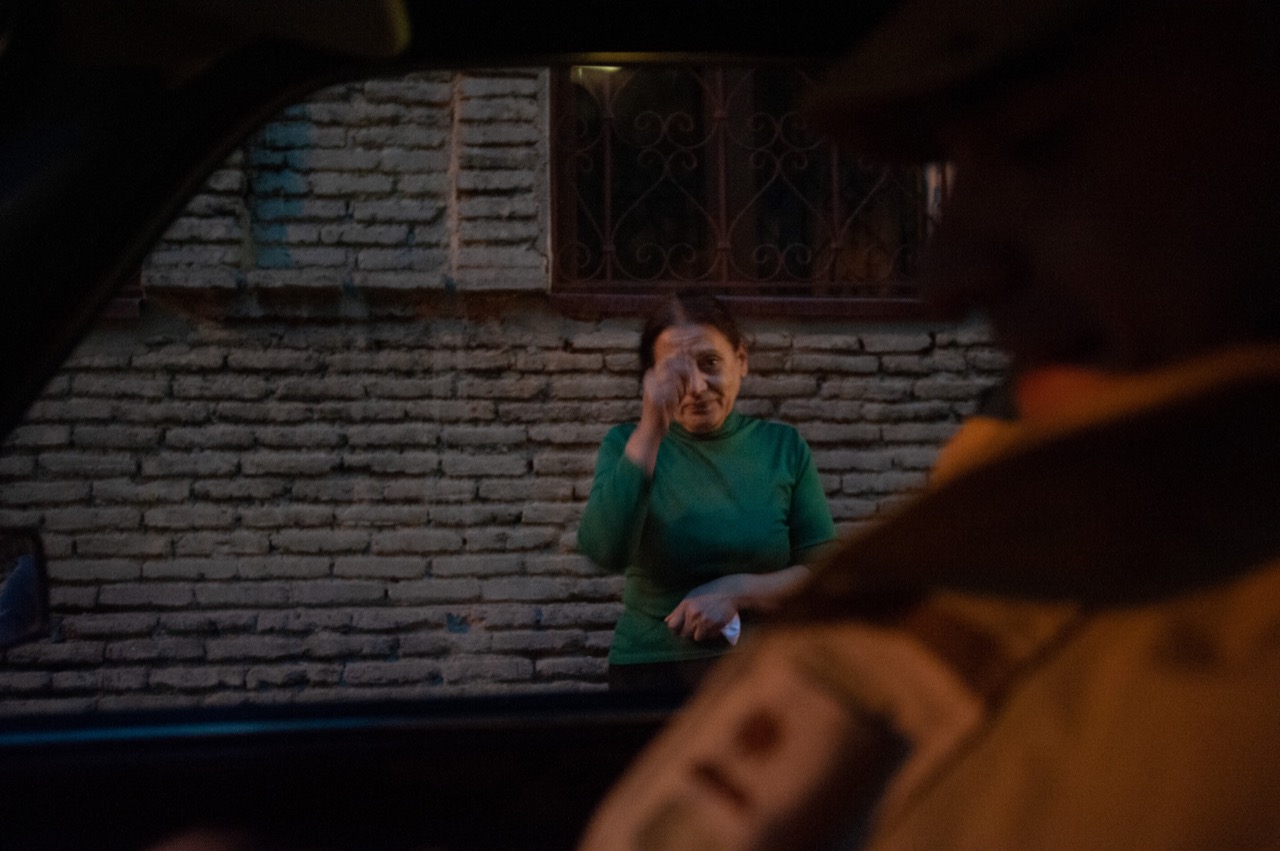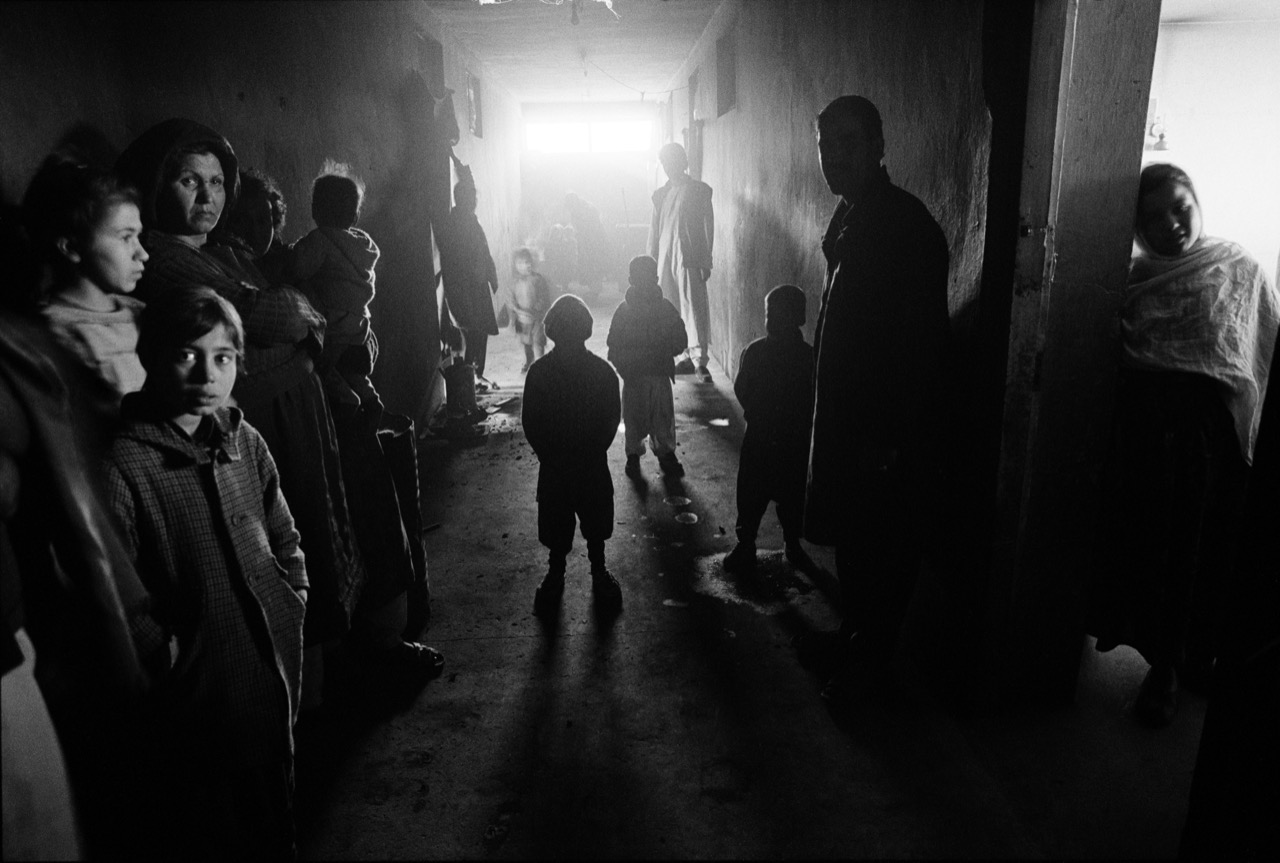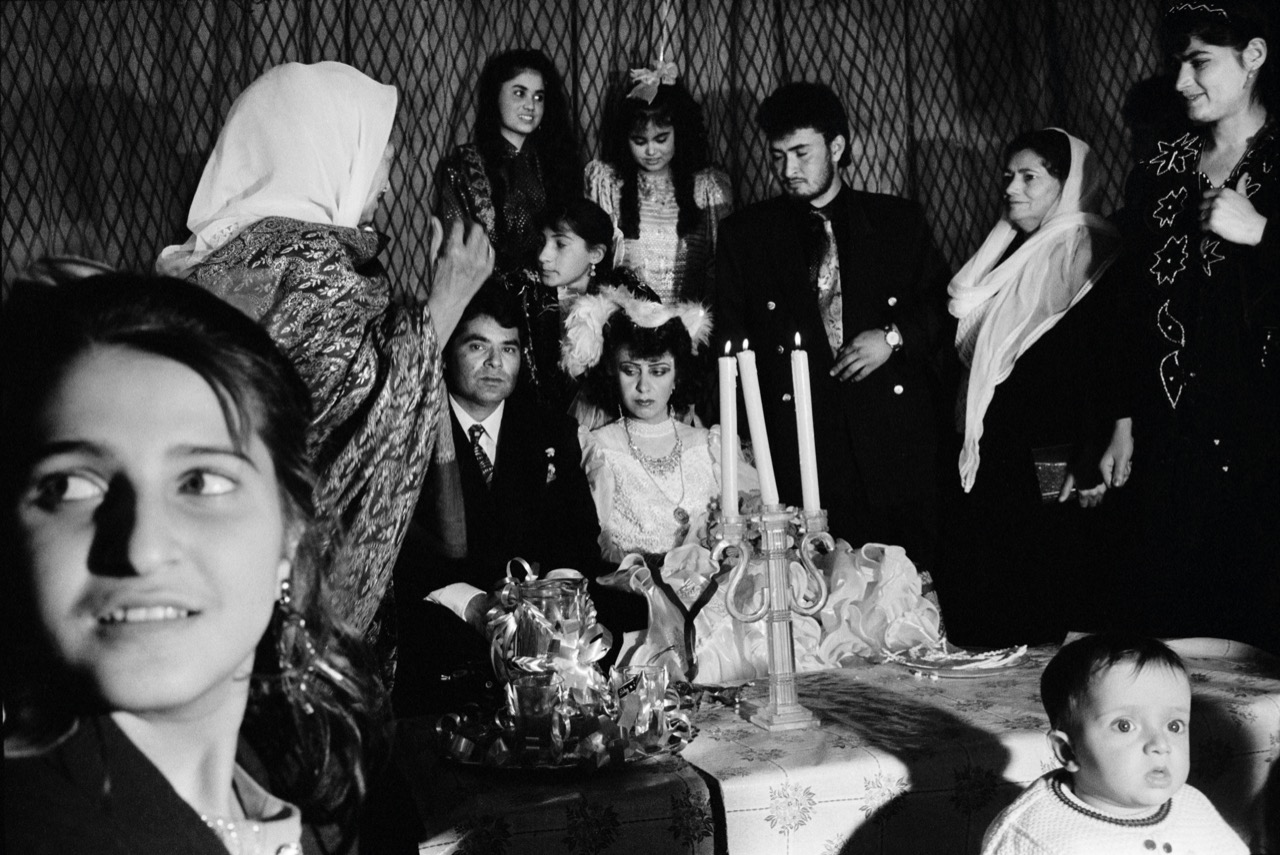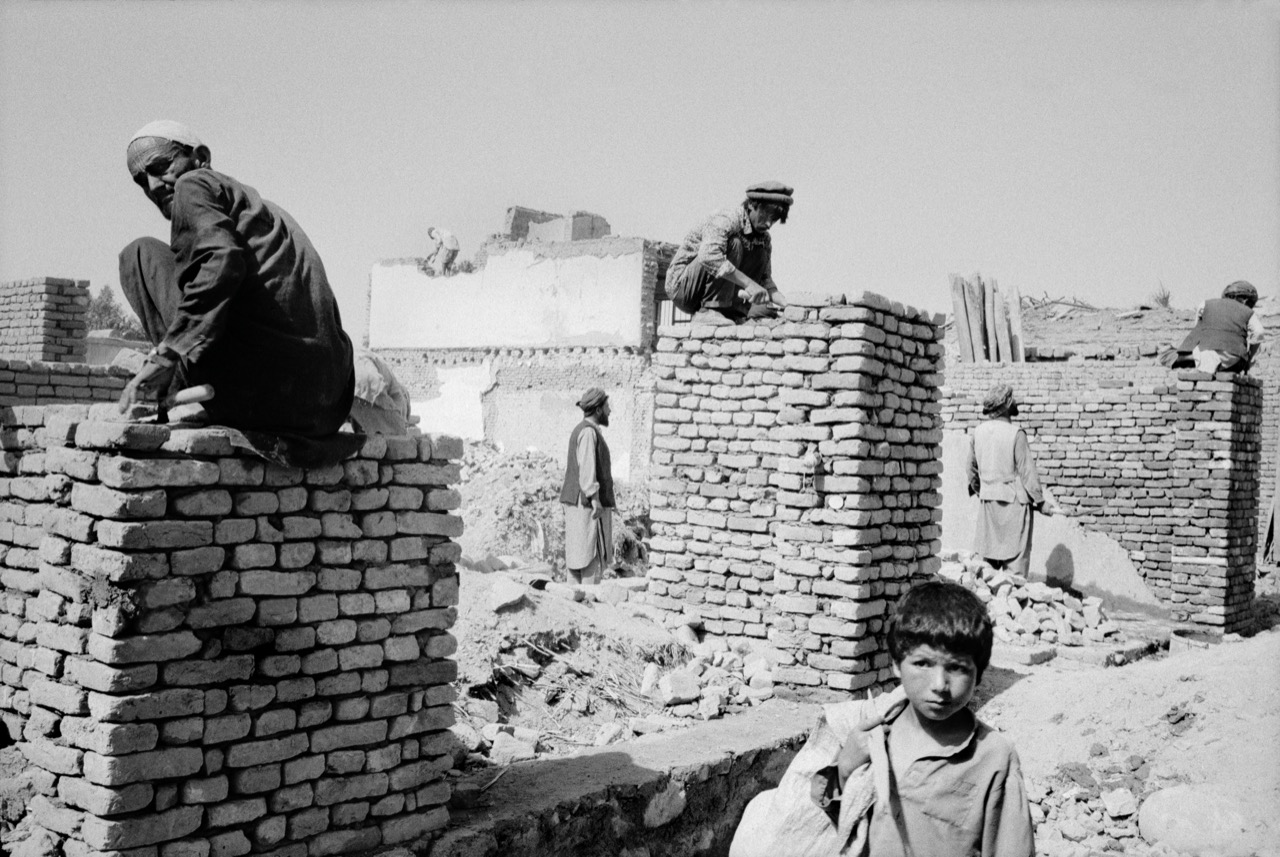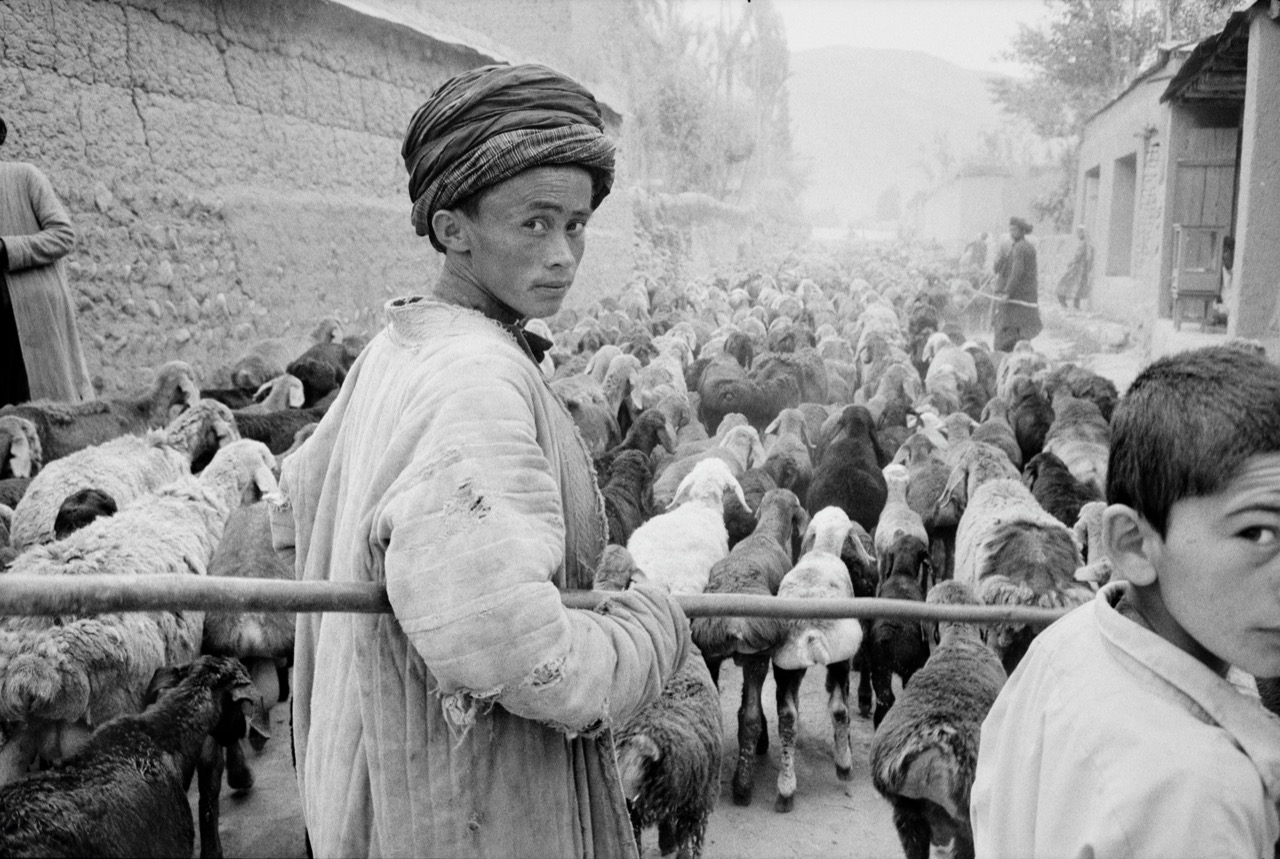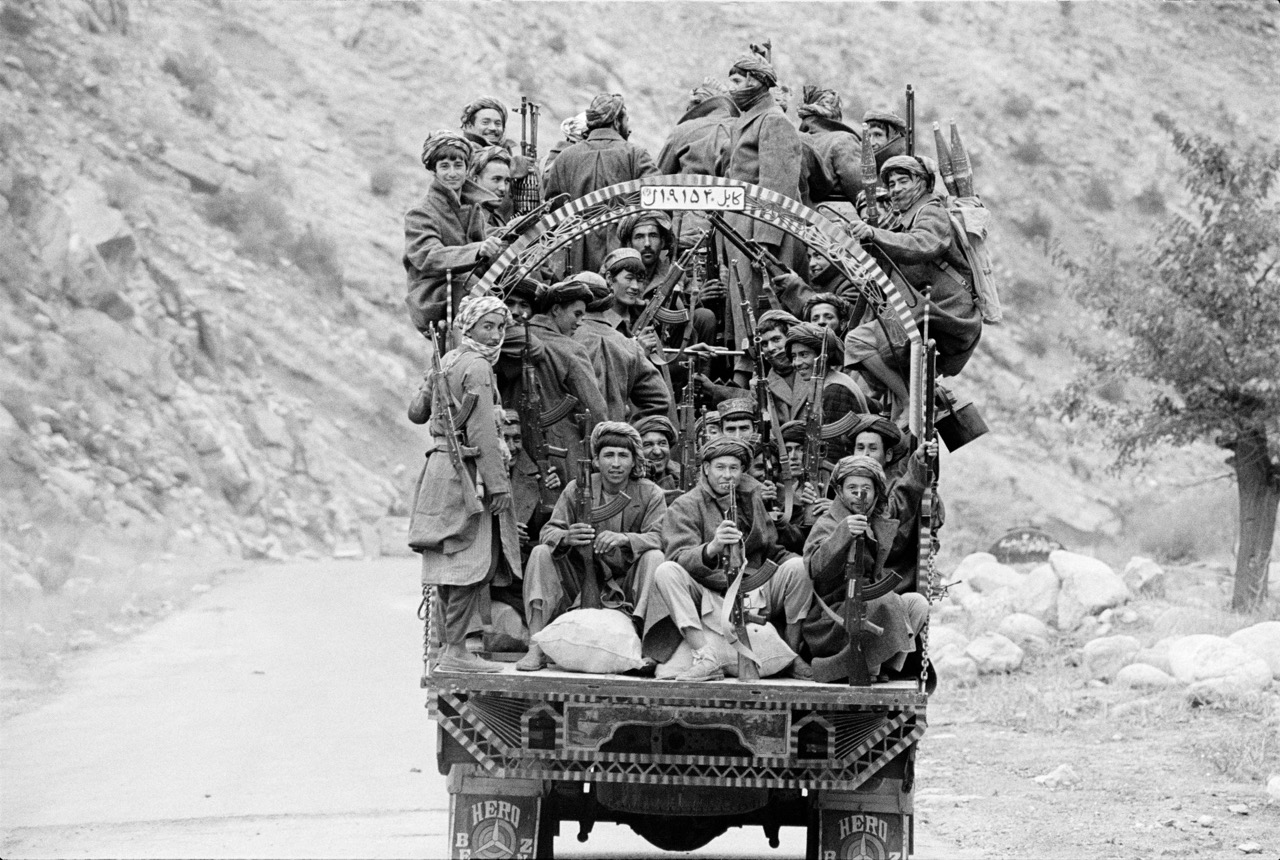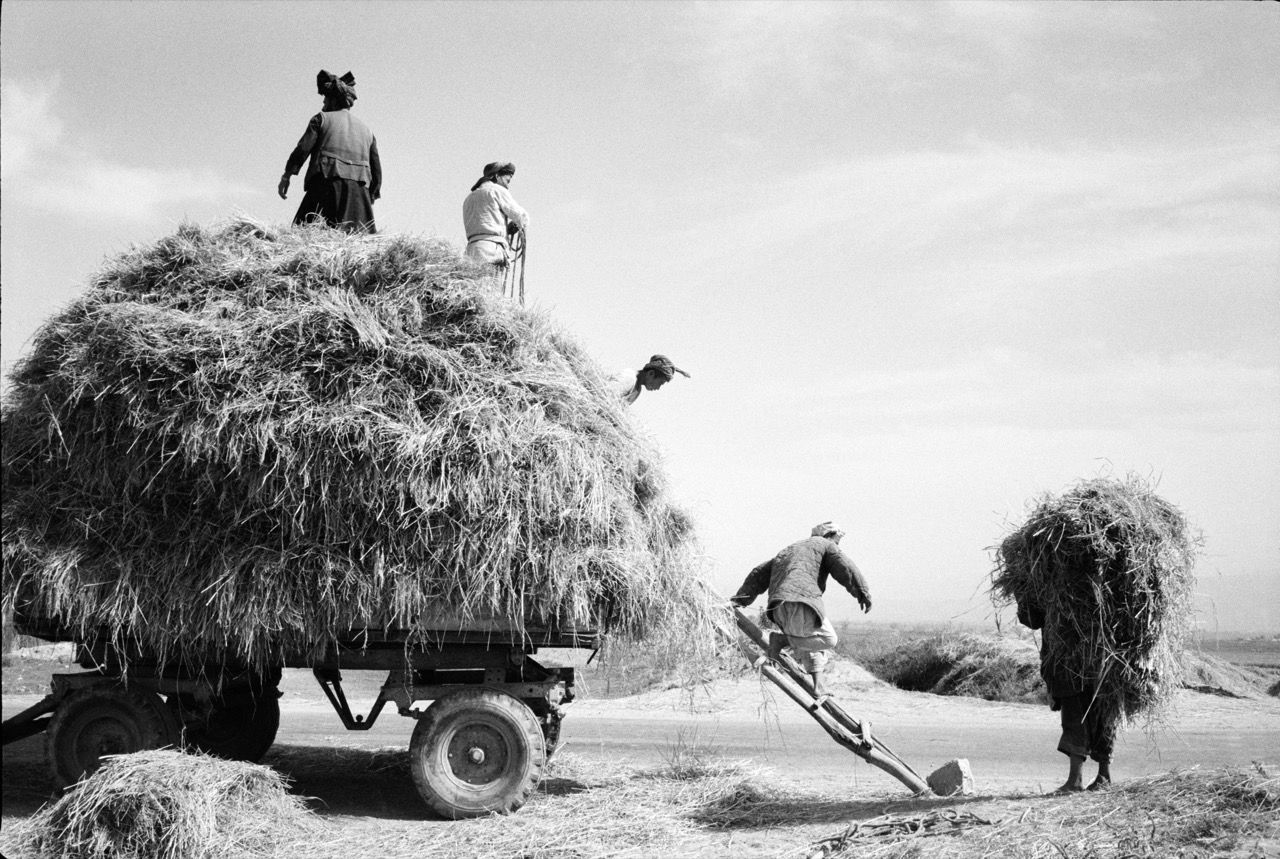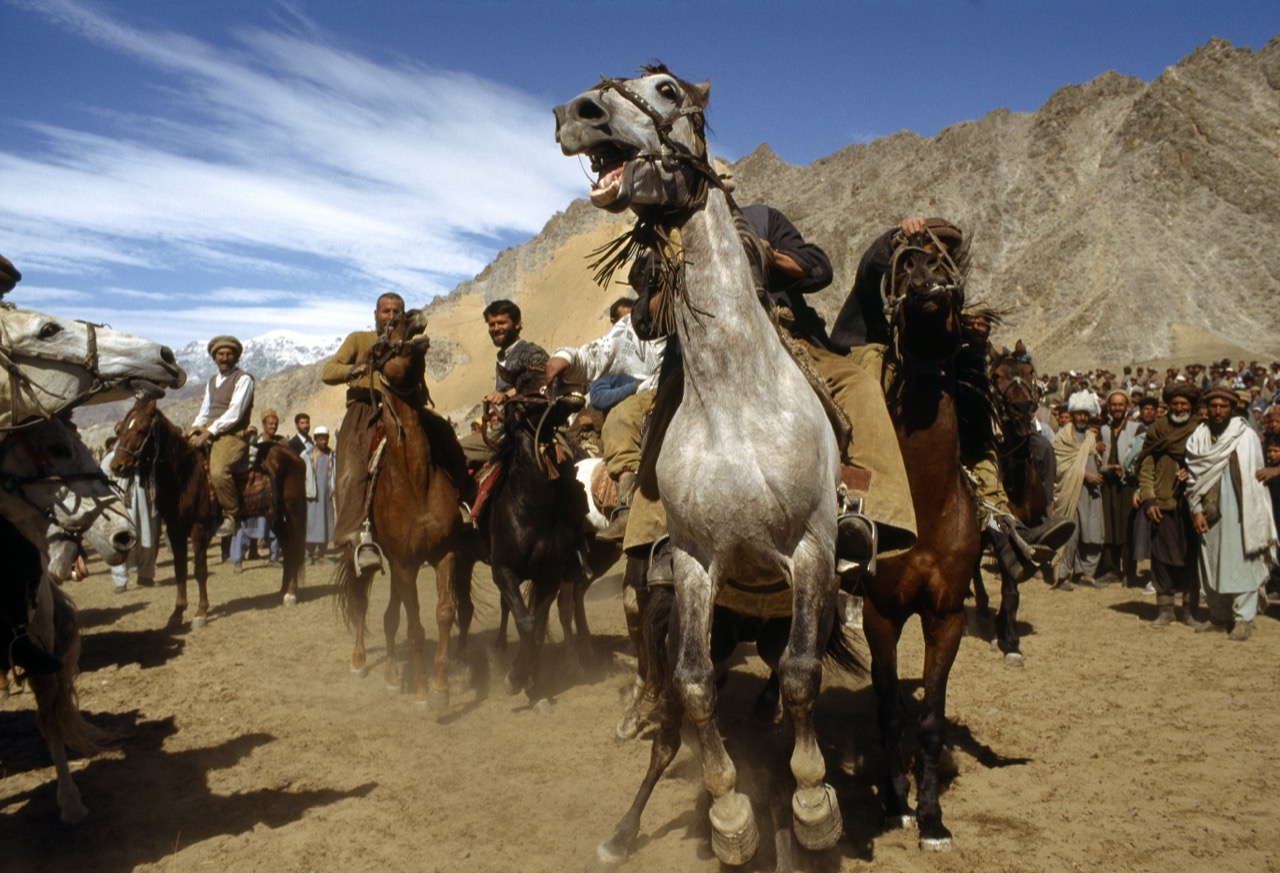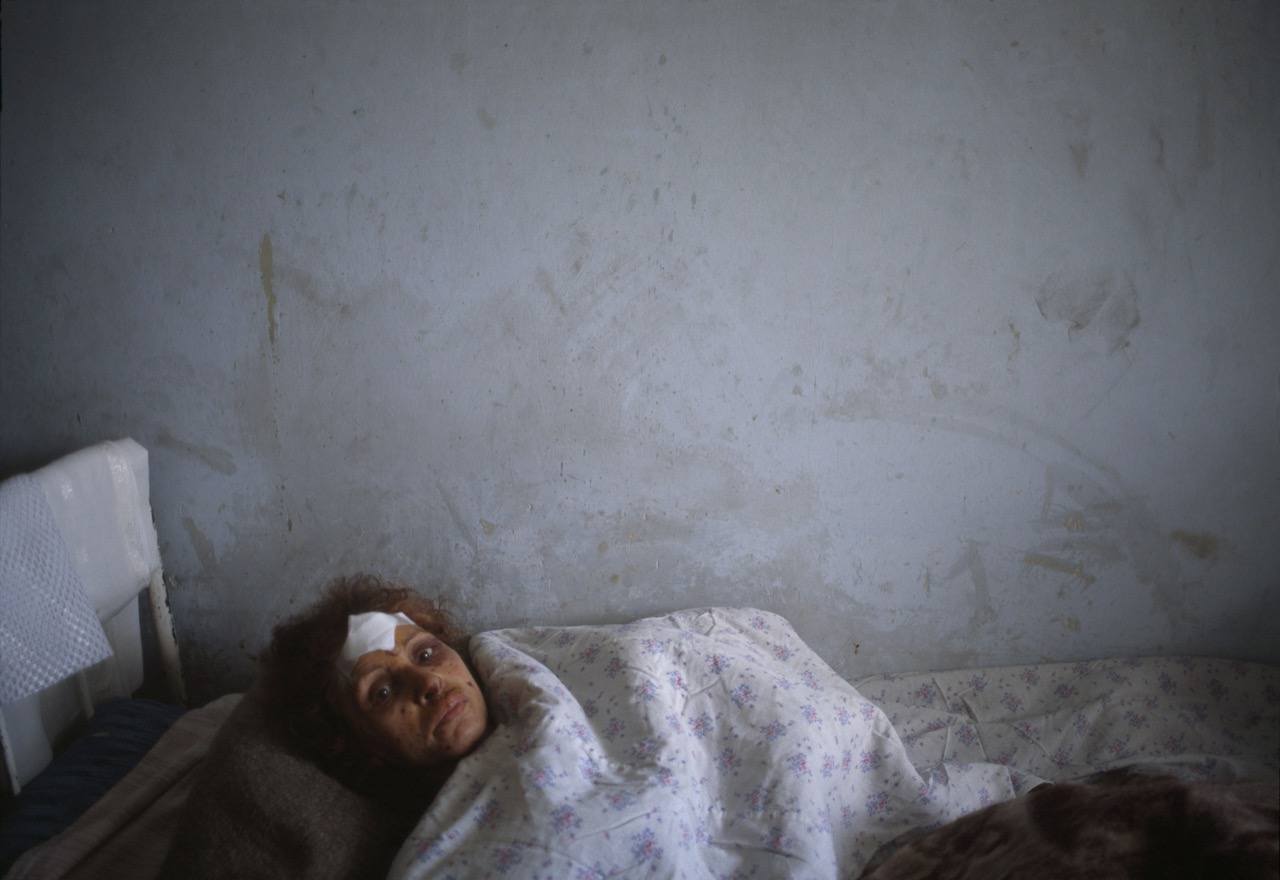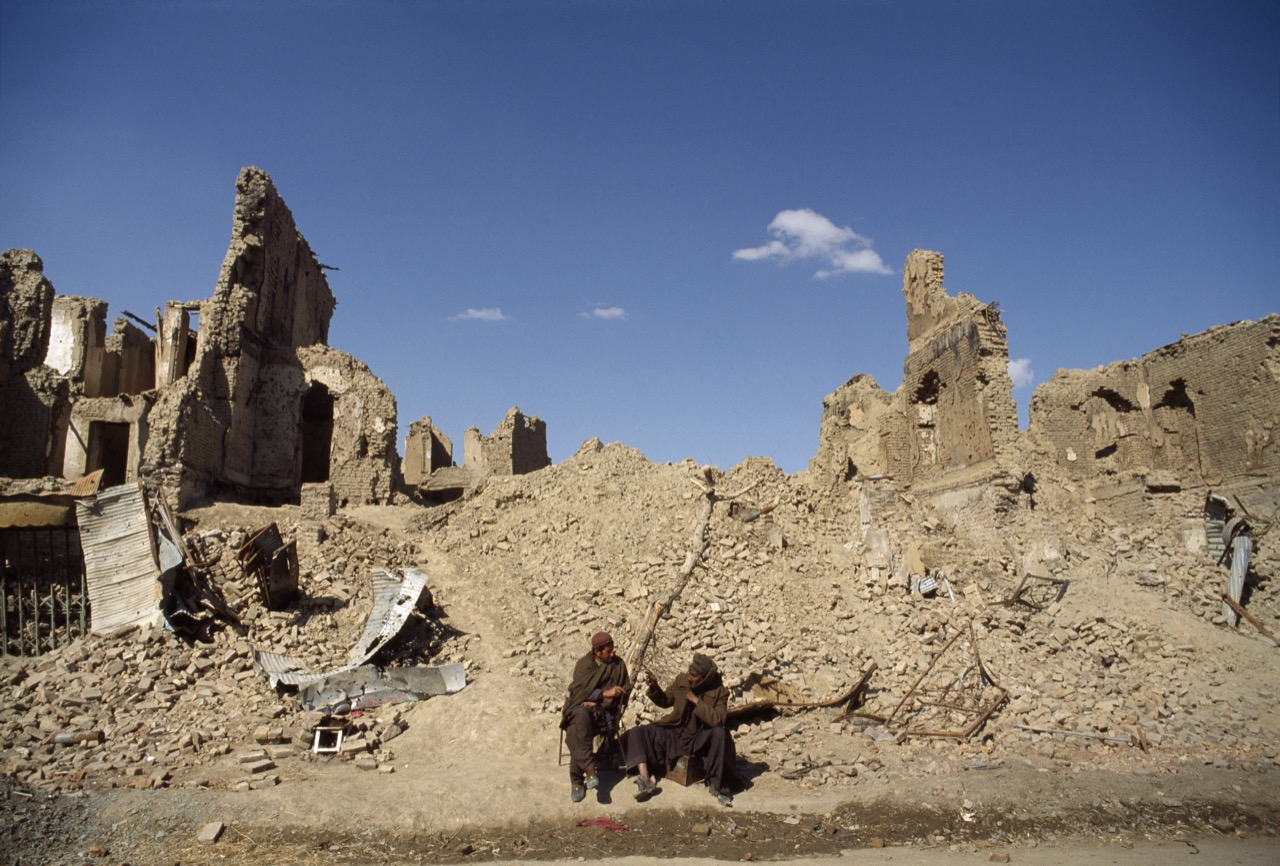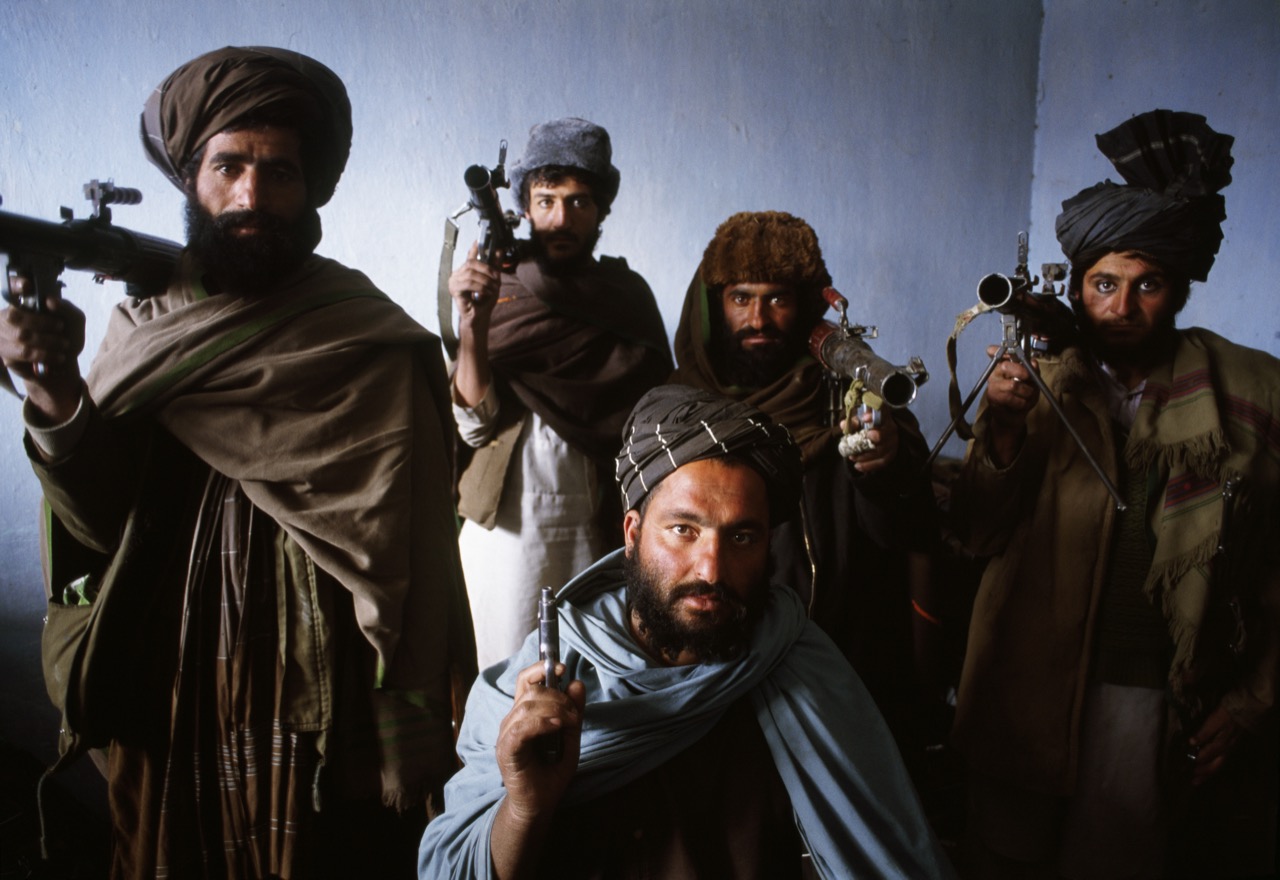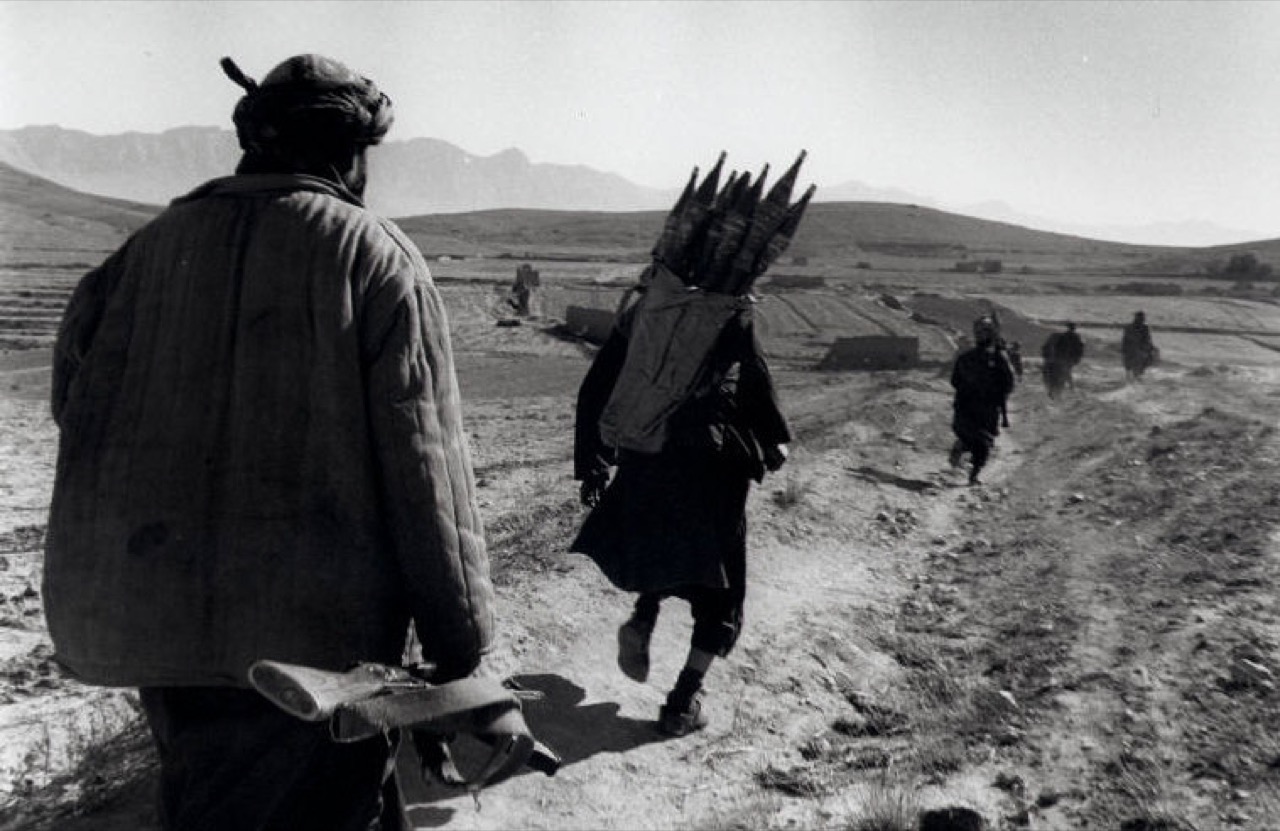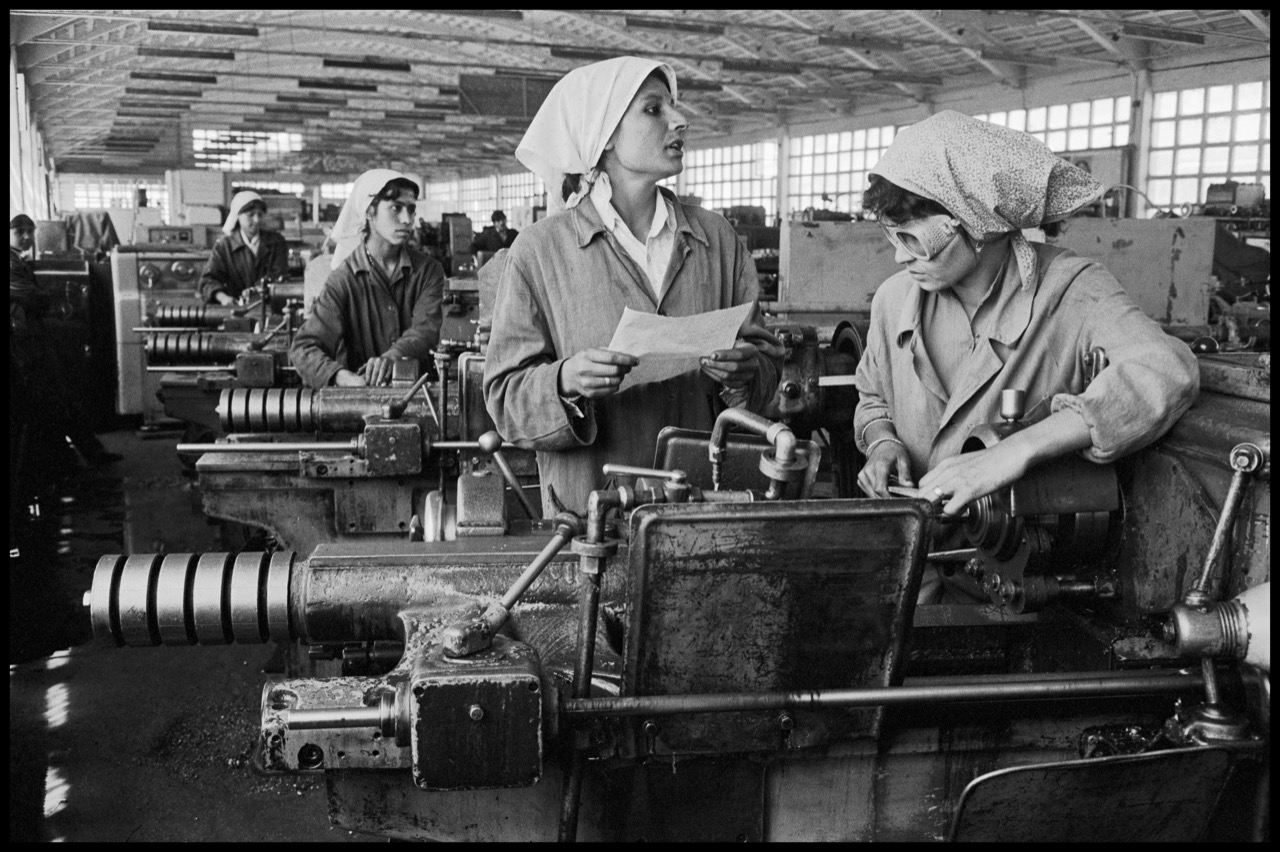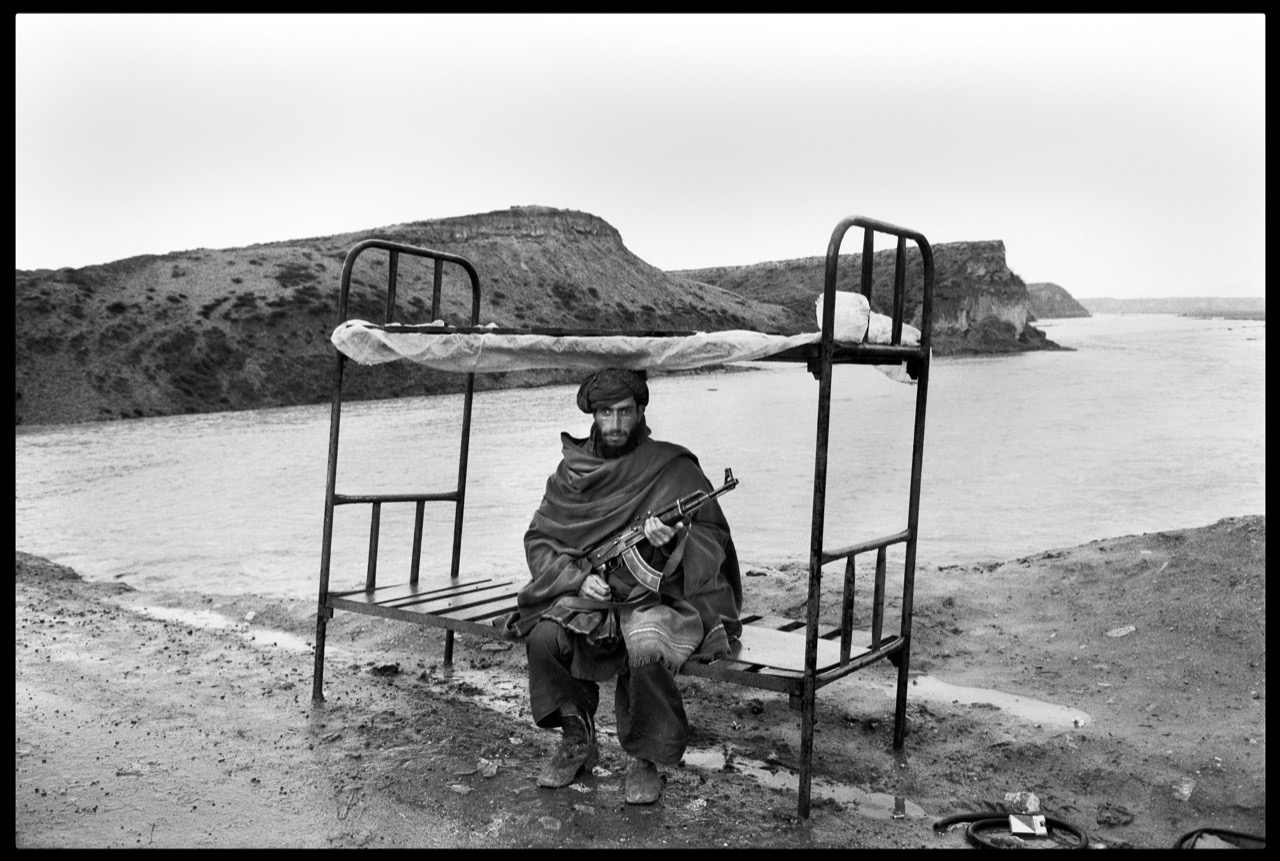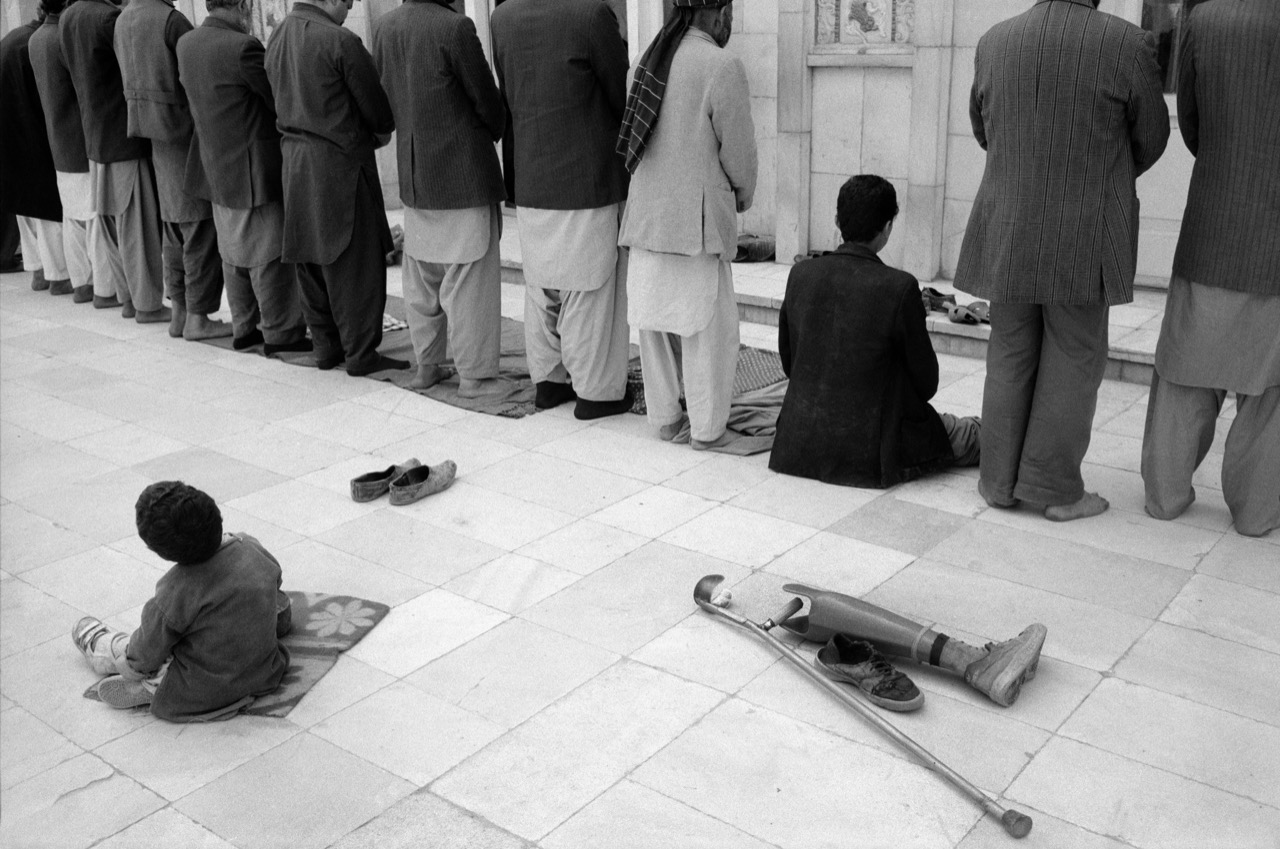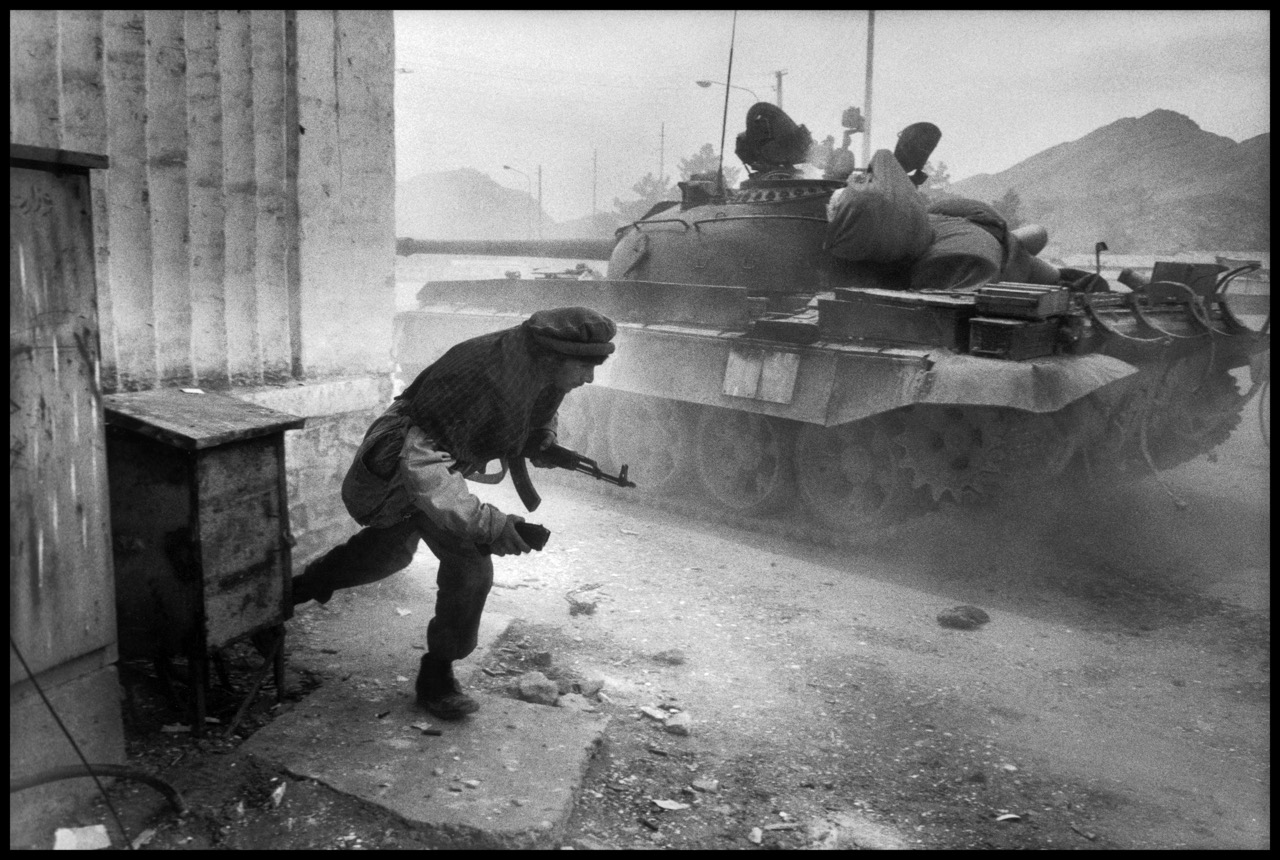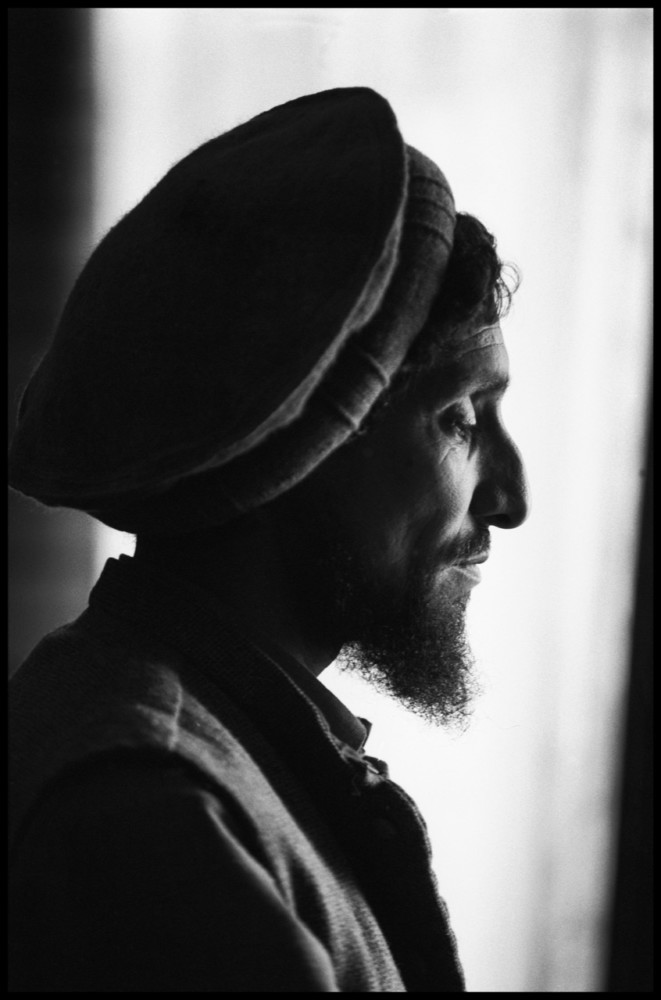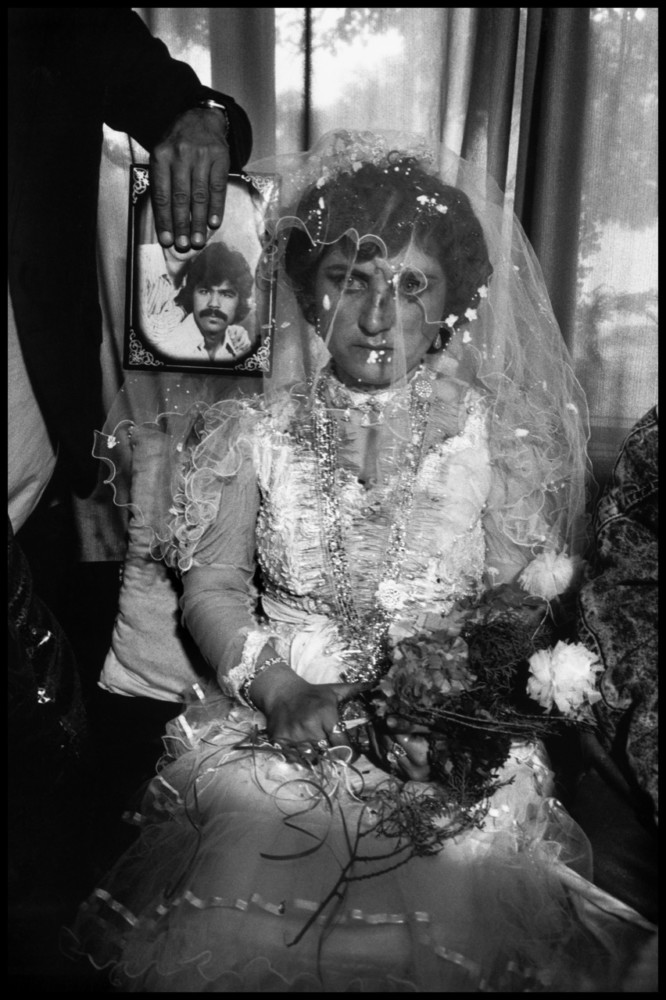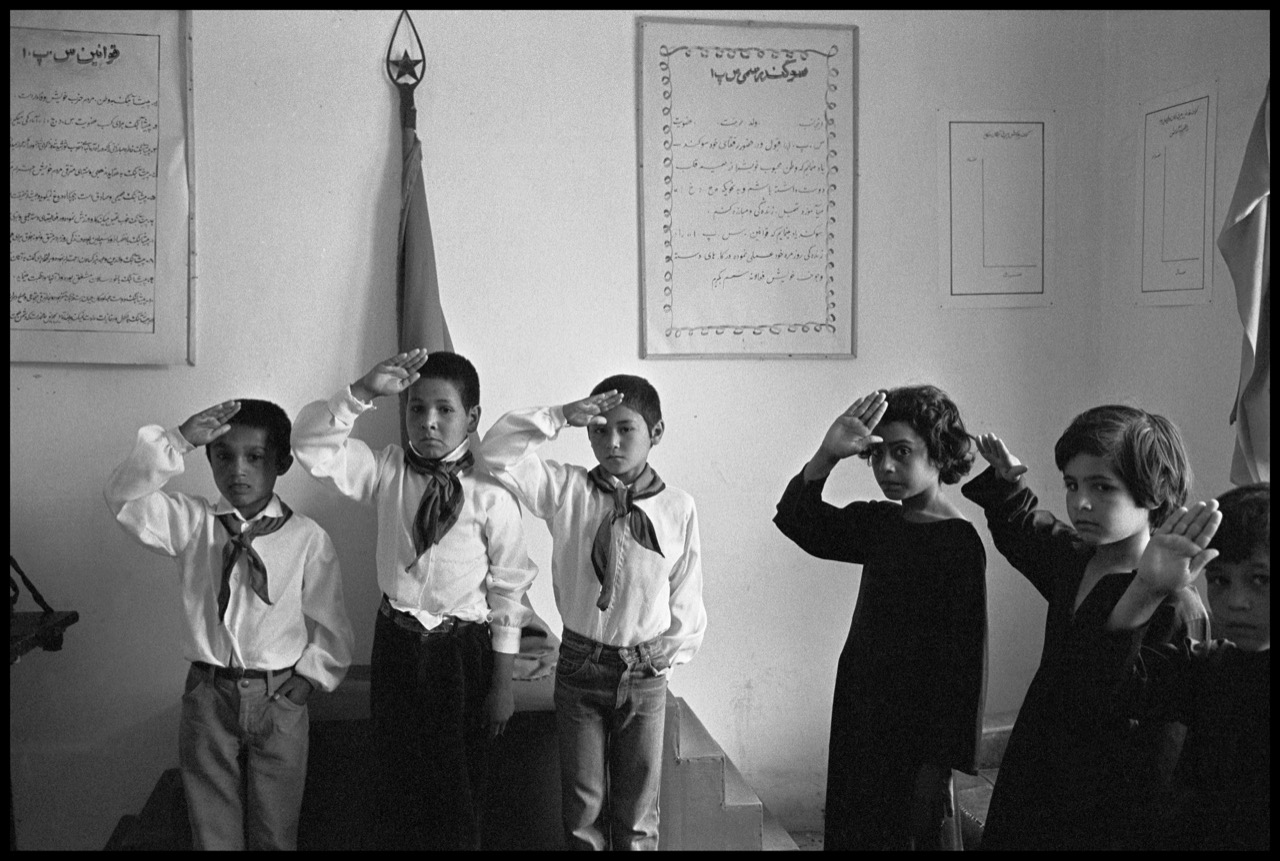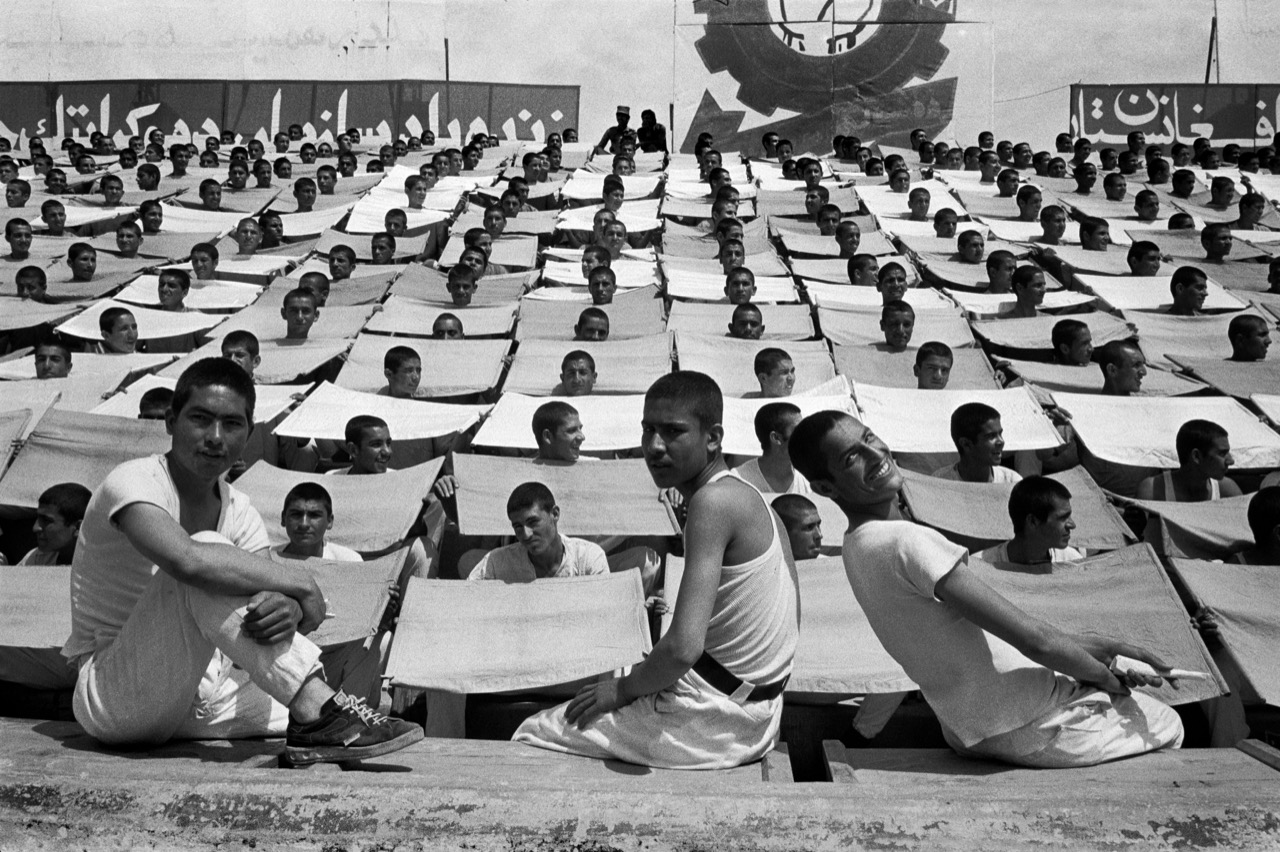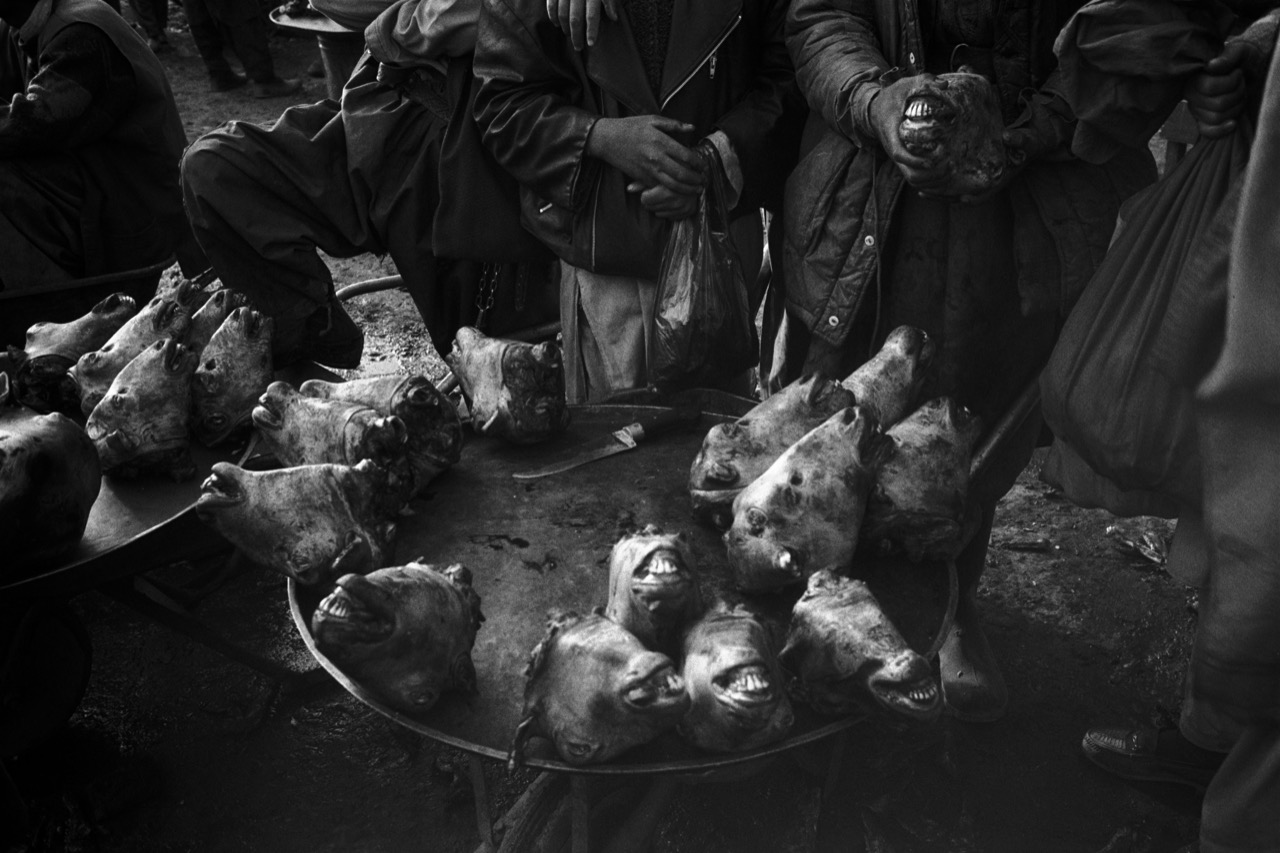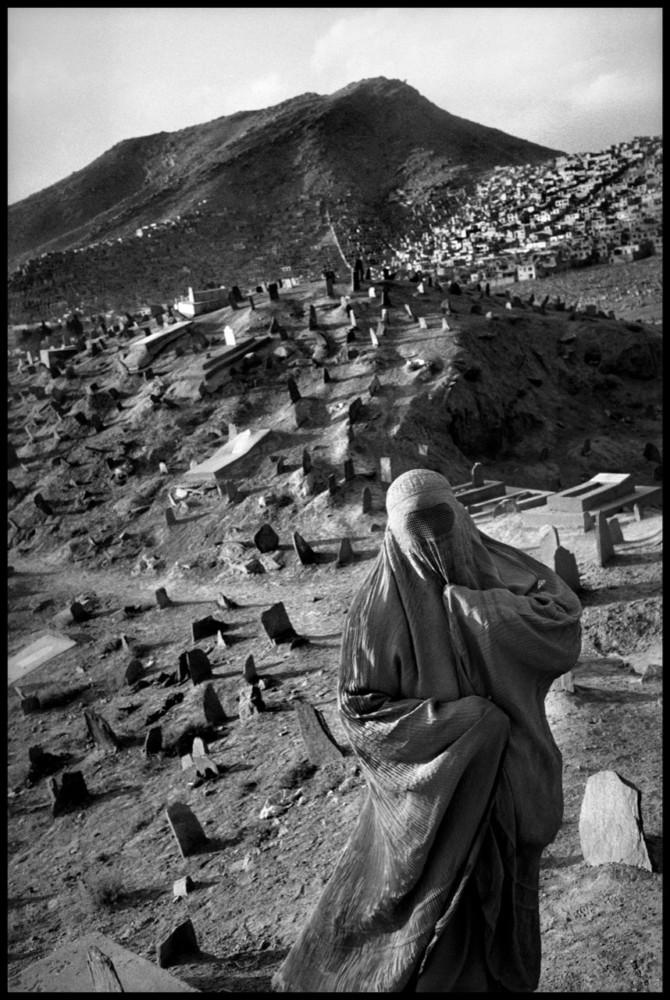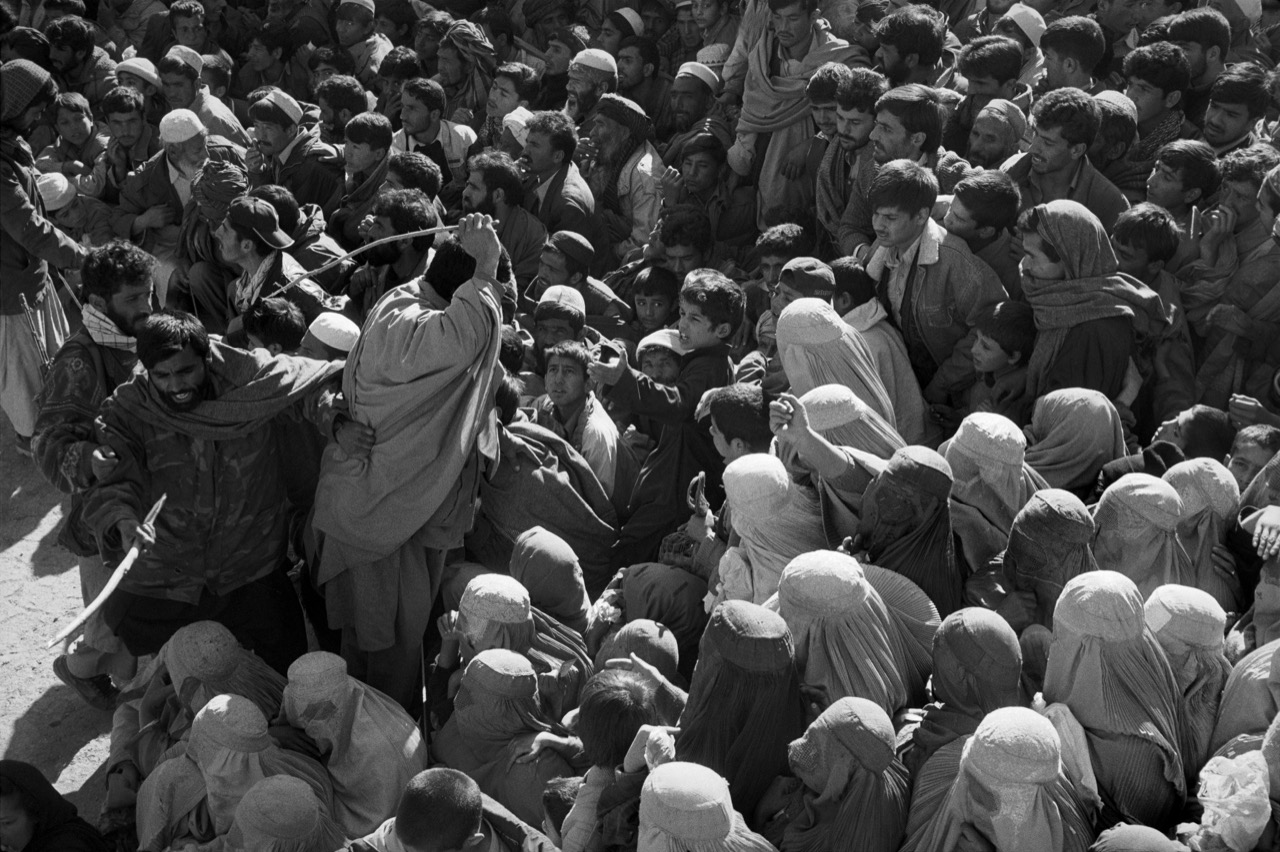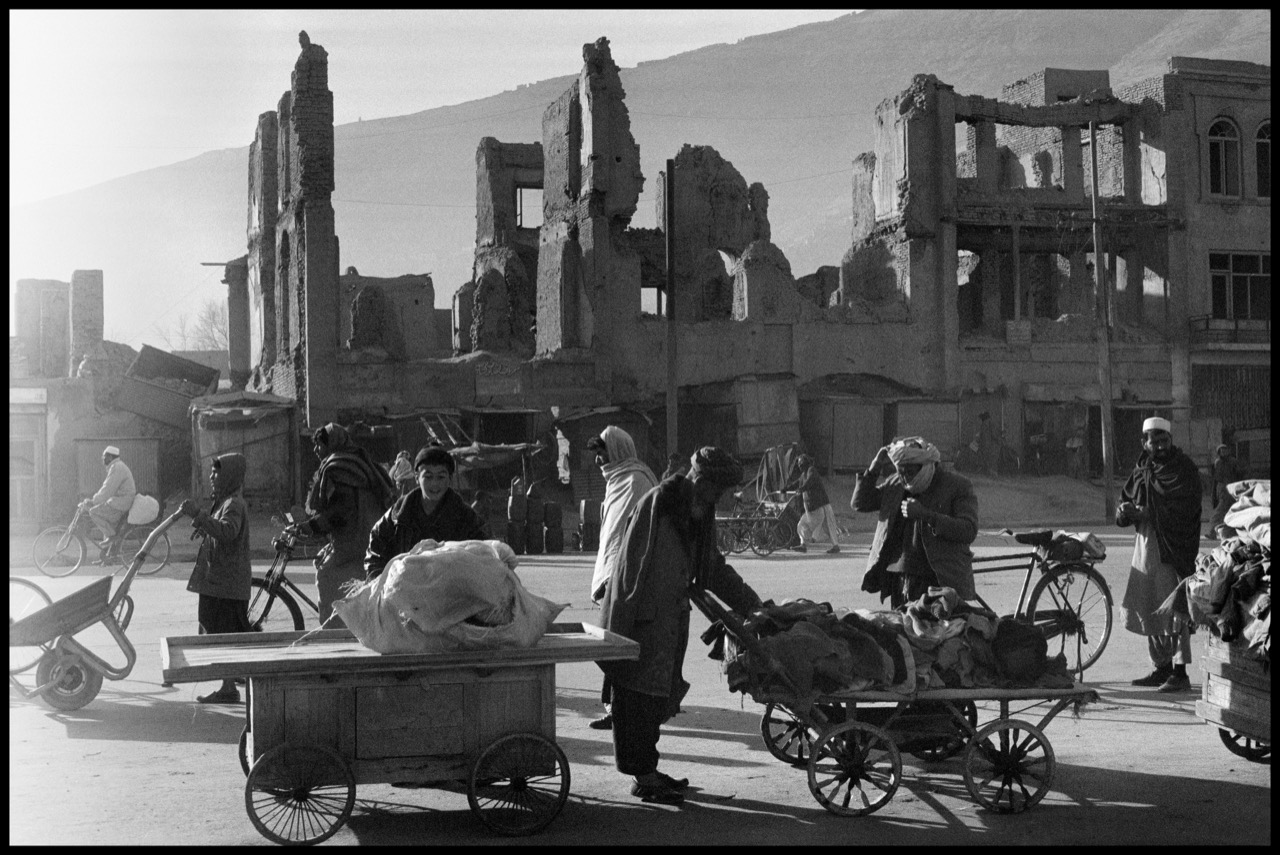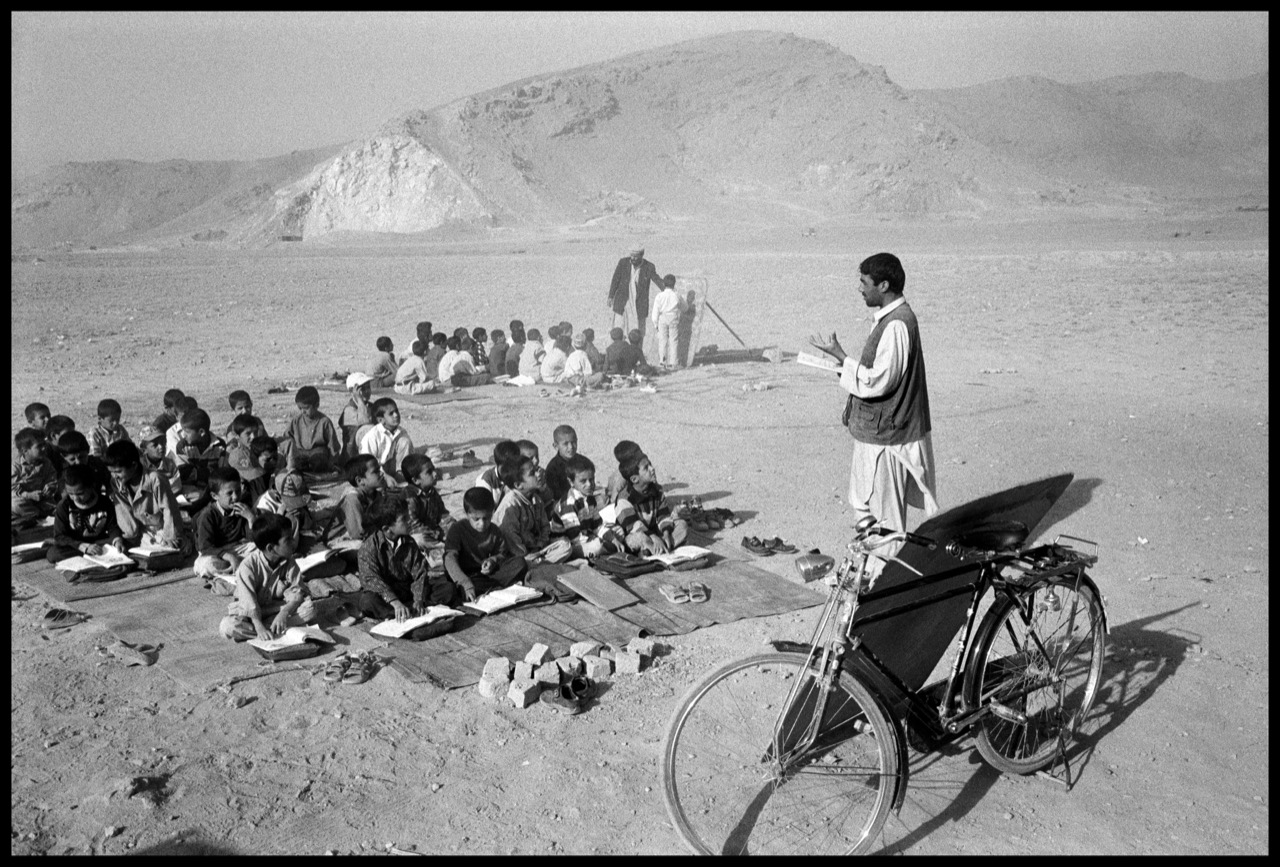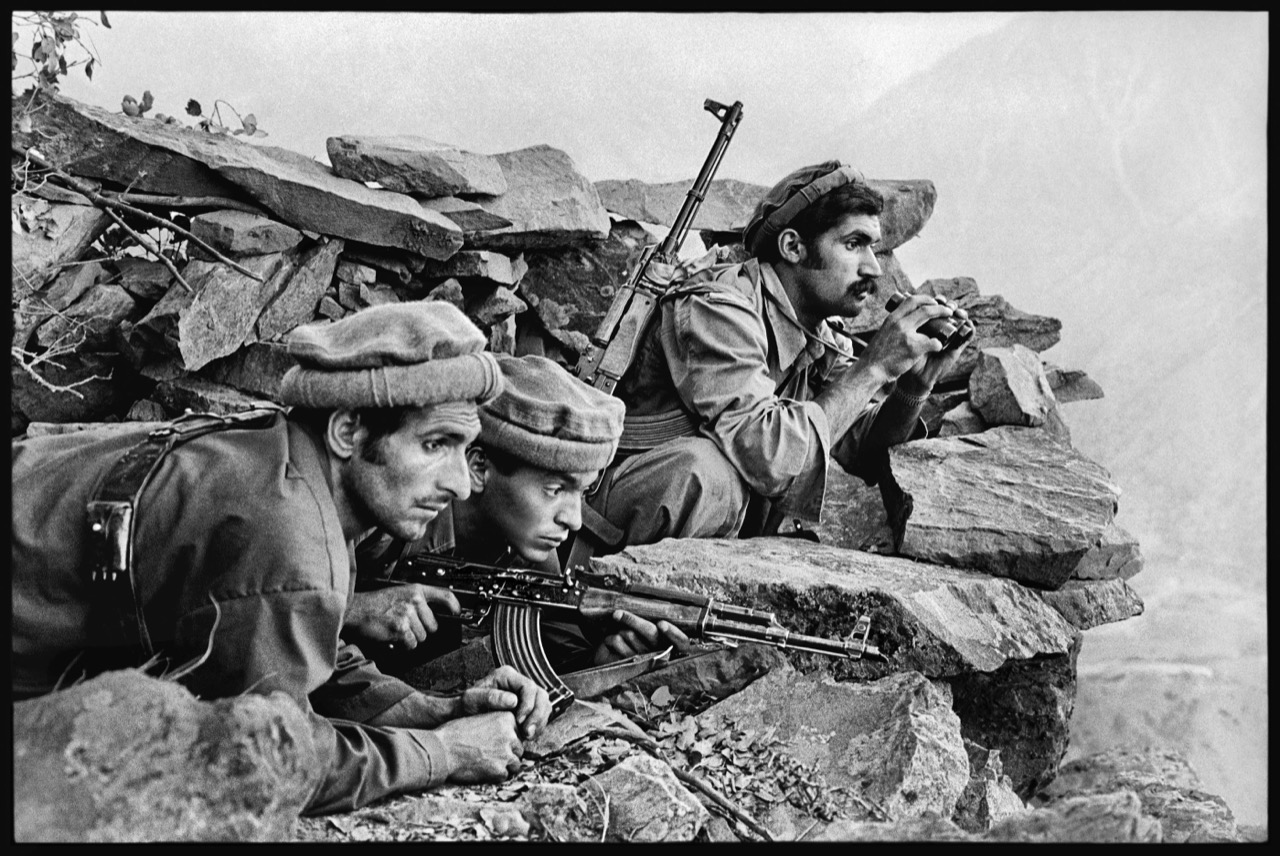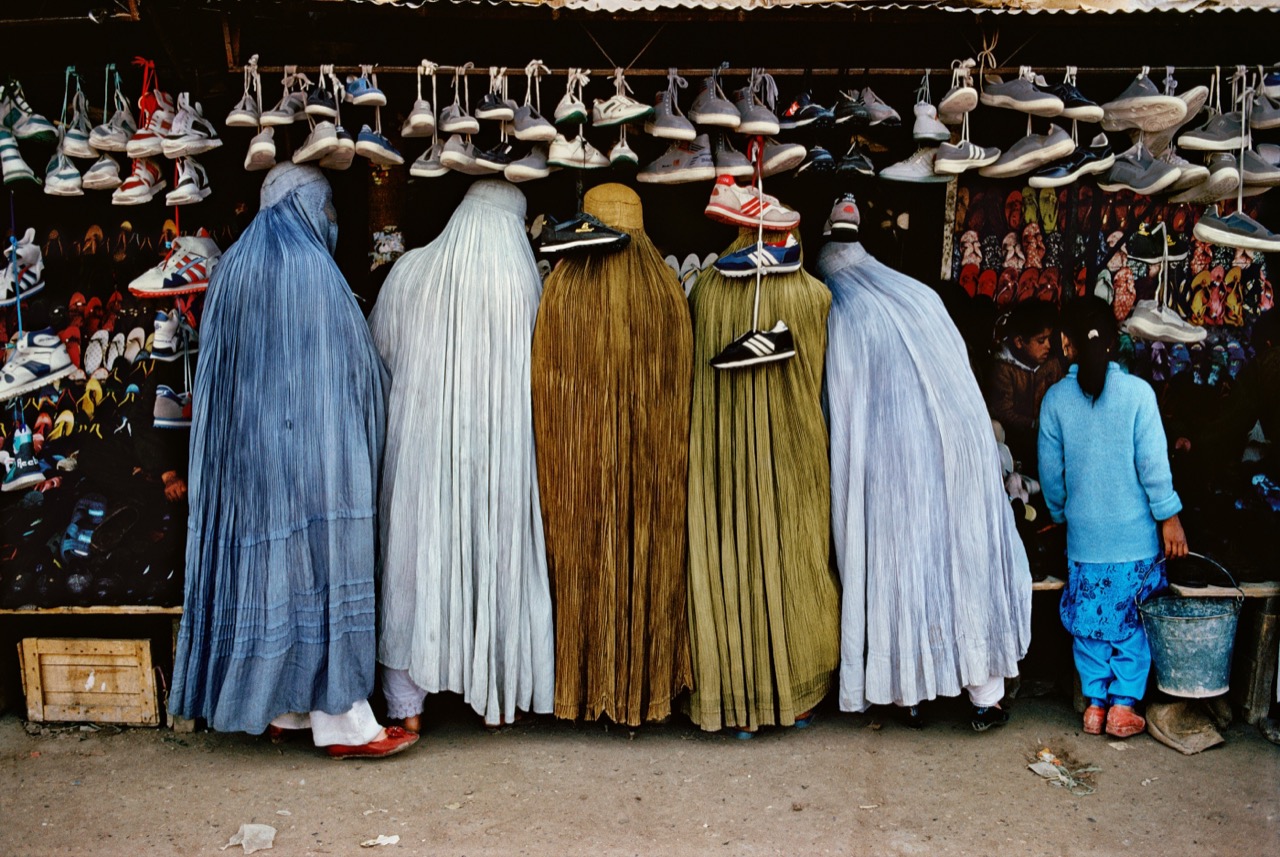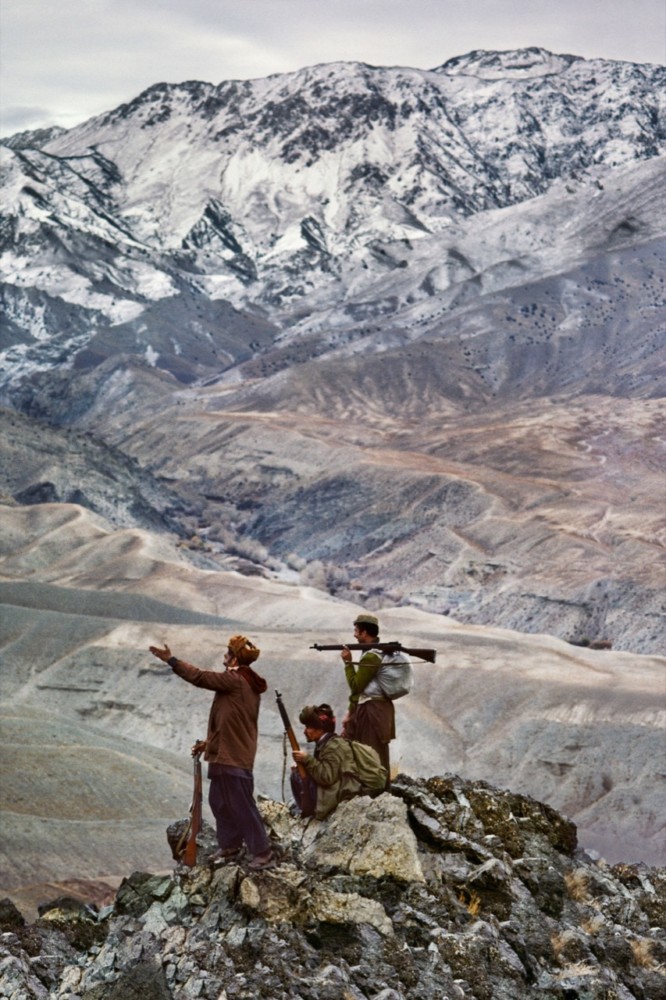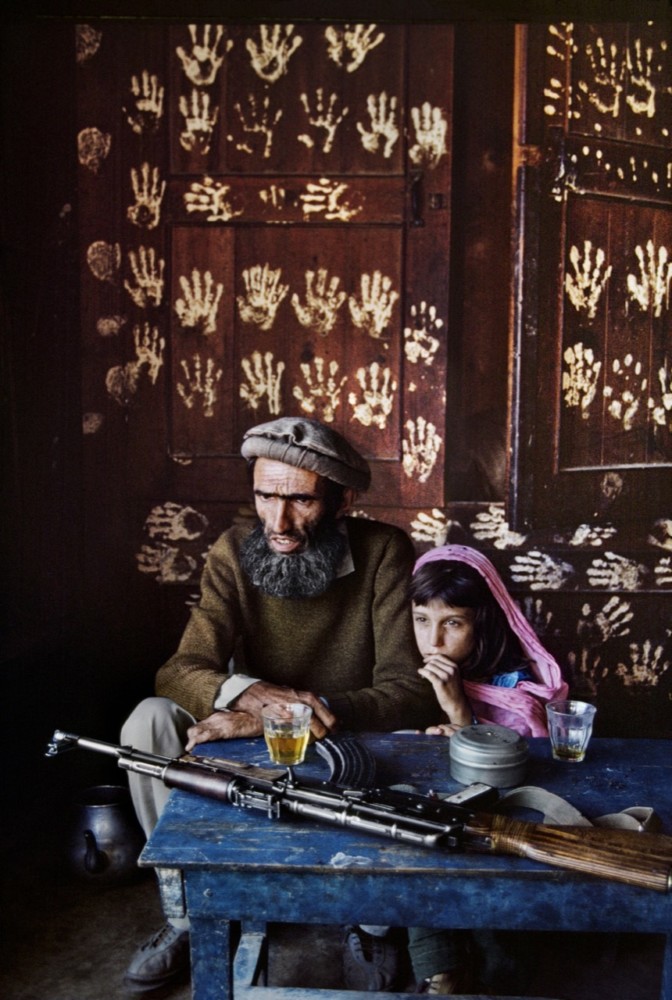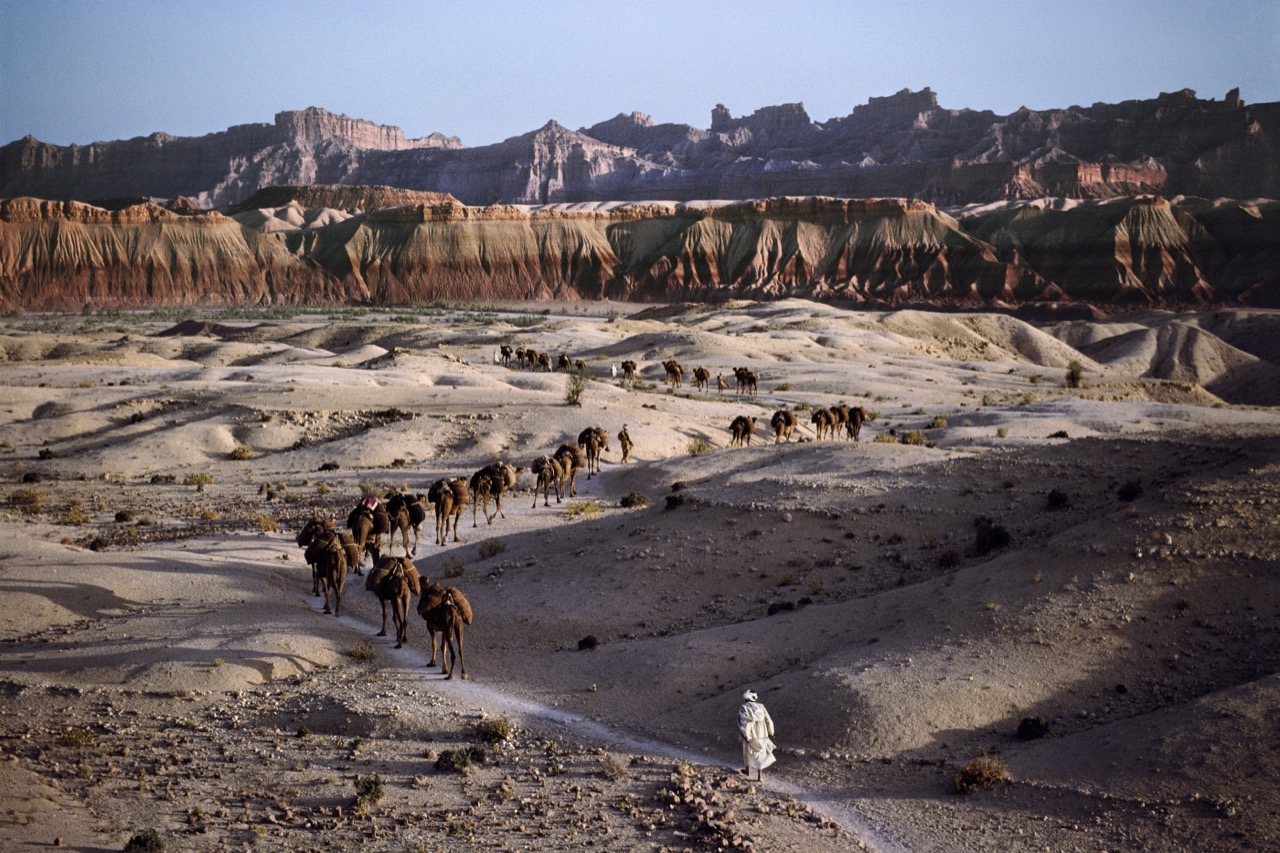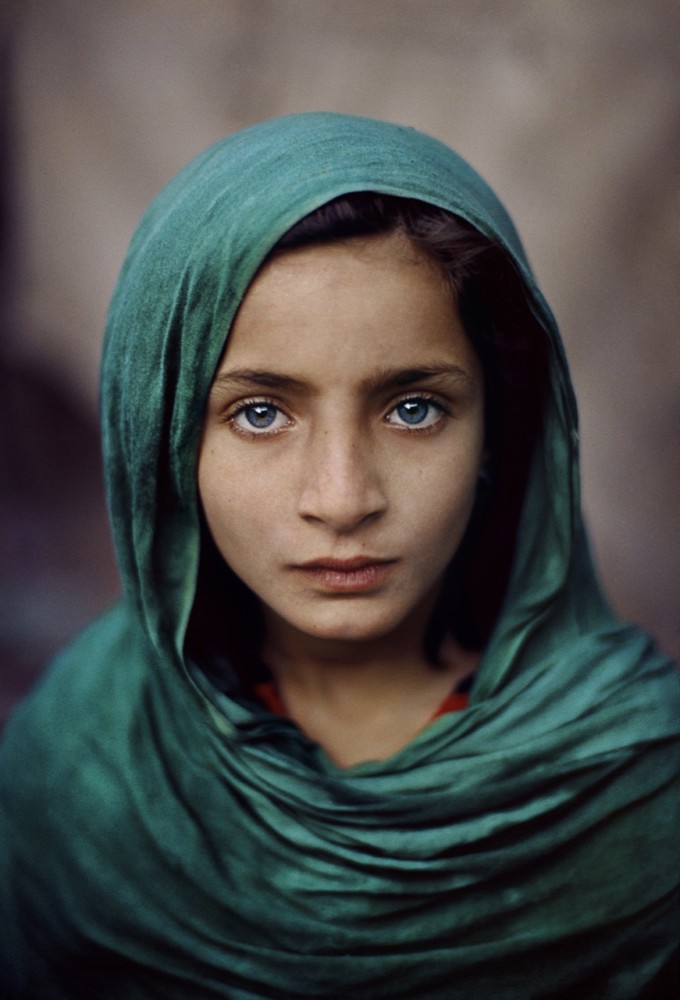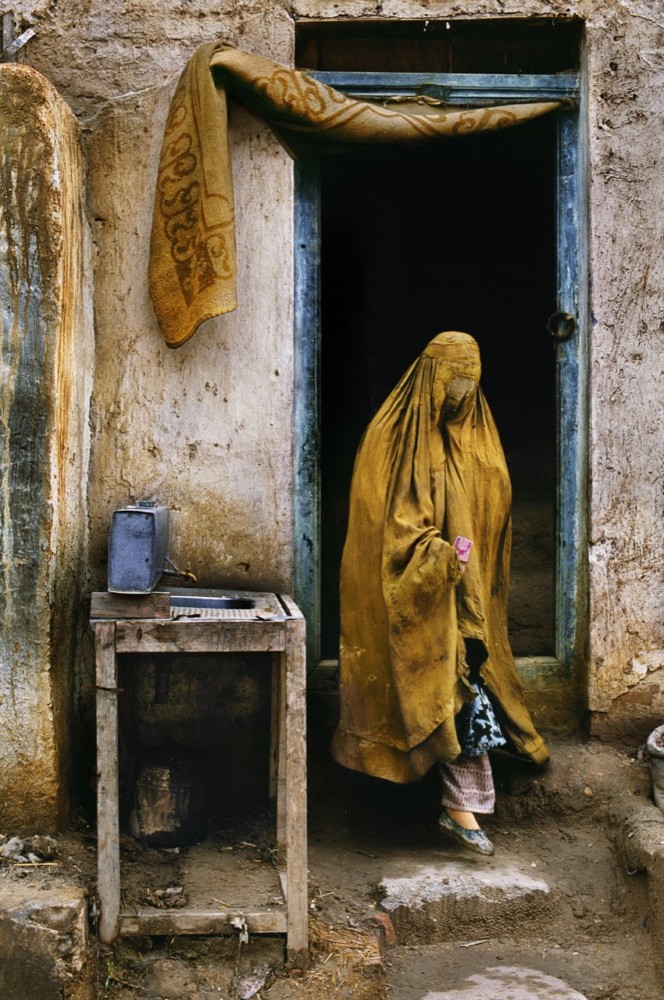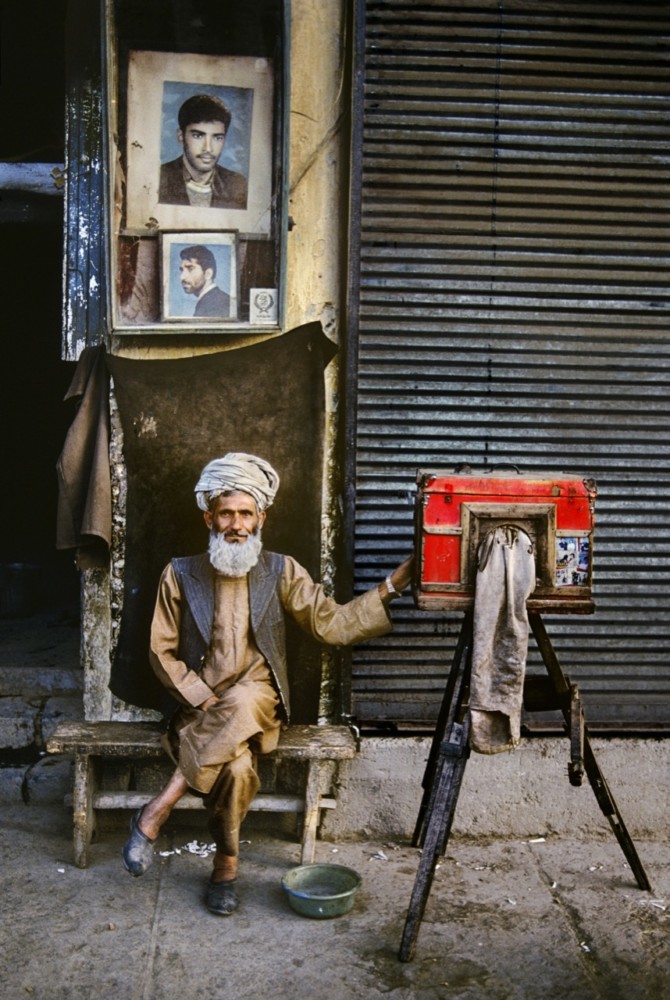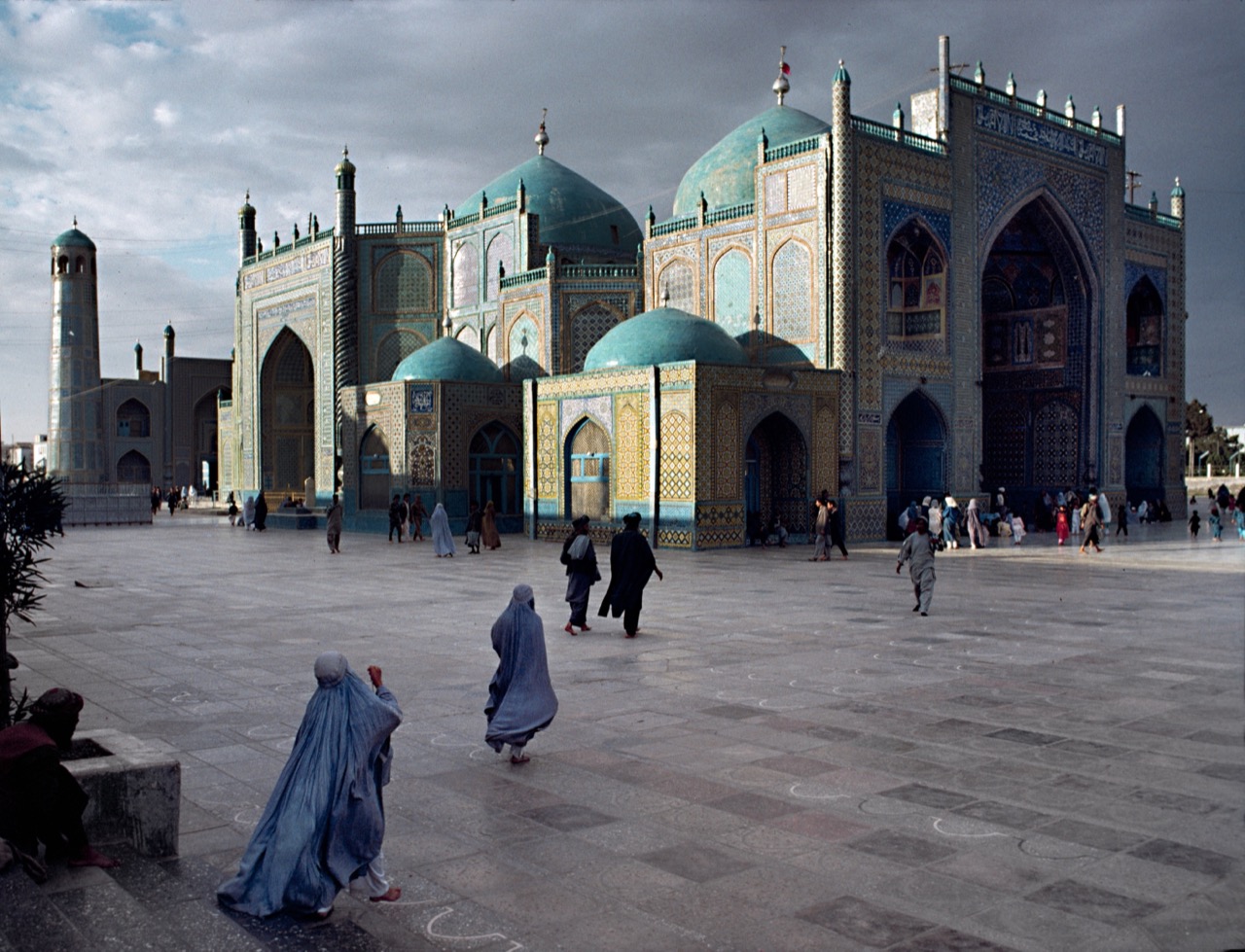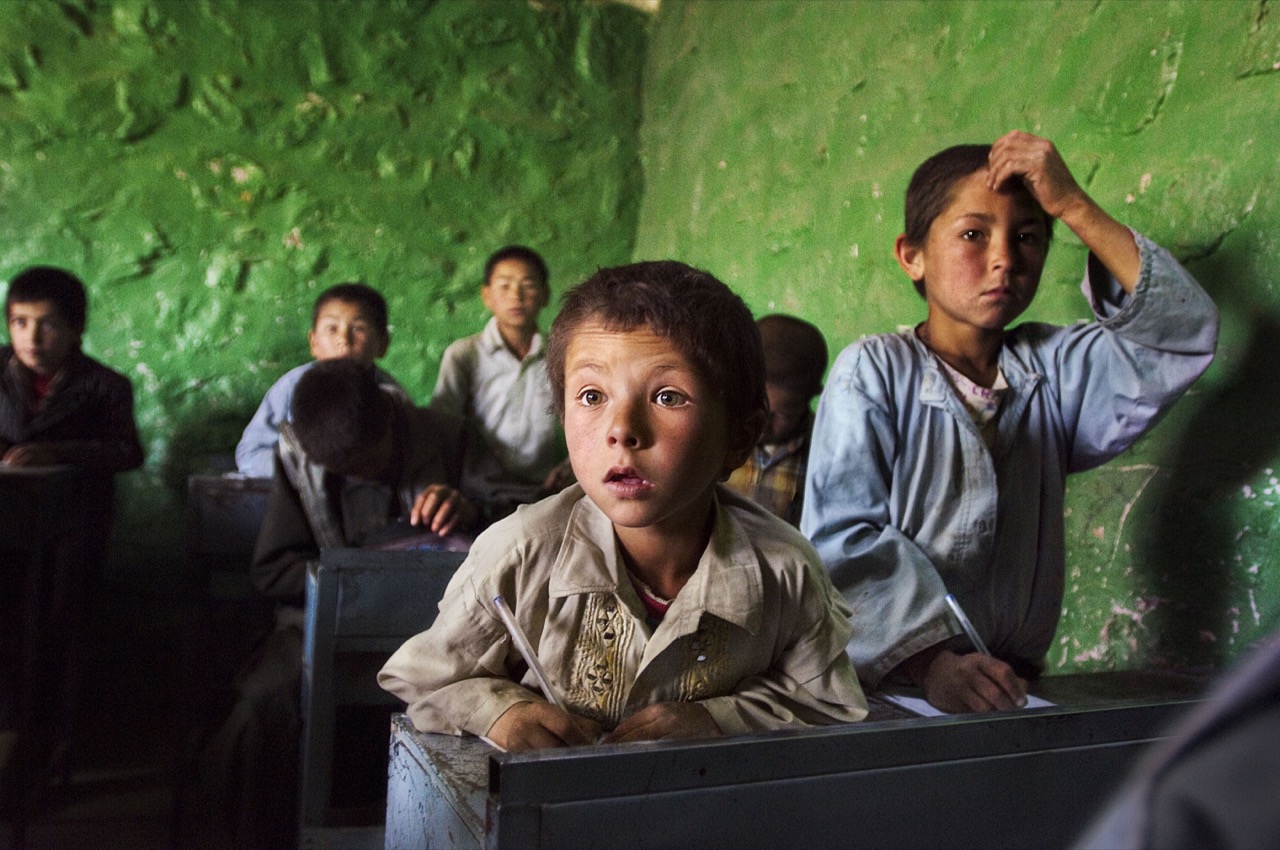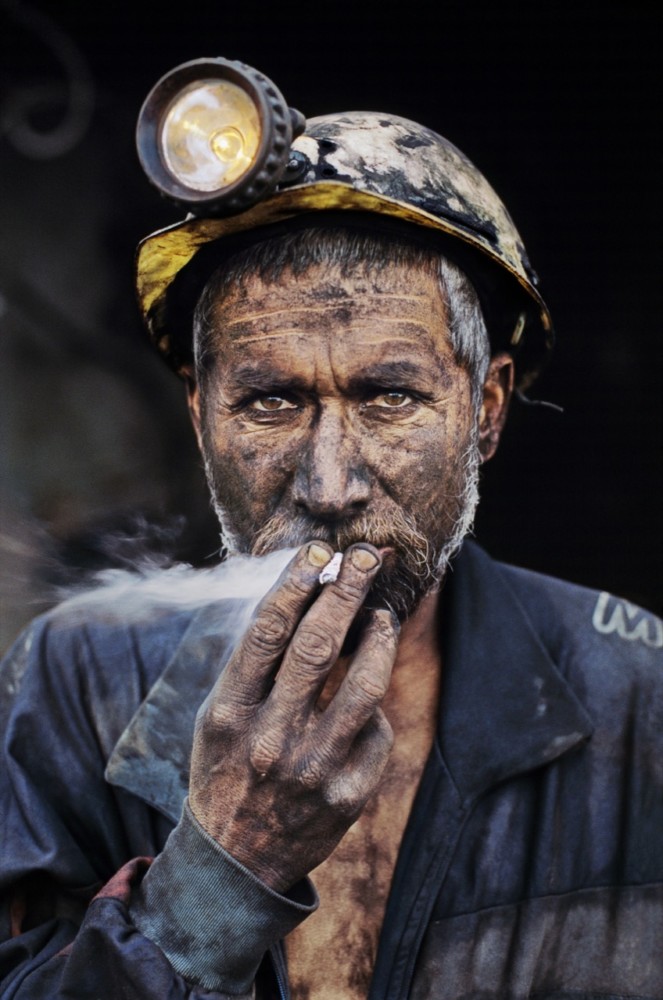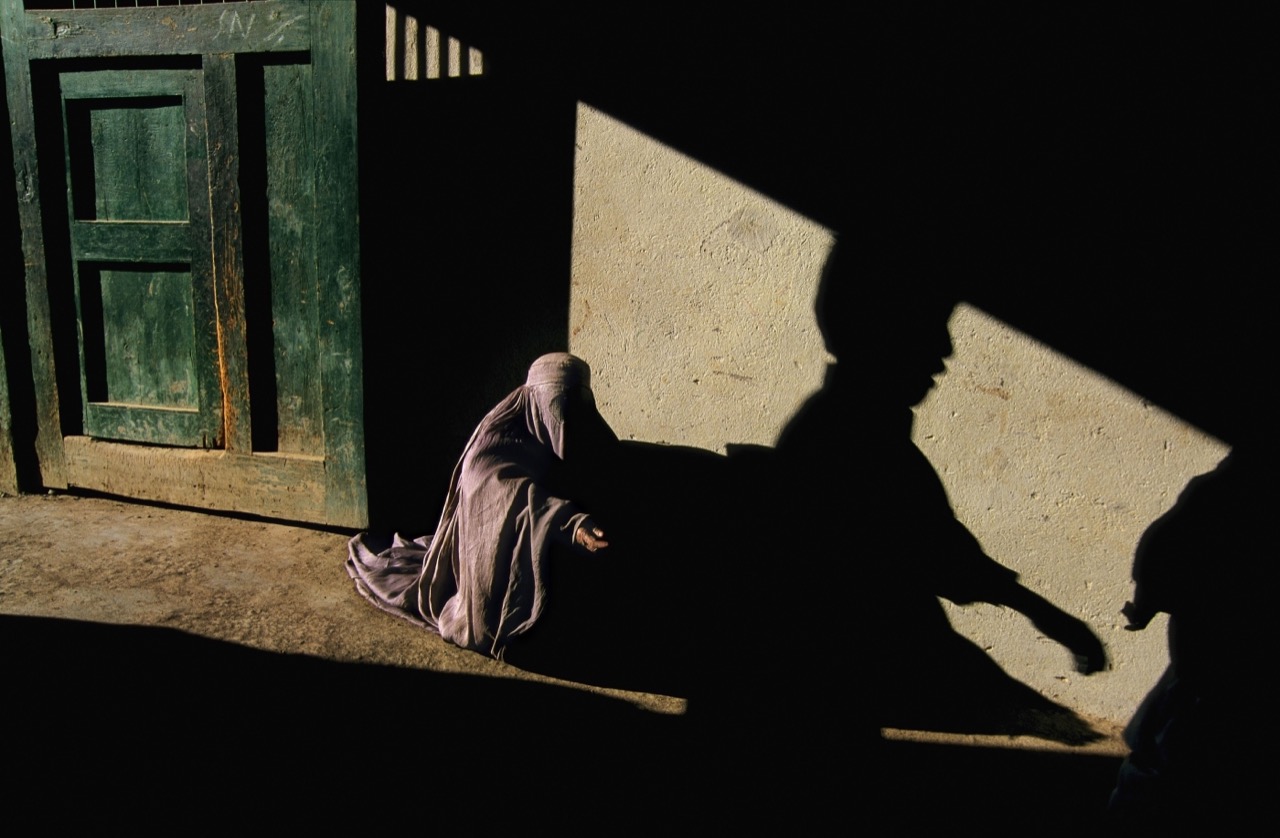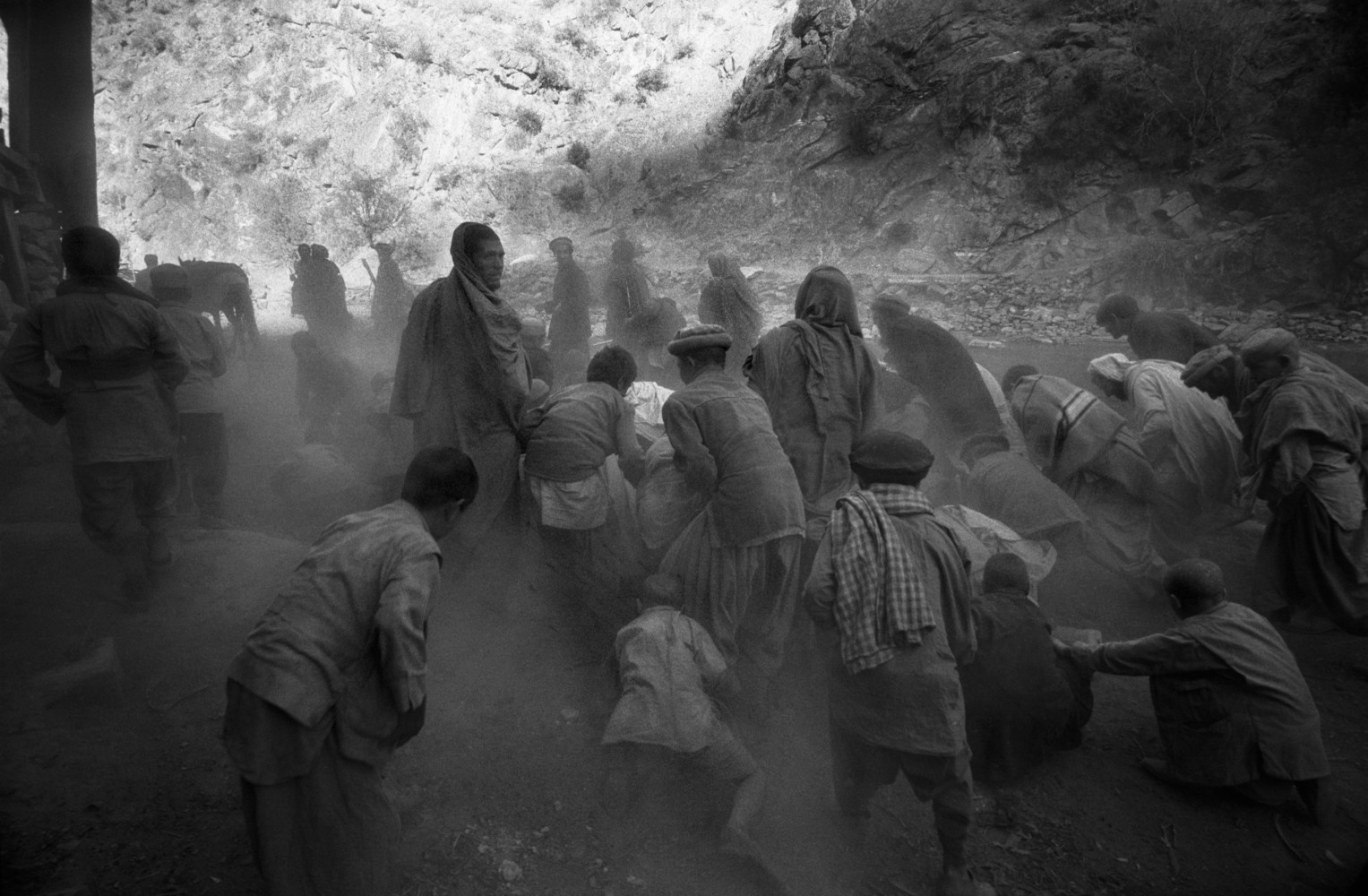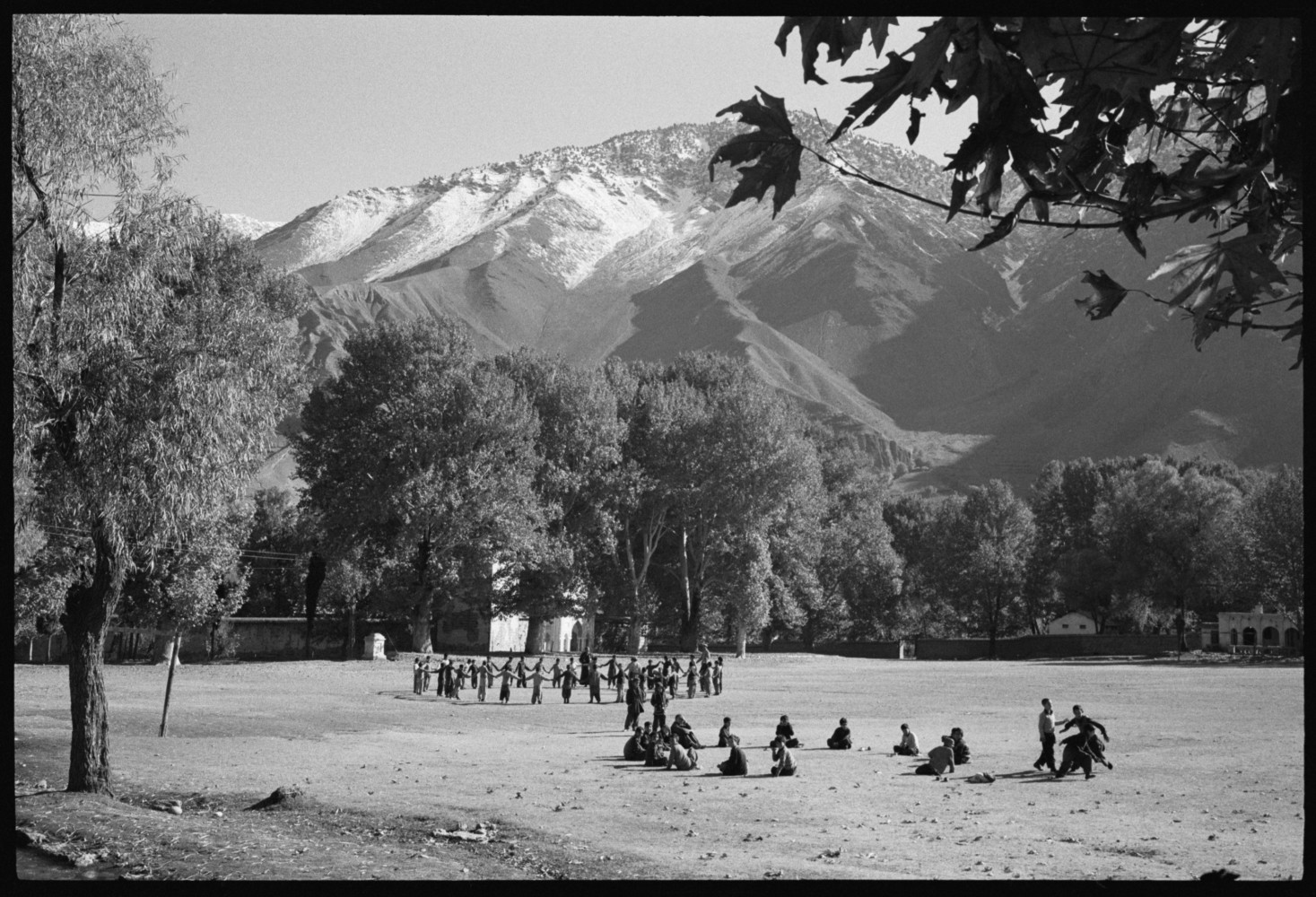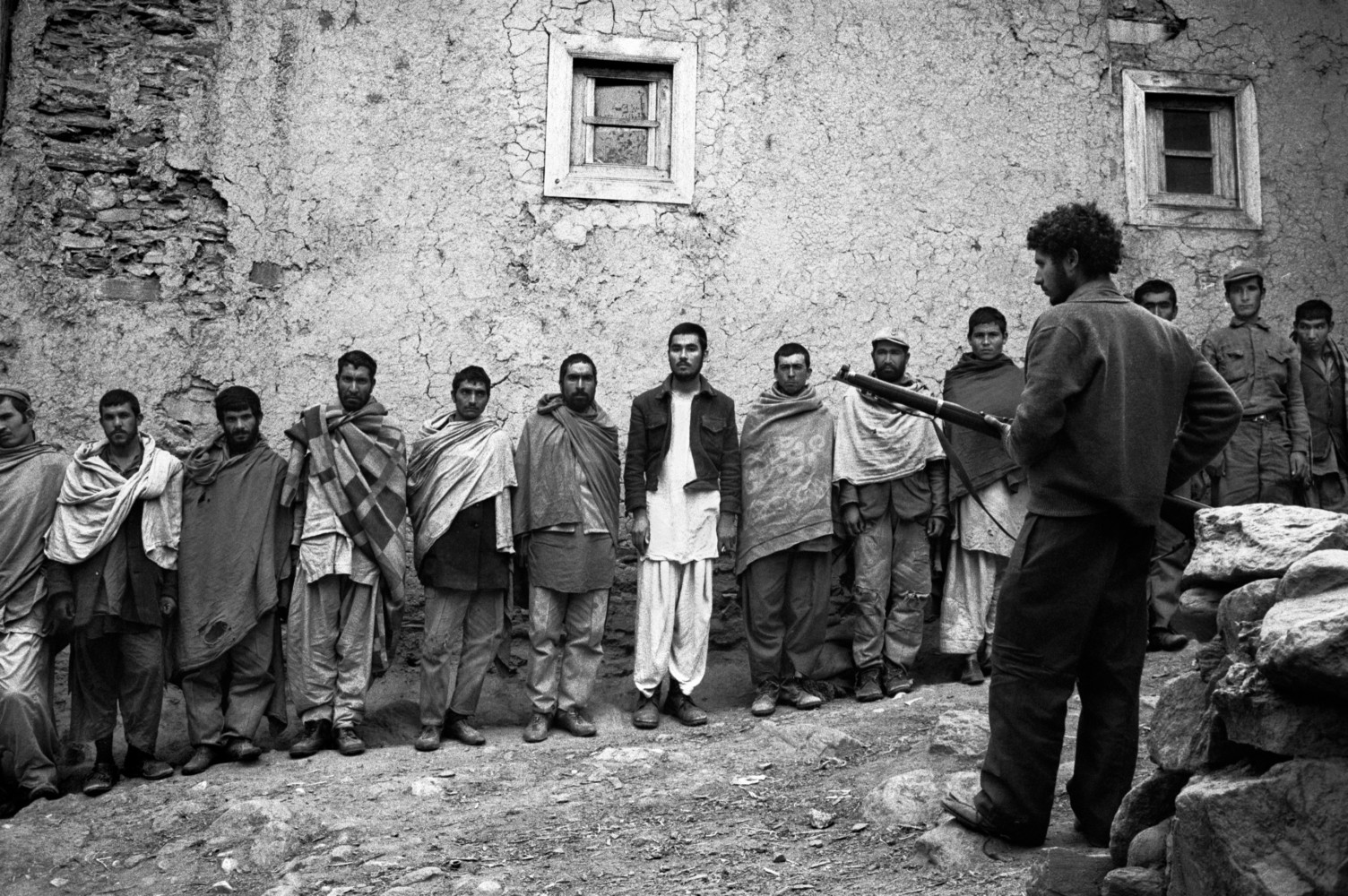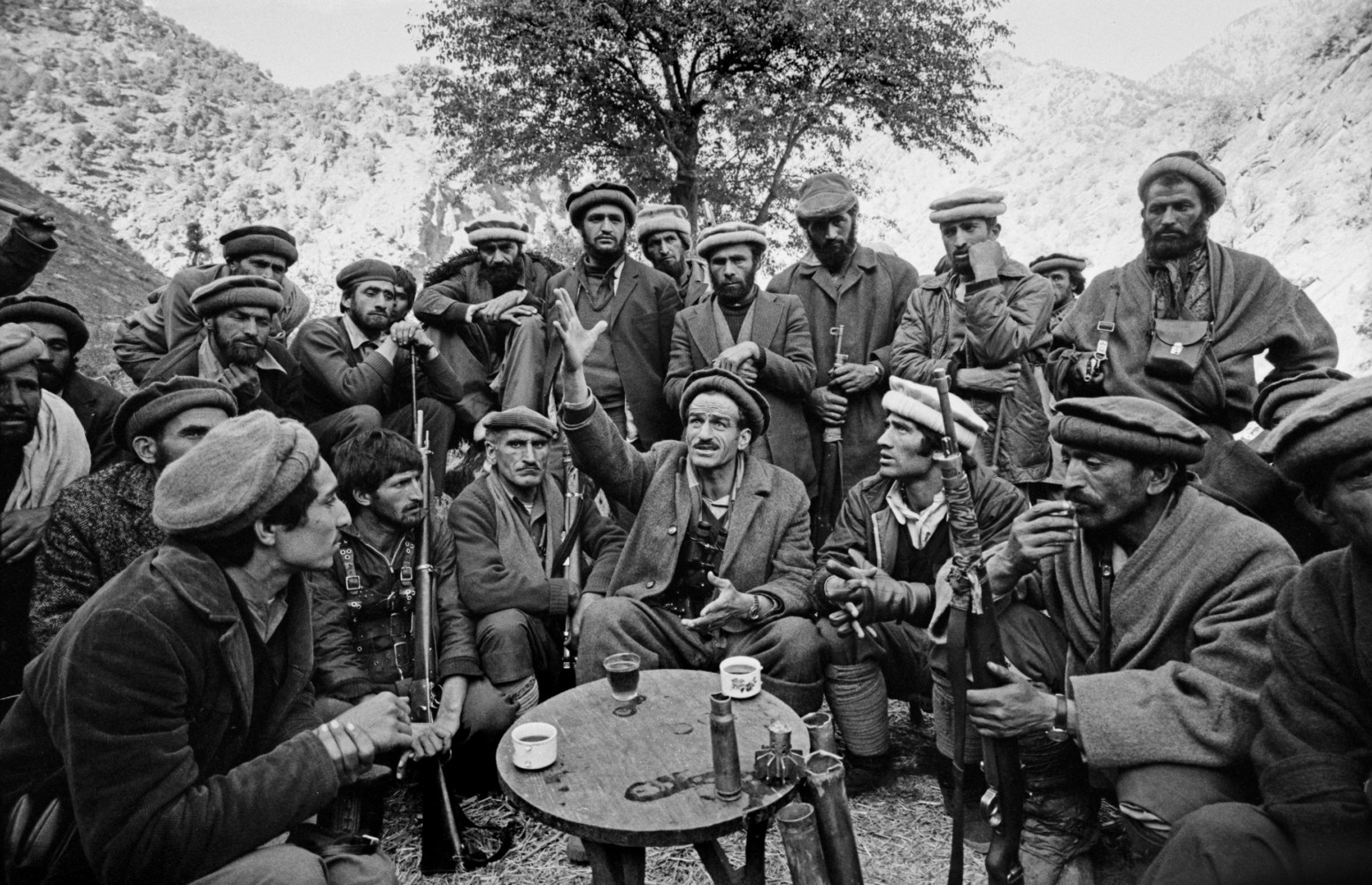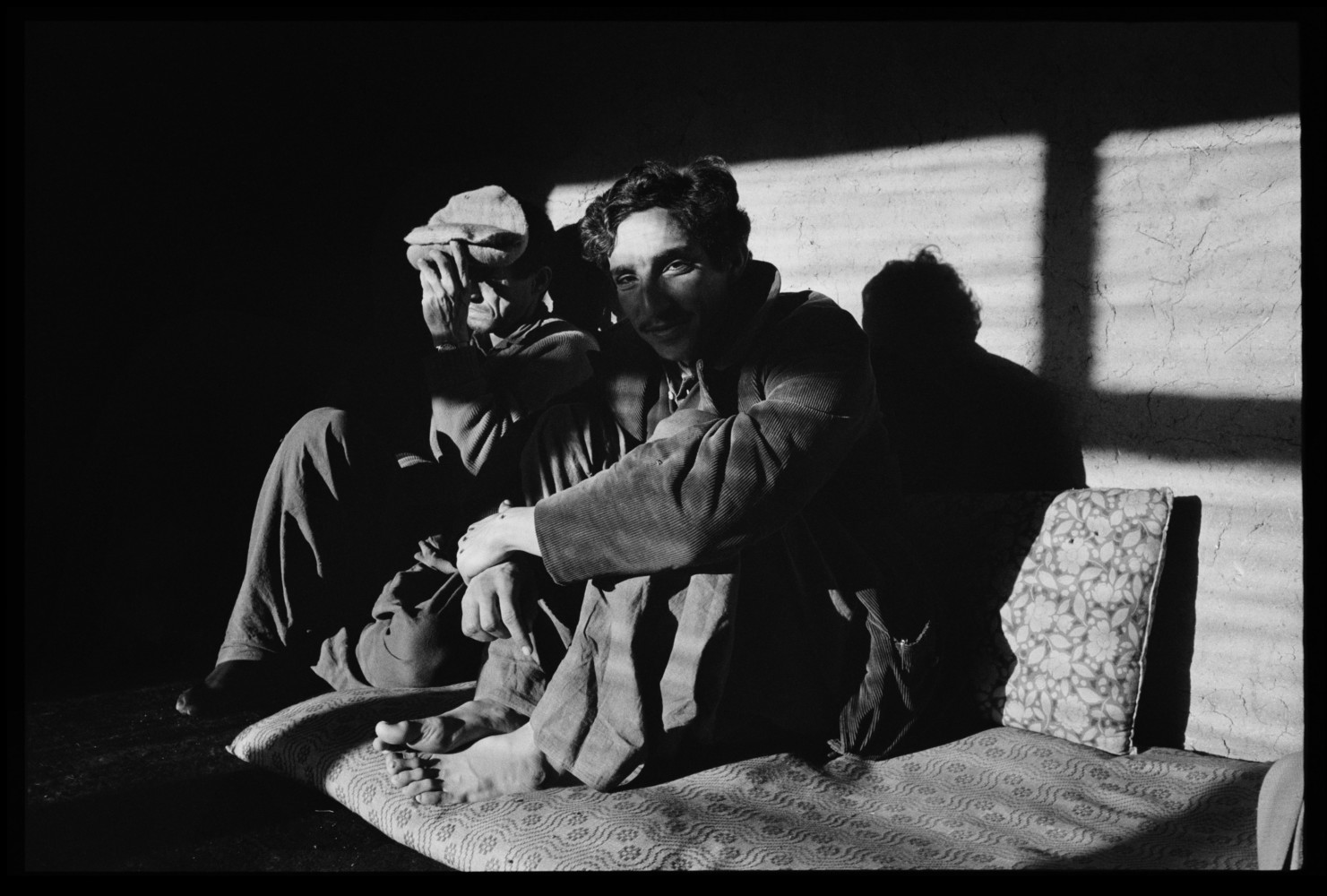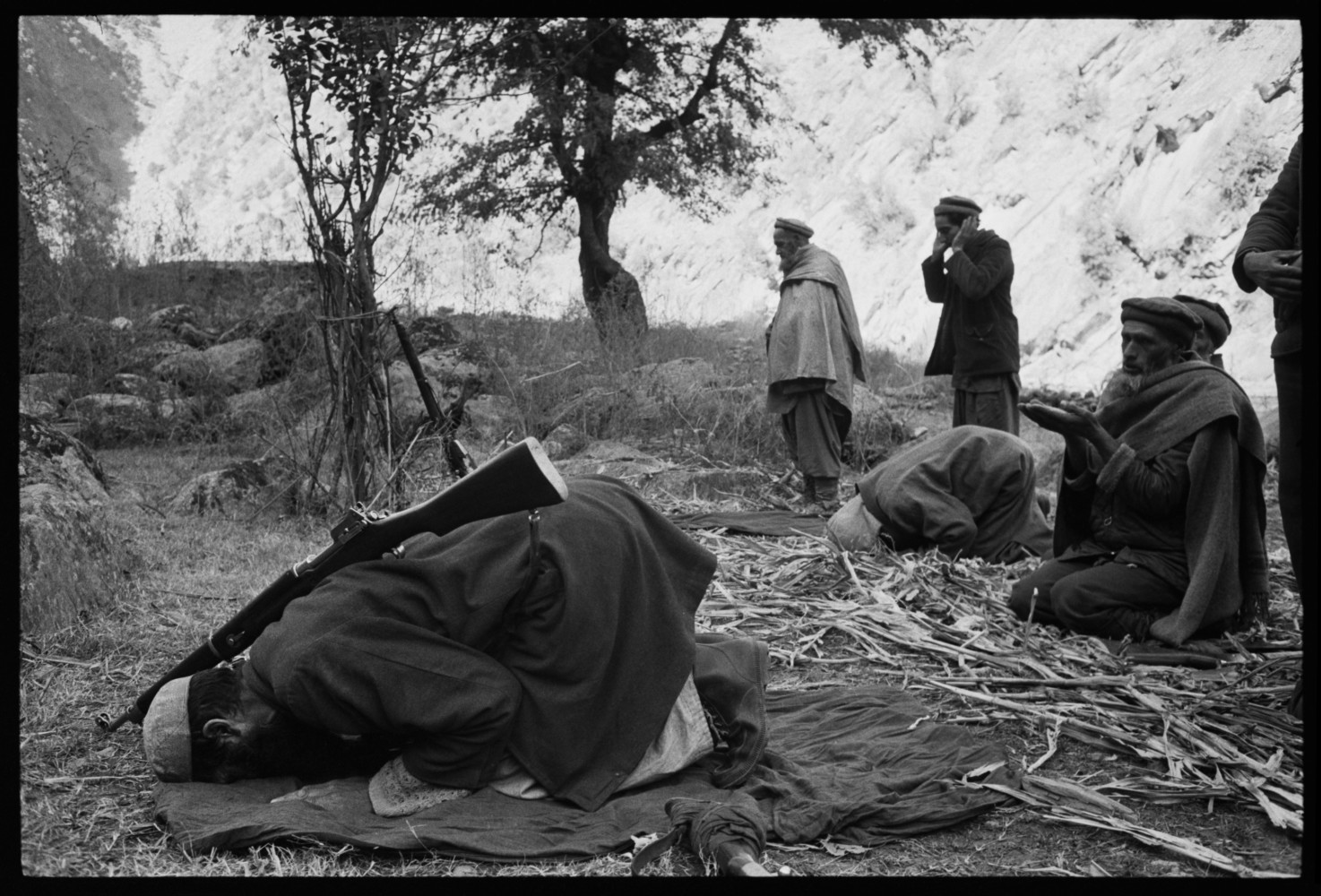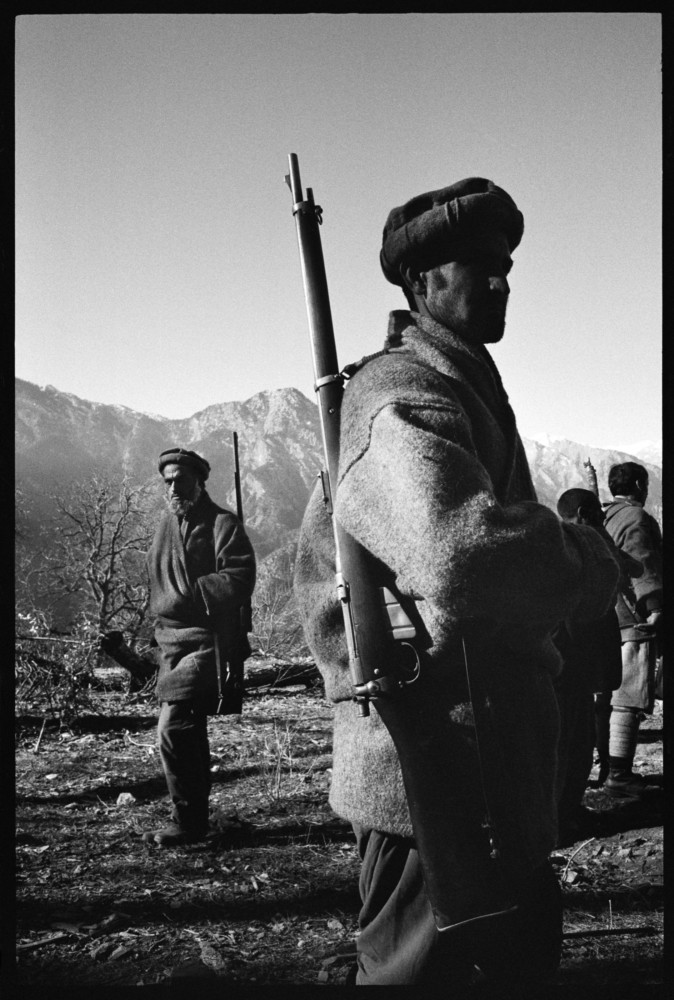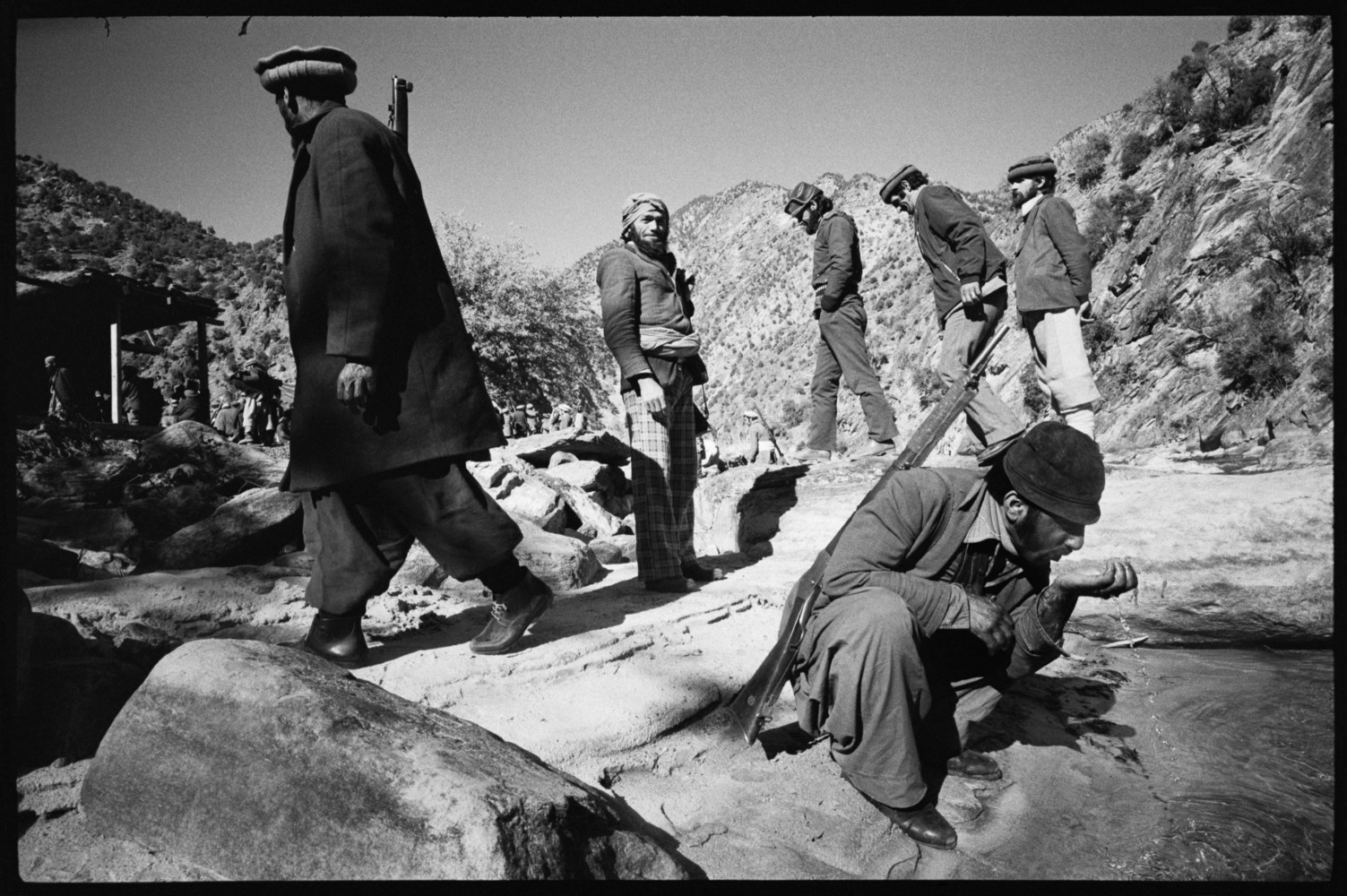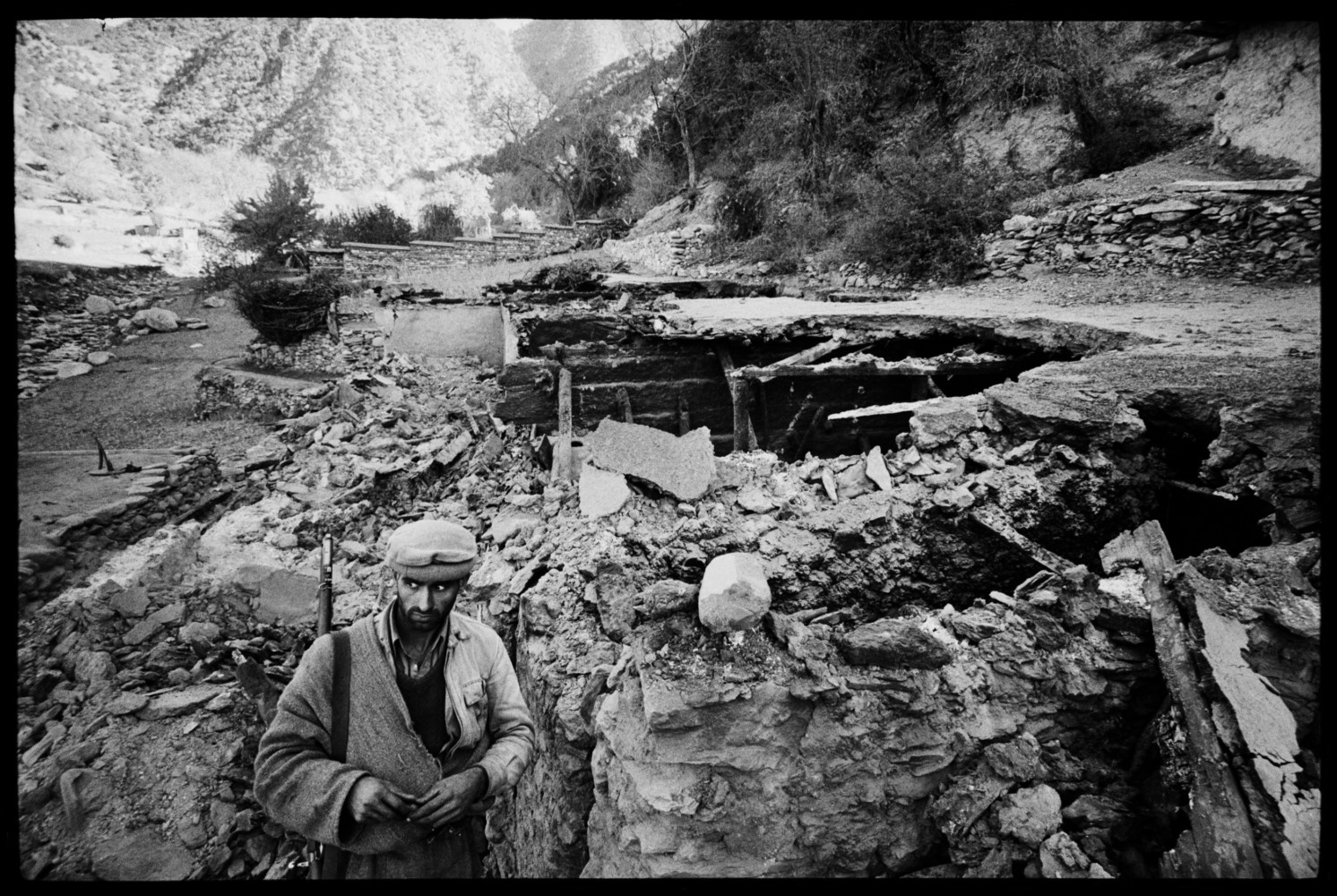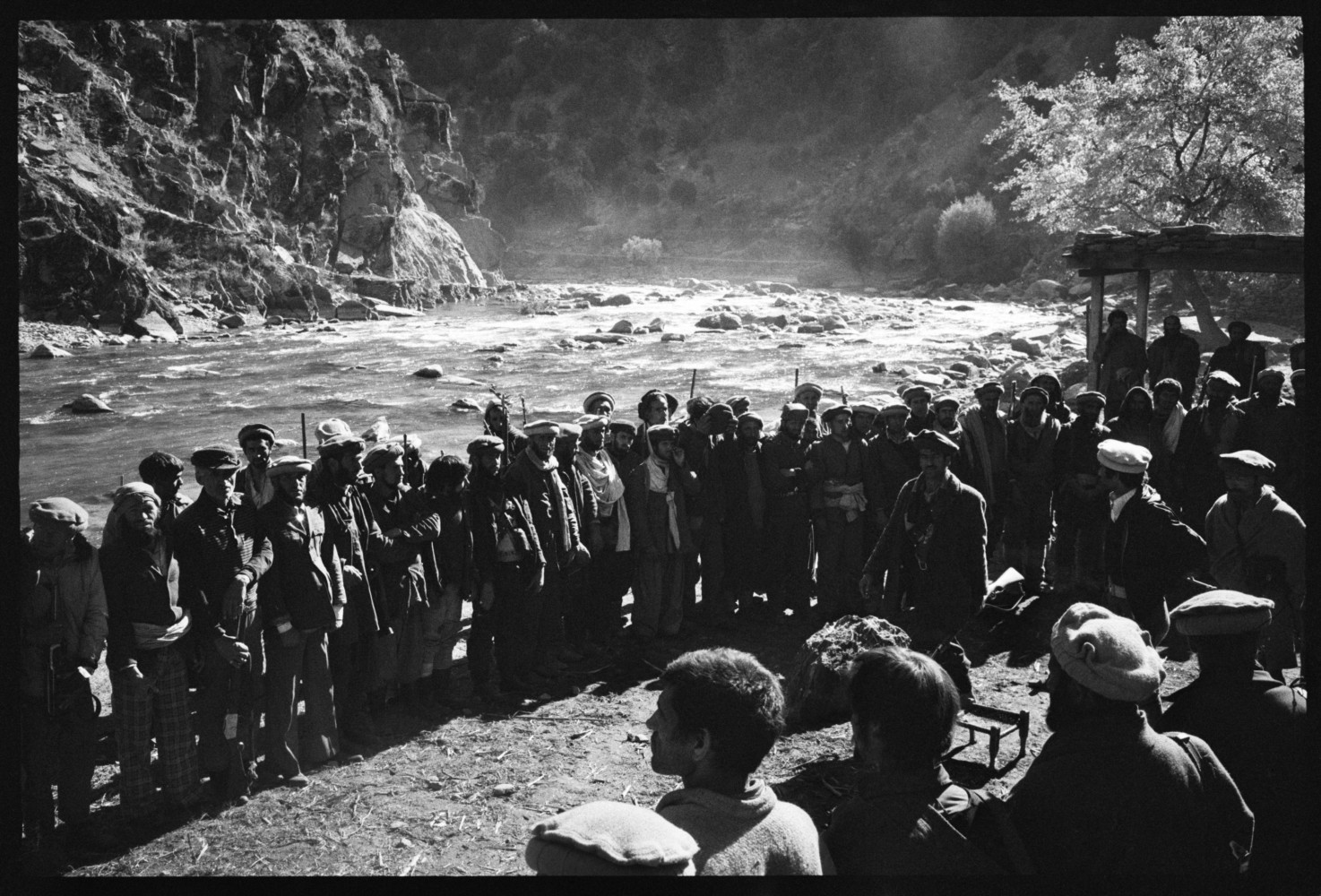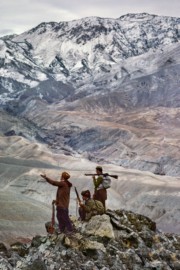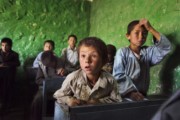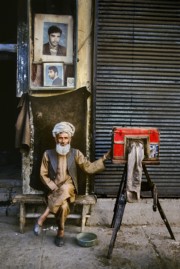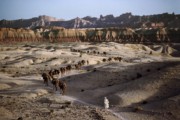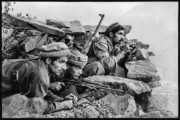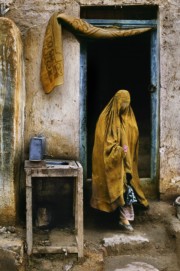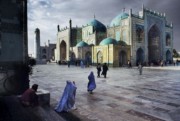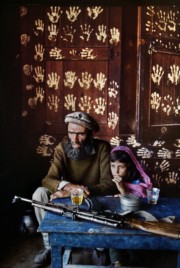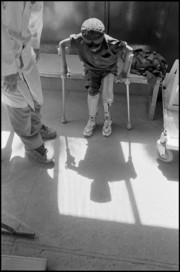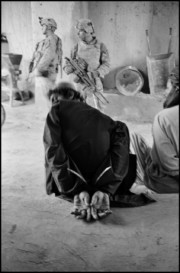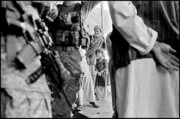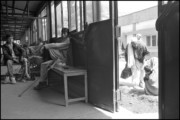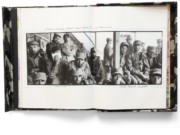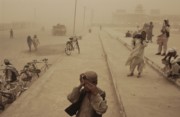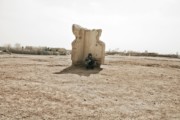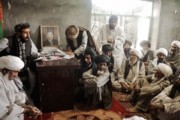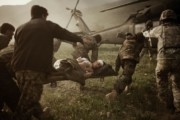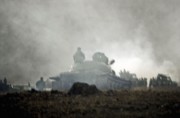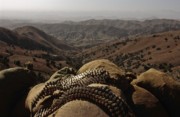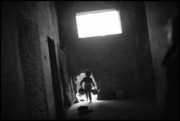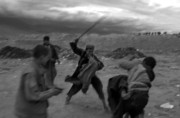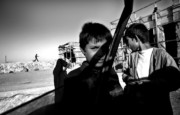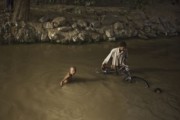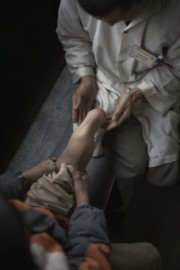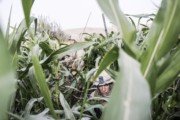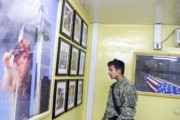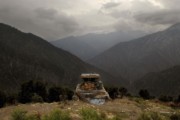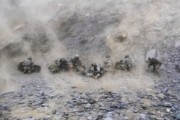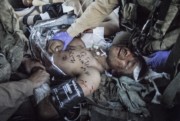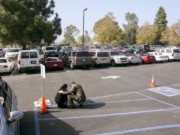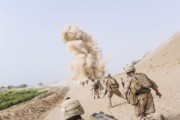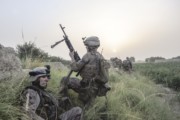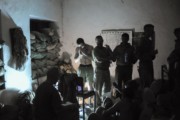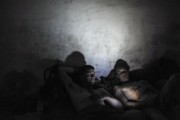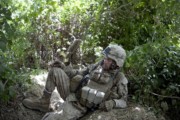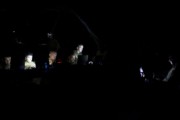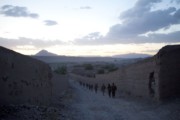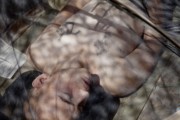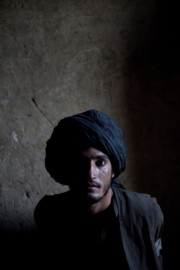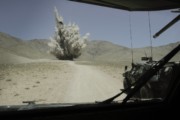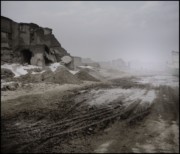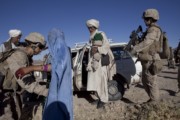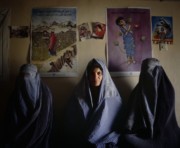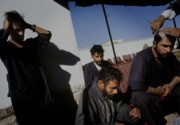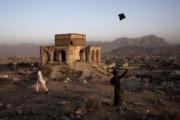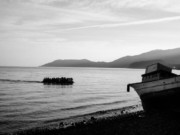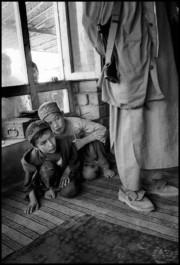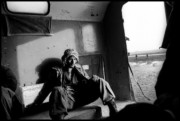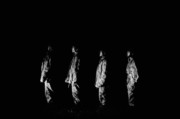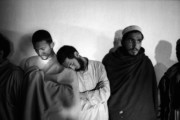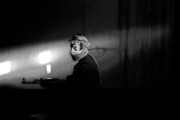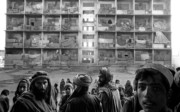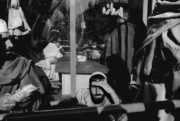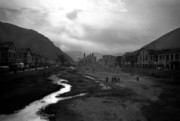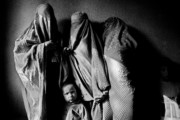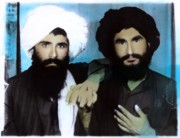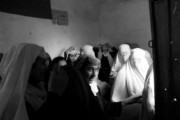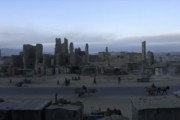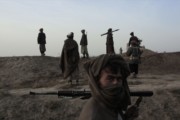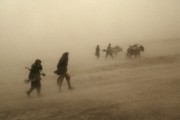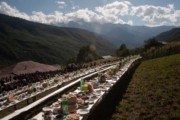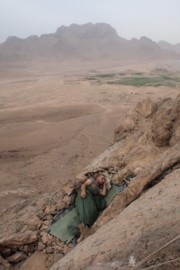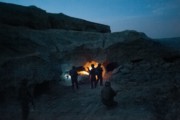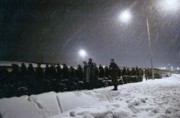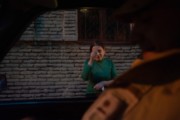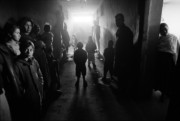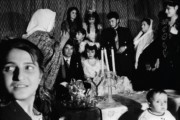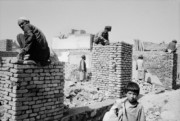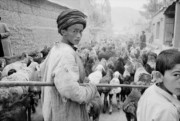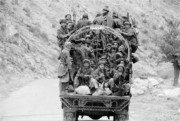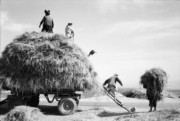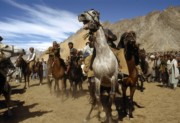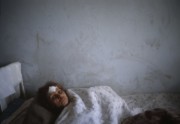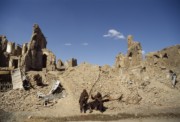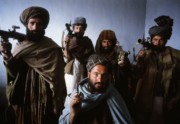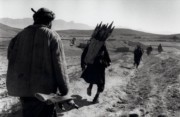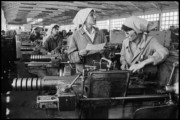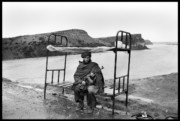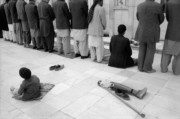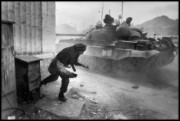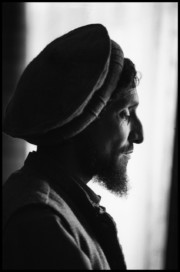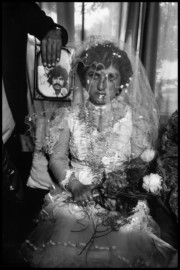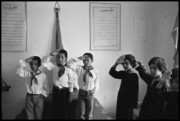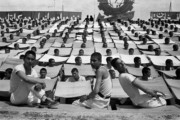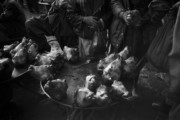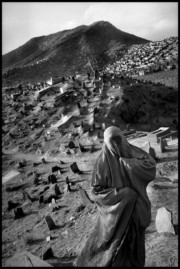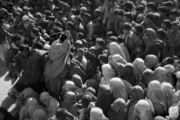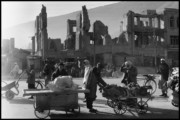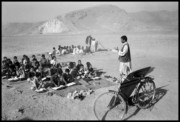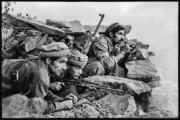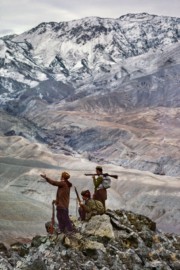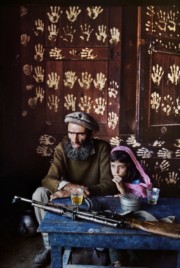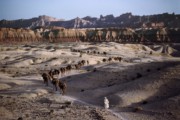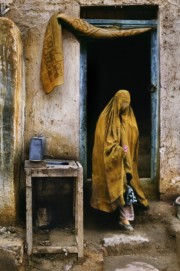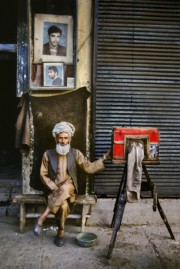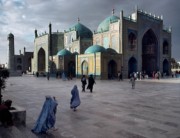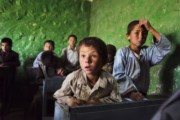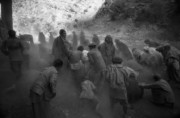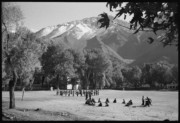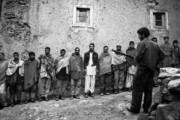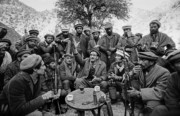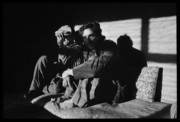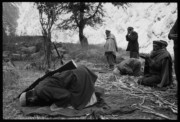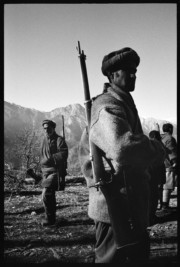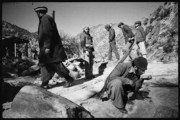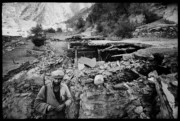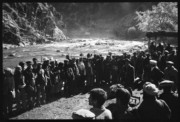Peter van Agtmael Marines rush towards a ditch under fire during a large firefight on a foot patrol south of Mian Poshtay. Minutes before, a local farmer had warned the Marines that there were Taliban hidden in the (...)
treeline. As the Marines moved through the cornfields, the Taliban launched an attack with small arms and RPG's. The fight went on for two hours, with the Marines calling in helicopter gunships. No marines were killed or wounded, and there were two suspected Taliban deaths. © Peter van Agtmael | Magnum Photos
Peter van Agtmael | NYC82002 Afghanistan. Jalalabad. 2007. Lieutenant Erik Malmstrom turns away from photographs of three of his soldiers killed in a Taliban ambush in the Waigul Valley on August 11, 2006. By the end of the de (...)
ployment Malmstrom’s brigade had lost more men than any single unit in Afghanistan since the war began. © Peter van Agtmael | Magnum Photos
Peter van Agtmael USA. North Ogden, Utah. 2019. Jennie Taylor measures a tombstone for the grave of her husband, Brent. She wasn’t home when the casualty notification team arrived at her door and received a cell pho (...)
ne call to go to the National Guard headquarters. As her sister drove her, she wrote, “If he is dead, I have to process this. I don’t have a choice. I can’t fall apart. My kids matter most.” She said she knew he was dead when she arrived and no one would look her in the eyes. Major Abdul Rahman Rahmani, an Afghan army helicopter pilot who worked with Brent, posted a letter addressed to Jennie that outlined his admira- tion, calling Brent a “compassionate man whose life was not just meaningful, it was inspirational.”
The community of North Ogden, where Brent was mayor, gave enor- mous financial support, raising $500,000 for the family, while a foundation paid off the remaining $250,000 of their mortgage. A local car dealership gave Jennie a new car. © Peter van Agtmael | Magnum Photos
Peter van Agtmael Afghanistan. Waigul Valley, Nuristan. 2007. A U.S. Blackhawk helicopter lands at the Ranch House, a small American outpost deep in the mountains of eastern Afghanistan. There were no decent roads a (...)
nd all medevacs, re-supply and transport were done by helicopter. Blackhawks were in short supply, forcing the U.S. military to turn to outside contractors. They
rented ex-Soviet helicopters, rickety and ancient and known as “Jingle Air.” They came with pilots, some of whom had served in the Russian Army during the previous war in Afghanistan. They were storied figures, legendary for their bravery under fire and rumored to be heavy vodka drinkers in flight. © Peter van Agtmael | Magnum Photos
Peter van Agtmael Afghanistan. Eastern Afghanistan. 2007. This Afghan soldier was badly injured by an IED. He awoke during the medevac flight, disoriented and terrified. He pitched his head back and shrieked, “Allah (...)
, Allah, Allah, Allah,” pausing only to catch his breath. When Julio tried to push pain medication through the IV, the Afghan bit him in the arm and then leapt up and tried to wrench the helicopter door open at five thousand feet. The flight crew and I jumped on him. He writhed wildly as we each grabbed a limb and forced him back down to the bed of the helicopter. Julio put a knee on his chest and jabbed a sedative into him. He quieted. Julio didn’t expect the man to survive the operating table. © Peter van Agtmael | Magnum Photos
Peter van Agtmael USA. Torrance, California. 2007. Simone Ferrara before her brother Matthew's funeral. Lieutenant Matthew Ferrera was killed by insurgents while commanding a platoon in the remote Waigul Valley on t (...)
he Af-Pak border. The valley was a major transit point for insurgents, so a small outpost was set up by Lieutenant Erik Malmstrom with a platoon of thirty soldiers. In an effort to win hearts and minds he met regularly with tribal elders of Aranas. His unit built a school, installed a small hydroelectric dam that brought Aranas electricity for the first time, and began constructing a road to the nearest regional center. Early on in Malmstrom's deployment an insurgent attack killed and wounded 20 percent of his men, but his development efforts eventually won the guarded approved of the village elders and the platoon served out the rest of its deployment in relative peace. Ferrara was his replacement, and the insurgents took advantage of the inexperienced newcomers. Disguised as Afghan security forces, they launched a major attack and breached the base. Ferrara was forced to call in an air strike on his own position. In the end, the attackers were driven off, but not before two Afghan soldiers were killed and eleven of Ferrara's men were wounded. On November 9, 2007, Ferrara was on his last patrol before being reassigned to battalion headquarters. He and his platoon were ambushed by a large number of insurgents. Ferrara was shot in the head and killed along with five other Americans and three Afghans. He was 24 years old.
Following the ambush, the Waigul Valley returned to insurgent control. In June 2008, the Americans made one more attempt to reestablish a military presence. Nine Americans were killed when their unfinished outpost was attacked from the nearby town of Wanat. Ferrara's funeral was held in Torrance, California, a suburb of Los Angeles. Hundreds attended. His sister Simone said it felt like someone else's funeral. © Peter van Agtmael | Magnum Photos
Peter van Agtmael Afghanistan. Mian Poshteh, Helmand. 2009. A few minutes earlier, Marines on patrol had noticed some suspicious activity. A motorcycle had driven by slowly, the driver staring at them intently. From (...)
a nearby ditch there was clearly someone watching their movements. As the troops walked down the road, an IED exploded and several men disappeared into the cloud, but no one was killed or badly hurt. The Marines gathered themselves and crossed a dry irrigation canal to another road. The
commander ordered five men from the town to come to their position. Five village elders complied warily. The radio picked up chatter among the Taliban suggesting another bomb was hidden by the road. At gunpoint the commander questioned the men. To one old man he yelled, “That bomb went off because you didn’t stop them!” The man responded, pleadingly, “I don’t know anything, so how could I stop it?” The commander waved him off, “Alright, get away from here, alright.” After questioning the elders, the Americans forced them to form a human shield. The Afghans were told to fan out across the road and walk forward in tandem. The Marines followed cautiously behind. As reporter Dexter Filkins and I began documenting these actions, the Marine commander halted the patrol and decided to return to base. © Peter van Agtmael | Magnum Photos
Peter van Agtmael Marines rush towards a ditch under fire during a large firefight on a foot patrol south of Mian Poshtay. Minutes before, a local farmer had warned the Marines that there were Taliban hidden in the (...)
treeline. As the Marines moved through the cornfields, the Taliban launched an attack with small arms and RPG's. The fight went on for two hours, with the Marines calling in helicopter gunships. No marines were killed or wounded, and there were two suspected Taliban deaths. © Peter van Agtmael | Magnum Photos
Peter van Agtmael Afghanistan. Mian Poshteh, Helmand. 2009. Marines debrief after a patrol. Their patrols were accompanied by an Afghan translator. The Afghan, who gave his name as “Rocky,” was a contractor who had (...)
moved to America when he was a child. He joined the U.S. Army but despite being fluent in Pashto and Dari, the two most common languages in Afghanistan, he was deployed twice to Iraq, a country where neither language is spoken. When he left the Army he was hired as a contractor—where he earned a far higher wage—and was sent to Afghanistan as a translator. © Peter van Agtmael | Magnum Photos
Peter van Agtmael Afghanistan. Mian Poshteh, Helmand. 2009. The Marine on the left, Corporal Matt Kaiser, had nearly been killed by an IED earlier that day. He was sweeping the road with a mine detector when the dir (...)
t exploded in front of him. He staggered back saying, “God, I’m still here,” and clutching his ears. He laughed and for the rest of the day couldn’t hear much and talked way too loud. It was the second time in just a few weeks he’d nearly been killed by a bomb. © Peter van Agtmael | Magnum Photos
Peter van Agtmael USA. Glen, Mississippi. 2010. Rosie Ricketts wakes up her son Aiden before the viewing of her husband Seth, killed in Afghanistan the previous week. The temporary coffin carrying Seth Ricketts arri (...)
ved at Dover Air Force Base on March 2. The bodies of dead soldiers are brought back to Dover and their families are often on hand to attend a
brief ceremony as the flag-wrapped cases are removed from the plane and taken to the mortuary. The ban on media coverage of these transfers, in place during the Bush Administration, was lifted in February 2009 when Secretary of Defense Robert Gates ruled it was the families’ choice if the press should be allowed to photograph the return of their dead. In general, about half the families consent to coverage. © Peter van Agtmael | Magnum Photos
Jérôme Sessini Afghanistan. Helmand Province. June 20, 2010.
U.S. marine in Griffin forward operating base, Lance Cpl. William T. Richards. Six days after this photo was made, Lance Cpl. Richards died on patrol (...)
after stepping on an IED. On Sunday morning, 1st Lt. Scott Cook led a squad in an operation further to the north of Karamanda, still under the control of the Taliban. The squad was fired upon by the Taliban 15 minutes after the Marines had left the base. A four-hour firefight took place to push the Taliban away. © Jérôme Sessini | Magnum Photos
Jérôme Sessini Afghanistan. Helmand. June 16, 2010.
Griffin is a Patrol Base near Karamanda village. The marines pushed away the Taliban from the area. They make daily patrols all around and search for road side (...)
bombs. They also try to have communication with the locals. They have sporadics firefights with the Talibans, who stay at no more than 500 meters away from the FOB © Jérôme Sessini | Magnum Photos
Jérôme Sessini Afghanistan. Helmand. June 13, 2010.
Griffin is a Patrol Base near Karamanda village. The marines pushed away the Taliban from the area. They make daily patrols all around and search for road side (...)
bombs. They also try to have communication with the locals. They have sporadics firefights with the Talibans, who stay at no more than 500 meters away from the FOB. © Jérôme Sessini | Magnum Photos
Jérôme Sessini Afghanistan. Helmand. June 14, 2010.
Suspected Taliban fighters detained by marines.
Marines of PB (patrol base) Griffin conduct a complex ambush in Tukuts. During the operation 3 people were det (...)
aineed, one was killed and two were wounded during a brief firefight. 27 people were grabbed by the ANP and ANA. © Jérôme Sessini | Magnum Photos
Thomas Dworzak Afghanistan. Takhar province. Village of Dashti Kola. October 10th, 2001.
Village at the frontline.
Northern Alliance soldier and local Uzbeks from a village on the Taliban controlled side of the (...)
frontline. The Uzbeks come to trade via secret routes to cross the frontline.
This is a digitally shot photo. The file can not exceed 9 mega (300 dpi), which permits quality printing up to 15x20 cm (8x5 inch) format. © Thomas Dworzak | Magnum Photos
Thomas Dworzak Germany, Bavaria, 2010/2. US/NATO training base Hohenfels. After completing a two-week training Georgian troops return to Georgia to deploy to Afghanistan. A military priest blesses them before tra (...)
velling. Due to the heavy snowfall many half-joked that they were “training to invade Russia”. © Thomas Dworzak | Magnum Photos
